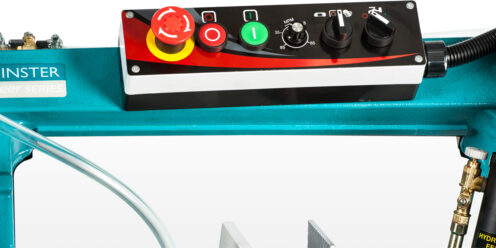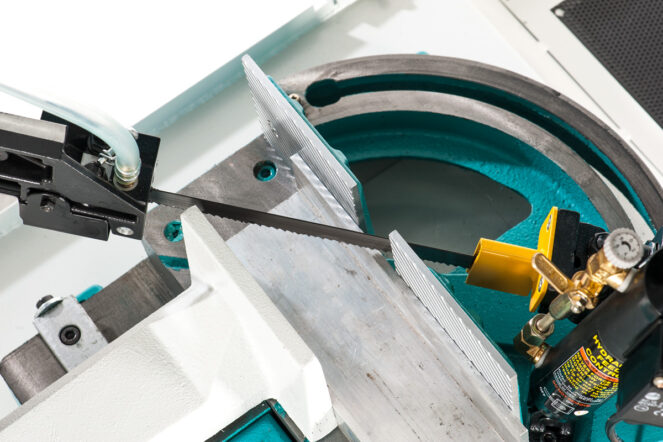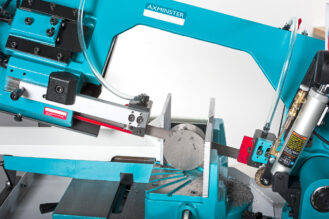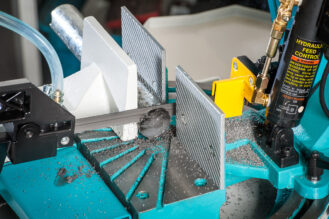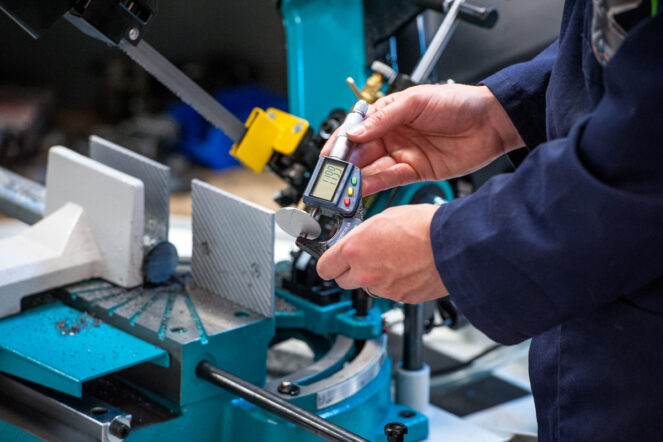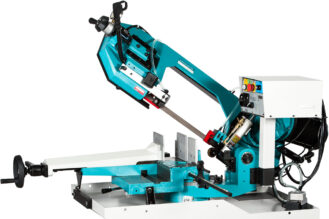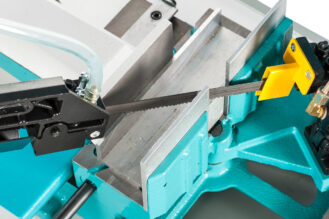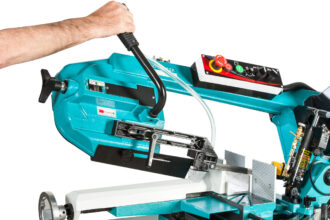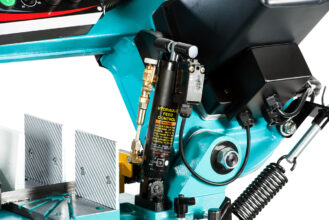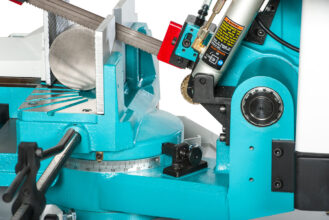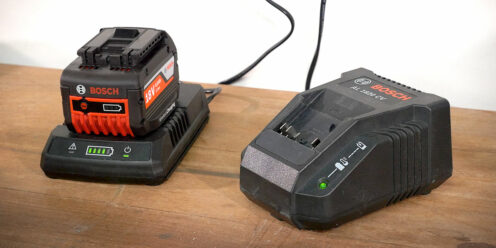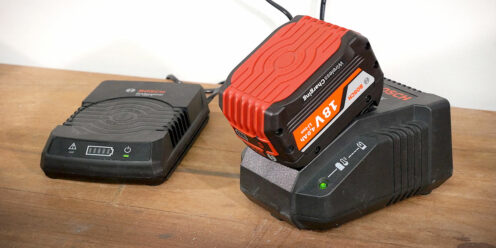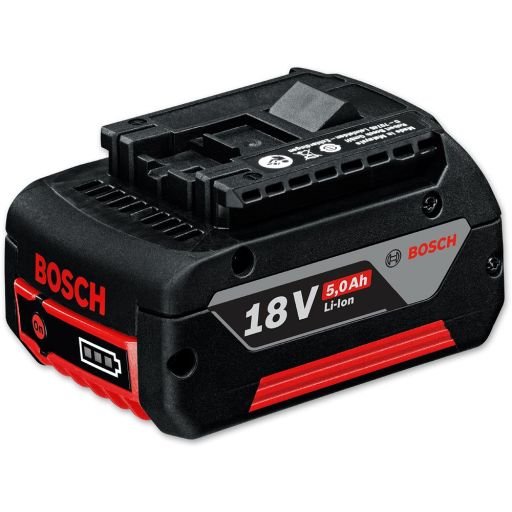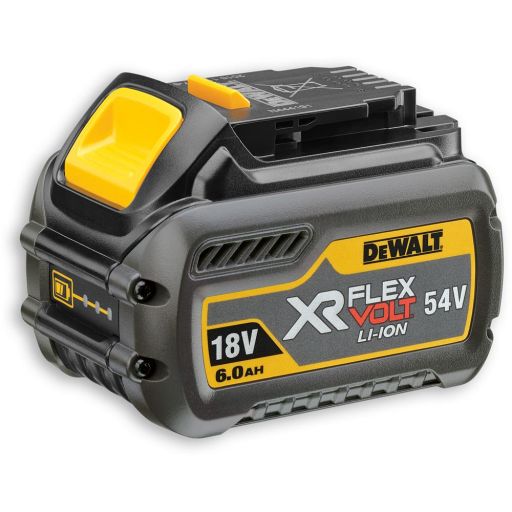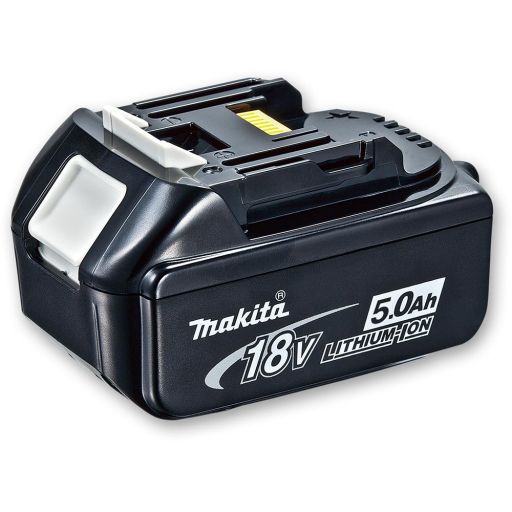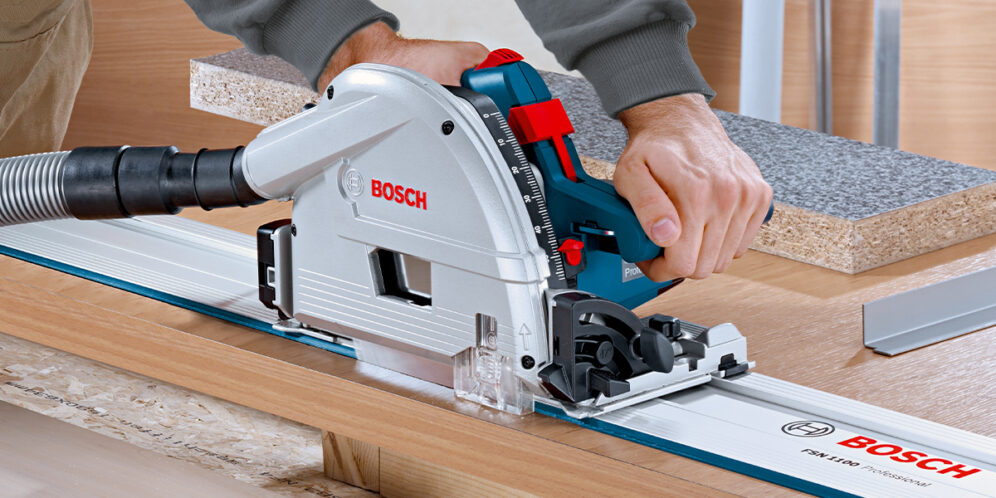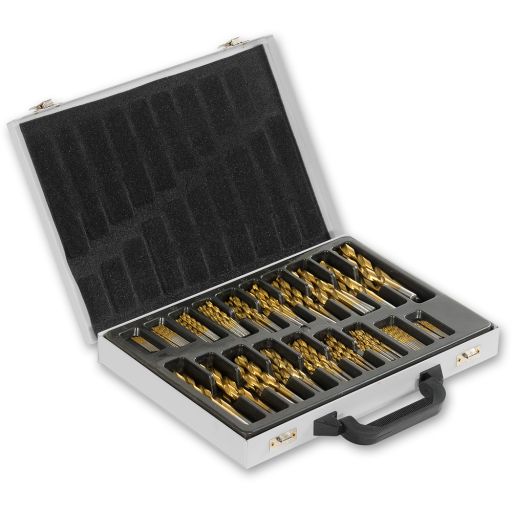Variable Speed Motor Drive
Both models are variable speed but have differing ways of getting them. The smaller UV-180DS has a direct drive variable speed system whereas the large WV-275DS possesses an inverter drive. Not only will this give you great flexibility on material choice but also enables correct cutting speeds for each one, prolonging blade life. On both models, variable speed is controlled easily through simple control panel.
Swivelling Bow (Dual Mitre Cutting)
With the ability to swivel through 0° - 45° L and 0° - 60° R, it's very easy to complete accurate mitre cuts on these machines. The head swivels with ease and the scale and locking clamp ensure that you can get the cut at just the right angle. This dual mitre cutting feature enables a multitude of cuts to be performed and is especially good on non-symmetrical material.
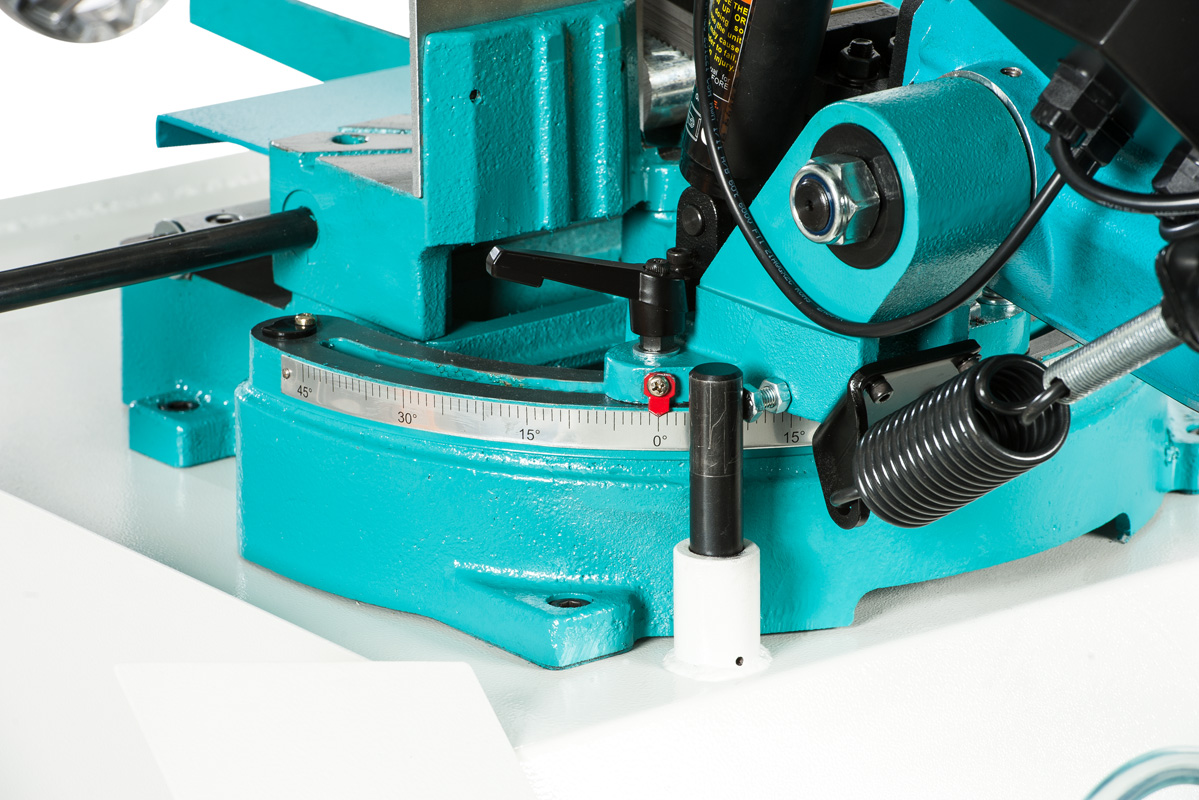
Sliding vice
People may wonder why a vice is a key feature on a metal cutting bandsaw. But when you have a dual mitre cutting feature, a sliding vice is of vital importance. This will ensure the workpiece is held down firmly, no matter what the angle of the cut.
Let's get technical
| Model | UV-180DS | WV-275DS |
|---|---|---|
| Max capacity (45°) | 140mm diameter 140 x 150mm |
150mm diameter 145 x 145mm |
| Max capacity (60°) | 100mm diameter 90 x 100mm |
90mm diameter 85 x 85mm |
| Max capacity (rectangular) | 165 x 230mm | 260 x 110mm |
| Max capacity (round) | 180mm | 227mm |
| Motor size | 0.75KW (1HP) | 1.1KW (1.5HP) |
| Blade speeds | Variable 35-85m/min | Variable 20-85m/min |
With these key features plus many more, we're sure that these saws will prove a big hit. Ruggedly built of cast iron, they will be able to withstand the rigors of the busy fabrication or general engineering workshop with ease. If you're in the market for something of this calibre, you should look no further.
Introducing two new metal cutting bandsaws to the Axminster Engineer Series range. Both with the versatility to perform in a number of different sectors.
 Dust extractors, do I really need one?
Dust extractors, do I really need one?
If you're still sitting on the fence, working with a good dust extractor has so many benefits. Here are five fundamental reasons to own one.
- Removing material from the work surface gives you a clearer line of sight. Ultimately the finished product is more precise.
- Your work rate accelerates and so the job gets done faster.
- Do you hate cleaning up? Dust extraction is another time saver that helps to reduce this.
- A longer life for tools and accessories. Less dust goes into the motor and accessories like sandpaper won't clog as often.
- Your health! Dust in whatever form it takes does serious damage to your lungs. So let the extractor breath it in, not you.
Here are two interesting videos from the Health and Safety Executive. These show the amount of dust that could be creeping into a person's lungs without extraction.
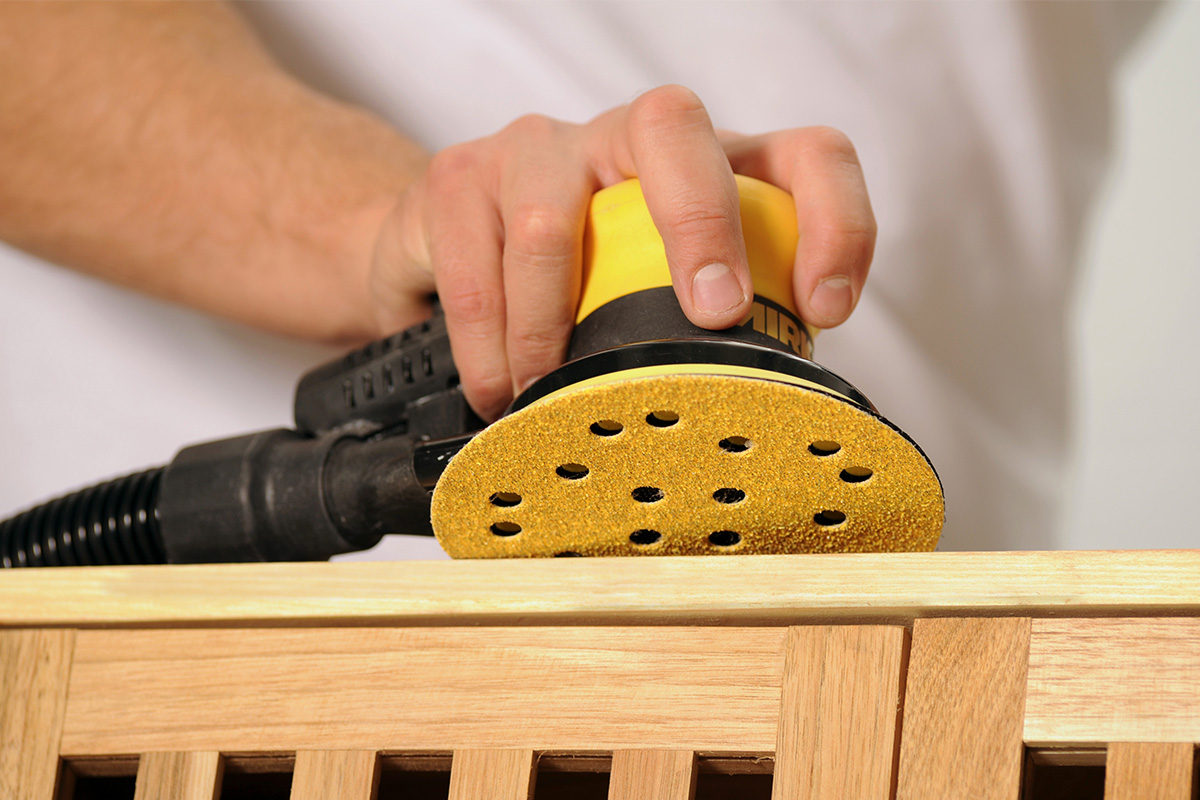
Doing the dirty work for you
Festool has carried out research into how much time you can actually save by using extraction. After conducting a survey with 300 UK tradespeople they found that people typically spend one to two hours tidying up after a job. This can amount to up to four days a month cleaning up. Something to think about, especially when you consider your daily rate and how much time you could save with an extractor doing most of the work for you.
People that use extraction on a job also comment how they've received referrals for work because of how clean they are. Sure, the quality of work is fundamental. But if you're going in and working on someone's kitchen or bedroom the last thing they want is a load of dust blowing through the house. Perhaps another reason to clean up your act?
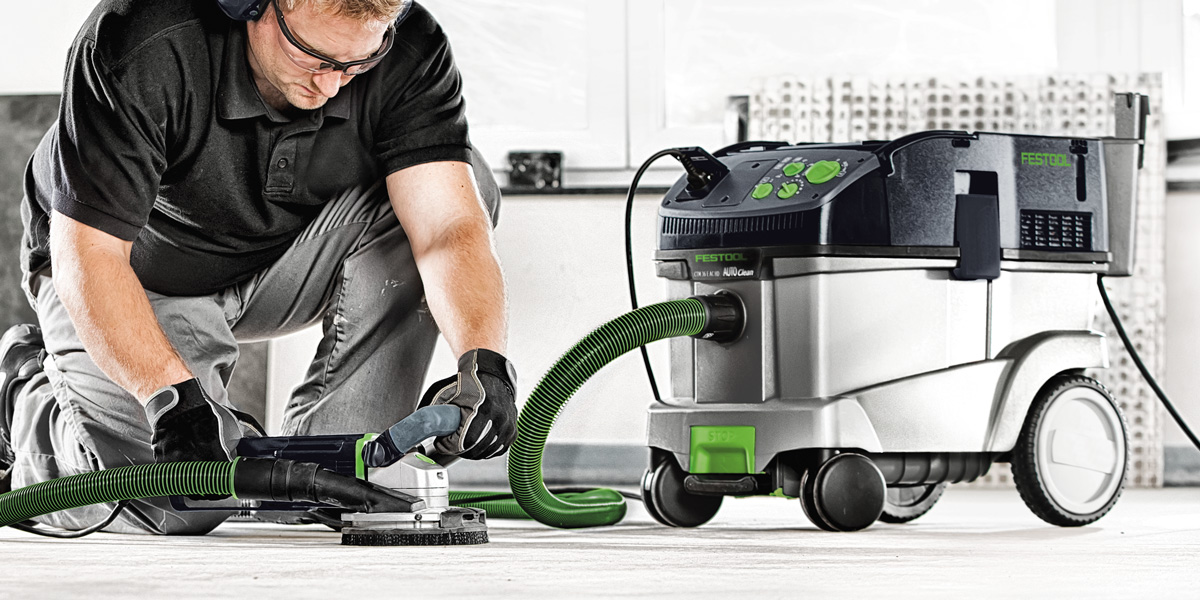
OK, so what dust extractor do I need?
Dust extractors fall into three main categories, L, M and H. These categorise the dust you're working with into how harmful it is, either, low, medium or high. There are many articles and discussions surrounding what type of dust extractor is needed in the work place. The most credible source for greater clarity on the subject is the Health and Safety Executive (HSE). As Britain’s independent regulator for work-related health, safety and illness the HSE has published two guides that are essential reading for choosing the right extractor for your needs.
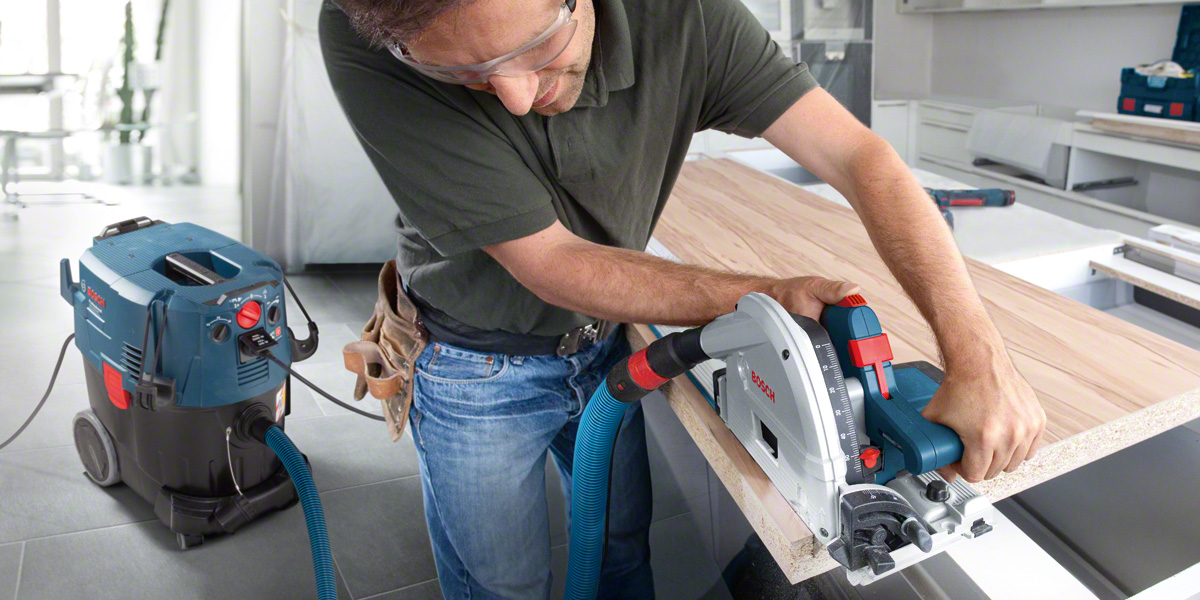
Sometimes these technical guides can be hard going, but these are easy to follow and well worth a read.
On-tool extraction dust control
A useful guide for selecting, operating and maintaining on-tool extraction.
On-tool extraction dust control
Clear information on how to suitably control dust risks including wood dust, silica dust and lower toxicity dust.
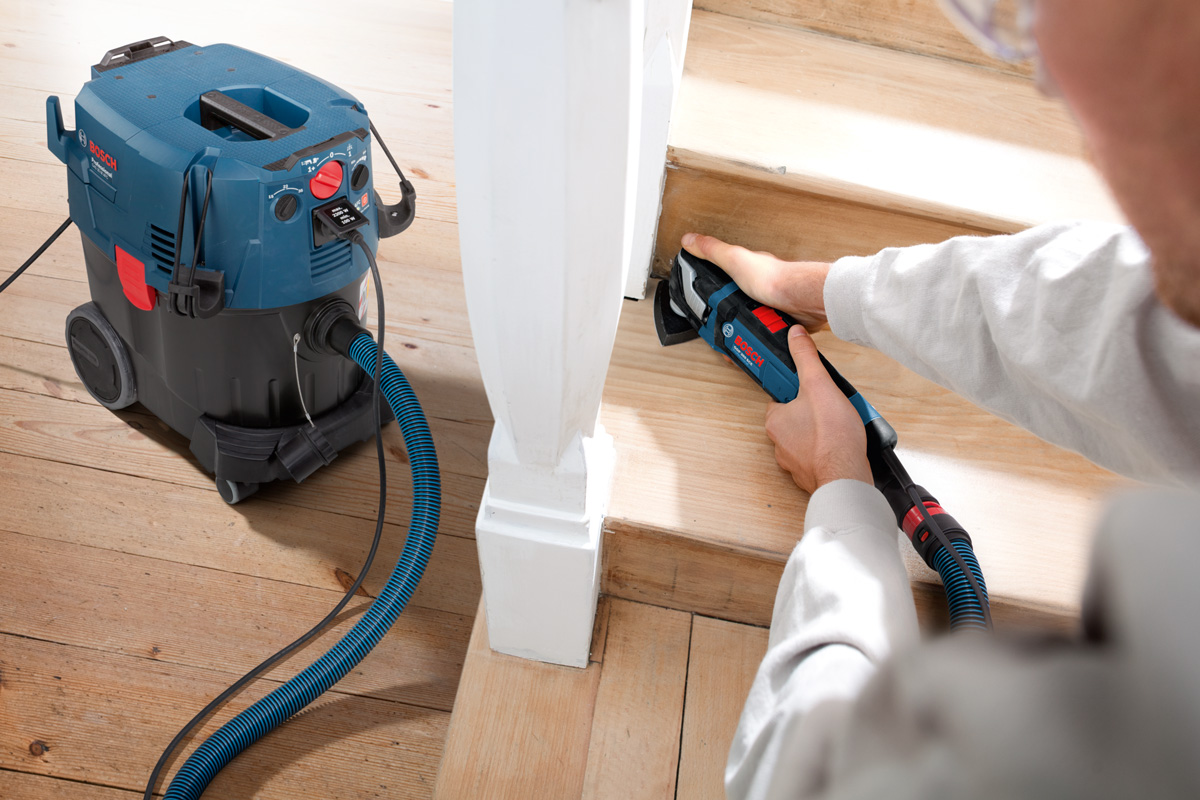 One point that is mentioned in the first article by the HSE is this: "Note: An L (Low) class unit is only suitable for lower-toxicity dusts like gypsum in plasterboard."
One point that is mentioned in the first article by the HSE is this: "Note: An L (Low) class unit is only suitable for lower-toxicity dusts like gypsum in plasterboard."
The recommendation here is clear, if you work with wood dust and other construction dust then your standard vacuum cleaner isn't going to cut it. To be as safe as possible you're really looking at M class as a minimum.
Bosch gives examples of the type of dust and the classification of extractor that should be used. It should be noted however that the technical requirements for dust extraction will differ by country.
| Dust Class | Maximum permeability | Maximum allowable concentration | For example* |
|---|---|---|---|
| L | ≤ 1.0% | Dusts with maximum allowable concentrations (MAC) > 1 mg/m³ |
|
| M | < 0.1% | Dusts with maximum allowable concentrations (MAC) ≥ 0.1 mg/m³ |
|
| H | < 0.005% | Dusts with maximum allowable concentrations (MAC) < 0.1 mg/m³ |
|
*Bosch specifies: Due to the different regulations and specifications in the countries, we cannot accept any liability for its contents. Please always observe the national, prevailing regulations.
 Features to look for in your next dust extractor
Features to look for in your next dust extractor
Once you're clear about the class of extractor you need there are some features to look for that can make the job easier.
Autoclean
Fine particles can quickly clog filters. Having an auto clean feature helps to sustain the suction power as these automatically clean the filter. Bosch, Festool, DeWALT, Makita and FEIN all have extractors with this function.
Automatic on and off
A handy feature so the dust extraction starts as soon as you turn on the power tool.
Delayed shut off
As with the Festool CTL 26 E, here the extractor keeps sucking after the power tool has stopped to remove the last particles of dust.
Capacity
Think about how much dust you're going to be creating. If it's some heavy machining then a larger capacity like the Festool CTM 36 E AC or FEIN's Dustex 35 MX AC might be better.
Dust extractors, do I really need one? If you’re still sitting on the fence, working with a good dust extractor has so many benefits. Here are five fundamental reasons to own one. Removing material from the work surface gives you a clearer line of sight. Ultimately the finished product is more precise. Your work rate accelerates and so the job…
Cam Clamps and Dog Rail clips? What are you talking about, I hear you ask. Let me try to explain.
Simple mechanisms
It was probably the ancient Greeks who first classified six simple types of mechanism. The lever, an inclined plane, a pulley, a wedge, screws, the wheel and axle. Even though things have moved on after a few thousand years, you can guarantee that one, all, or some of those simple mechanisms can be found in any machine today. Even the keyboard of an iMac!

Of those six, the inclined plane is one of the simplest, a ramp up which you can move a heavy load. Make the area beneath the ramp into a solid object and you now have a wedge. Wrap the wedge round a stick and you’ve made a screw. But wrap the same wedge round a pivot point, and you’ve invented the cam.
Using a cam
Apart from its use in all sorts of machines, a cam is another handy method of securing something flat onto the workbench. A wooden chair seat is a good example, as it needs to be held securely on the bench whilst the centre section is shaped.
The one disadvantage of using a cam is that a screw needs to be used for the pivot point. And, if like me, you want to avoid banging nails and screws into your pristine workbench top, you then need an alternative. That would be to use a large sub-base made from some scrap material.
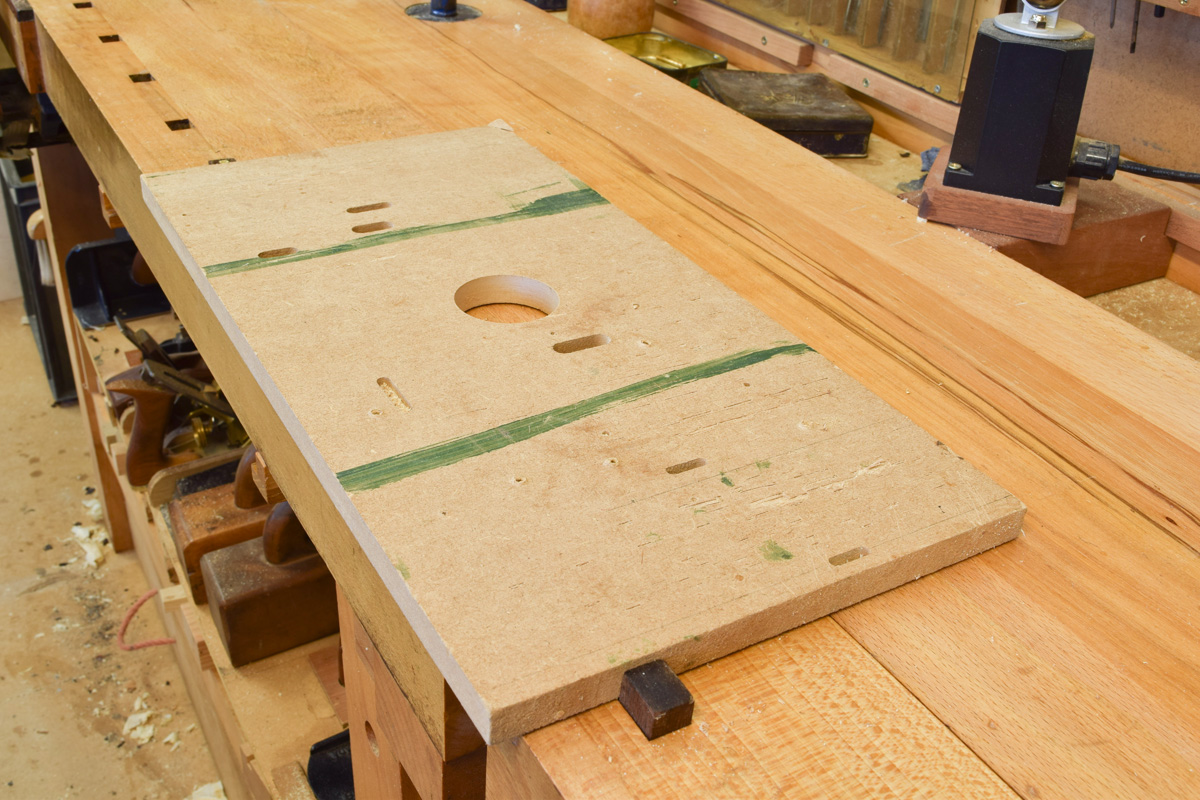 The pic shows a well used bit of 18mm mdf which has innumerable holes, chisel cuts and router slots. But for this purpose it’s ideal for the job.
The pic shows a well used bit of 18mm mdf which has innumerable holes, chisel cuts and router slots. But for this purpose it’s ideal for the job.
Twist on tradition
The UJK Technology Cam Duck Clamps are based around the traditional workshop clamps with the very useful addition of a locking screw through the duck’s ‘eye’.
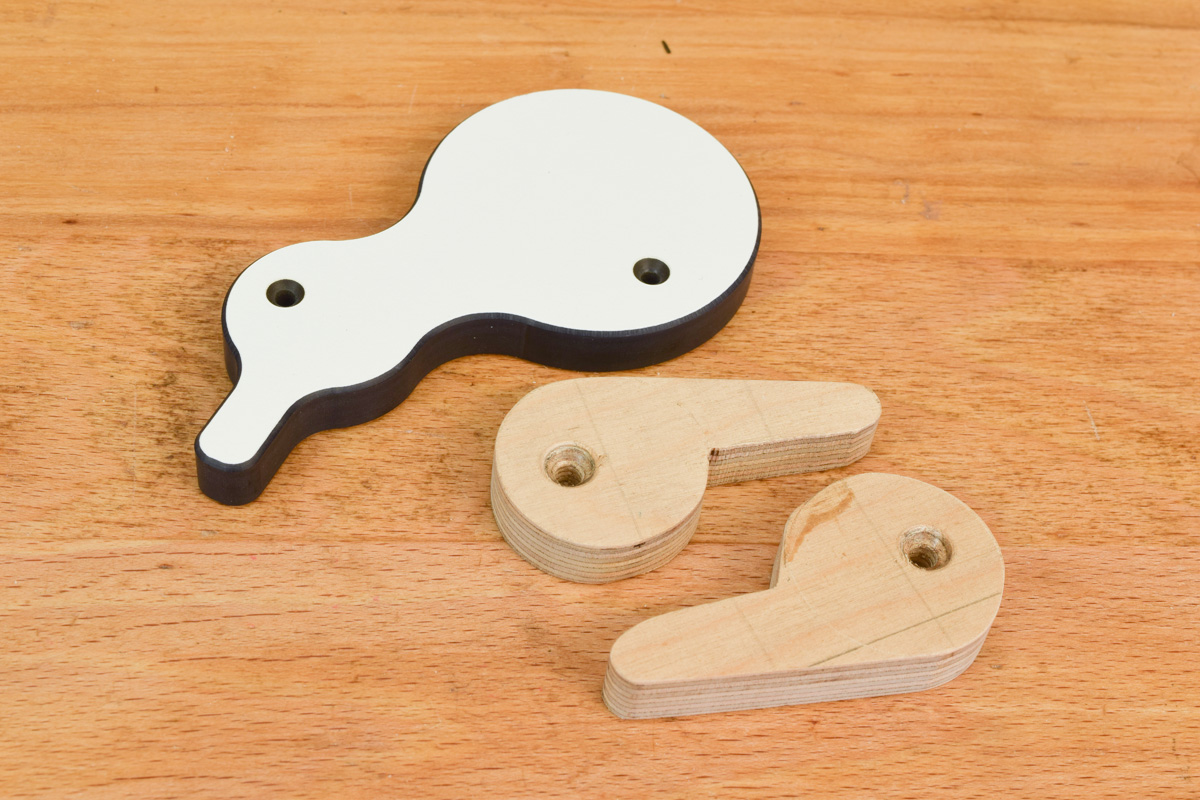
A standard cam is liable to vibrate free if subjected to vibration from sanding or routing. The Cam Duck Clamps hold the work a lot more securely. They’re CNC-machined from 12mm thick phenolic laminate, and, in order to hold your work properly, four are needed.
The pic shows a triangular scrap of mdf held with two pairs of cam clamps screwed onto the sub-base. 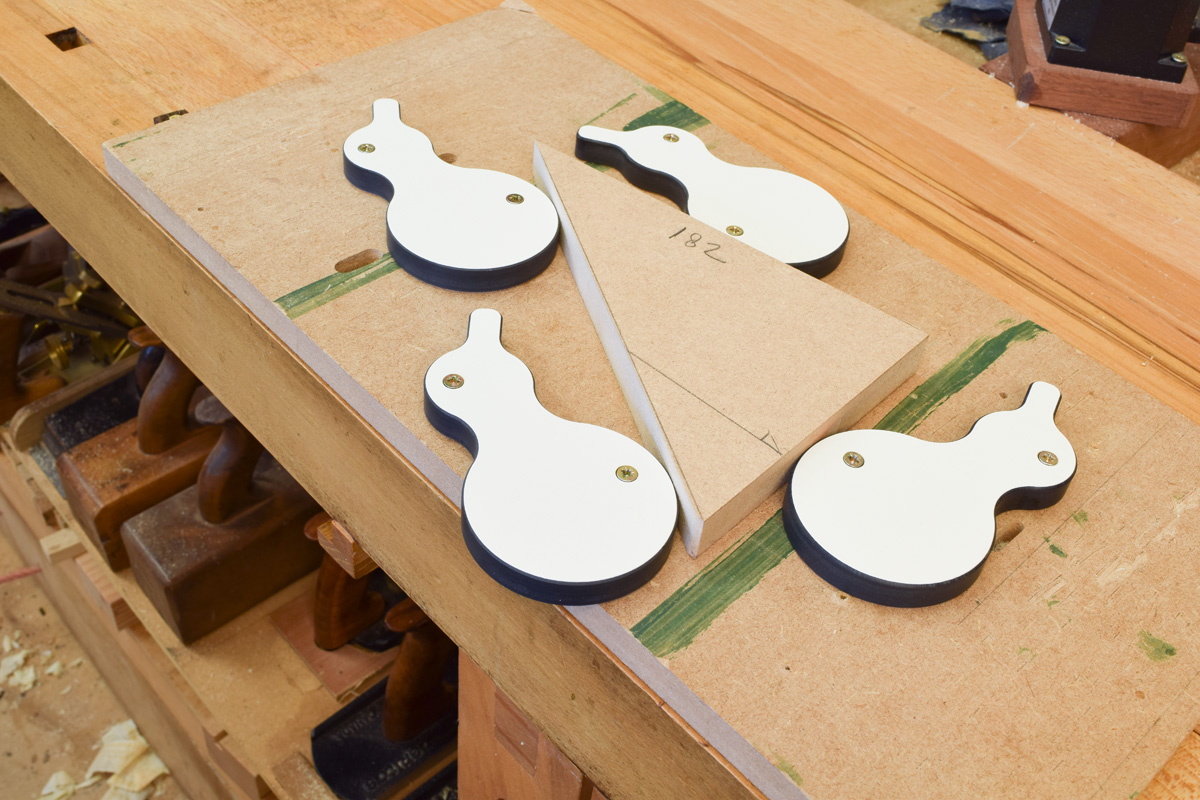
A triangular shape as shown is very awkward to hold in any other way, but it’s easy using Cam Duck Clamps and it’s so secure. They will even hold upside down!

Interesting addition to UJK Range
The other interesting addition to the UJK range is a pair of Dog Rail Clips. On the face of it, these may seem a little superfluous. But I could have done with these last year when I made a pair of multi-purpose storage units using the power tool table I’d made earlier.
While building my storage units, I had to cut all the rails to identical lengths to ensure each one was square. A single cut with the TS55 was the way I decided to do it. Much to my surprise, it worked. Every rail was the same length and cut dead square.

That, however, was only due to my unusually meticulous setting up procedure. Check everything’s clamped tight, the saw is set to the right depth of cut, extractor connected and the track rail tight against the Parf Dogs etc.
Except that on one or two occasions, the track had shifted away from the Parf Dog by a few mm (arrowed). Had I not been more observant, I would have cut all the rails incorrectly.
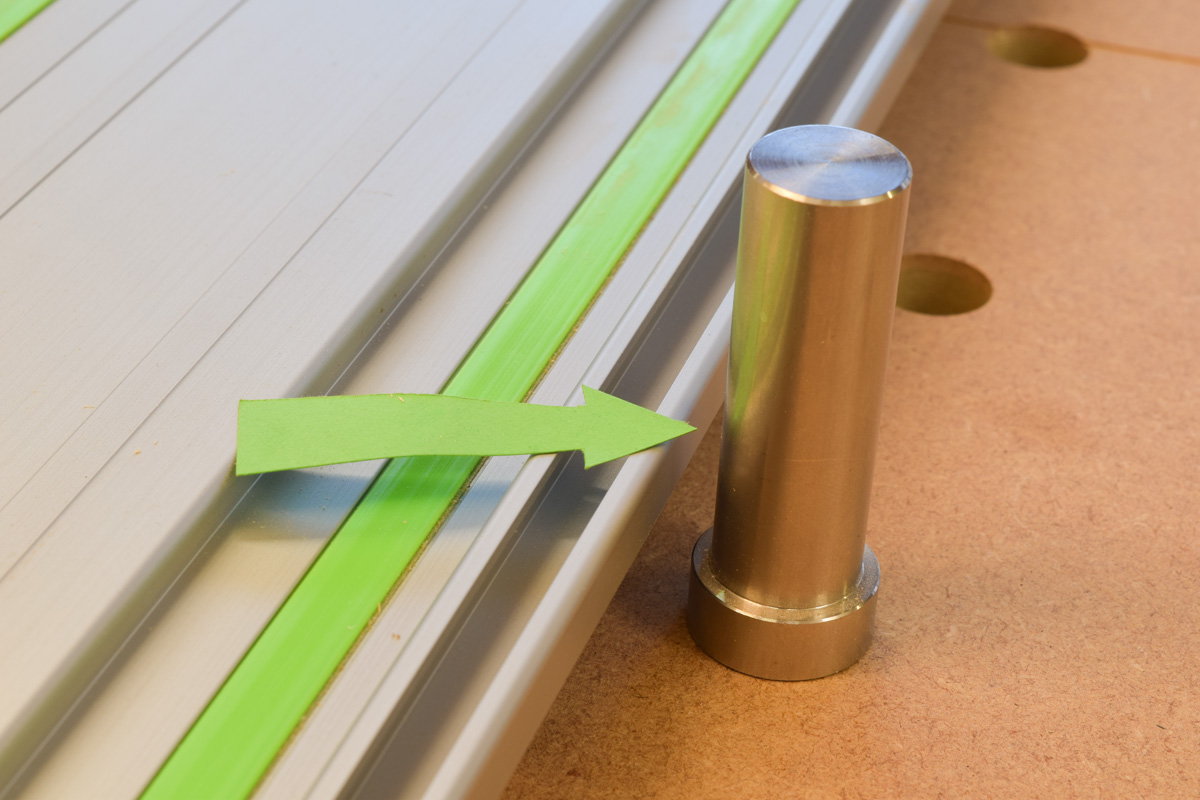
Using Dog Rail Clips would remove the possibility of inaccuracies, as they force the track onto the Parf Dog. As a consequence, there’s no room for any error to occur.
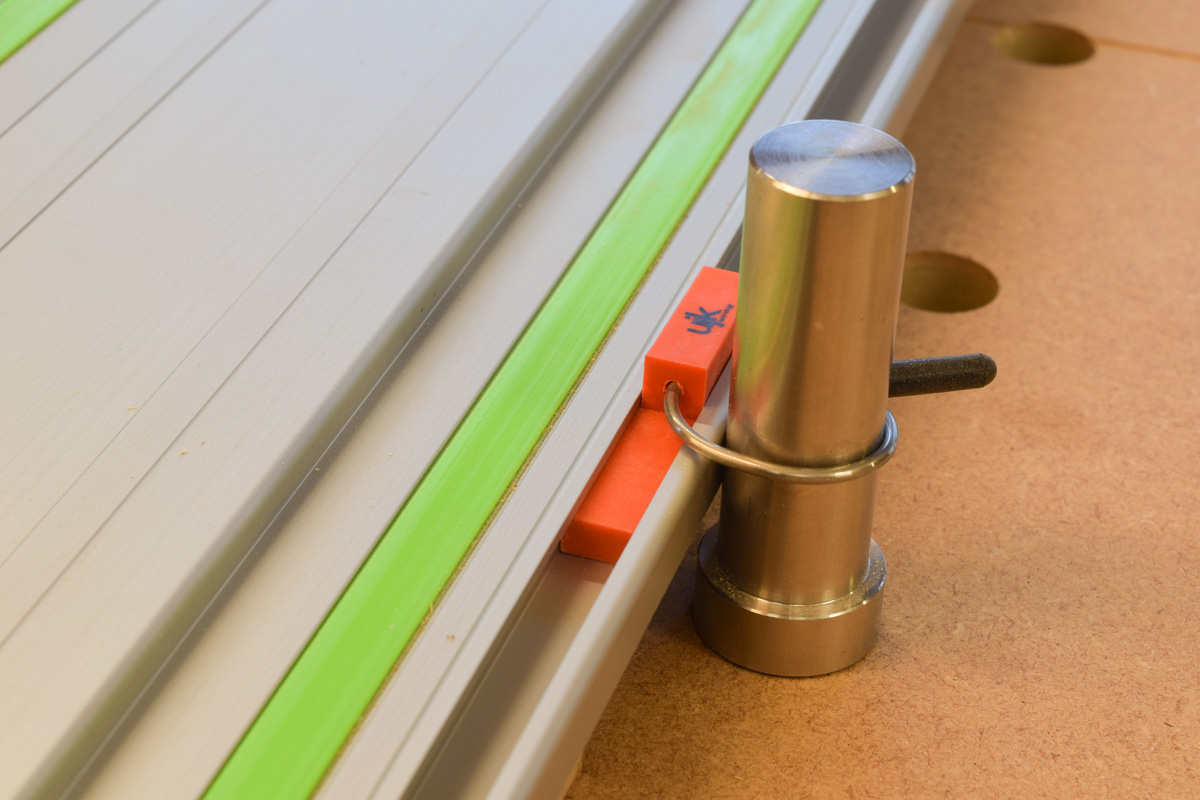
If you have a saw/track combination and use a Multifunction Workbench, or have built your own version as I did, a pair of these Dog Rail Clips is an almost indispensable accessory and highly recommended.
Cam Clamps and Dog Rail clips? What are you talking about, I hear you ask. Let me try to explain. Simple mechanisms It was probably the ancient Greeks who first classified six simple types of mechanism. The lever, an inclined plane, a pulley, a wedge, screws, the wheel and axle. Even though things have moved on after a few thousand…
Jigsaw Blades- Know your blades
First and foremost, if you need to know which jigsaw to buy first? Read our Jigsaw Buying Guide.

Blade shank
Most manufacturers are now using T-shank blades as standard, which makes it easier to switch blades between different machines. U-shank blades are still available but the T-shank has become more popular as most jigsaws are now fitted with a tool-less blade change to make swapping blades faster and easier. Bosch also classify their blades with a T to signify a T-shank blade, for example the T144D.
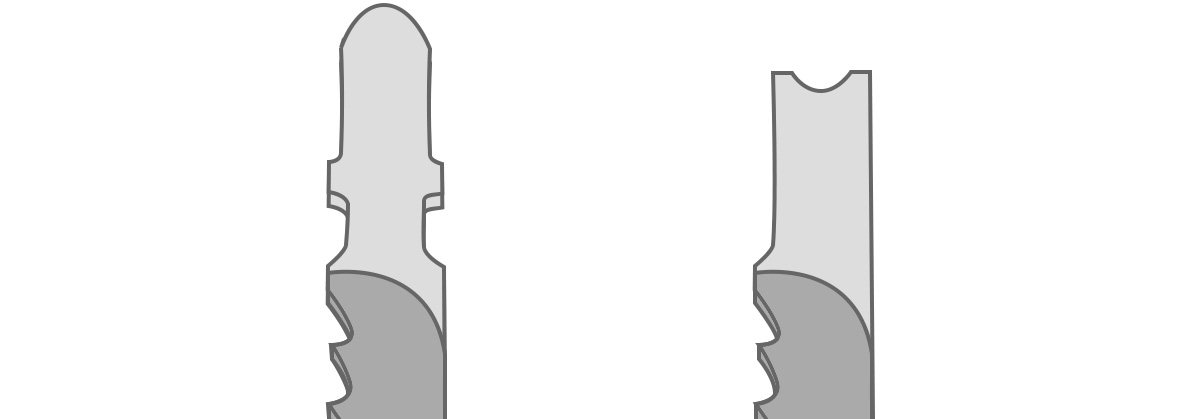
Match the blade to the material
Depending on the material you’re going to be cutting, it’s important to use the right blade. Jigsaw blades come in four main categories and choosing the right one ensures you create a cleaner cut, there’s less wandering and the blade will last for longer. The four main categories include:
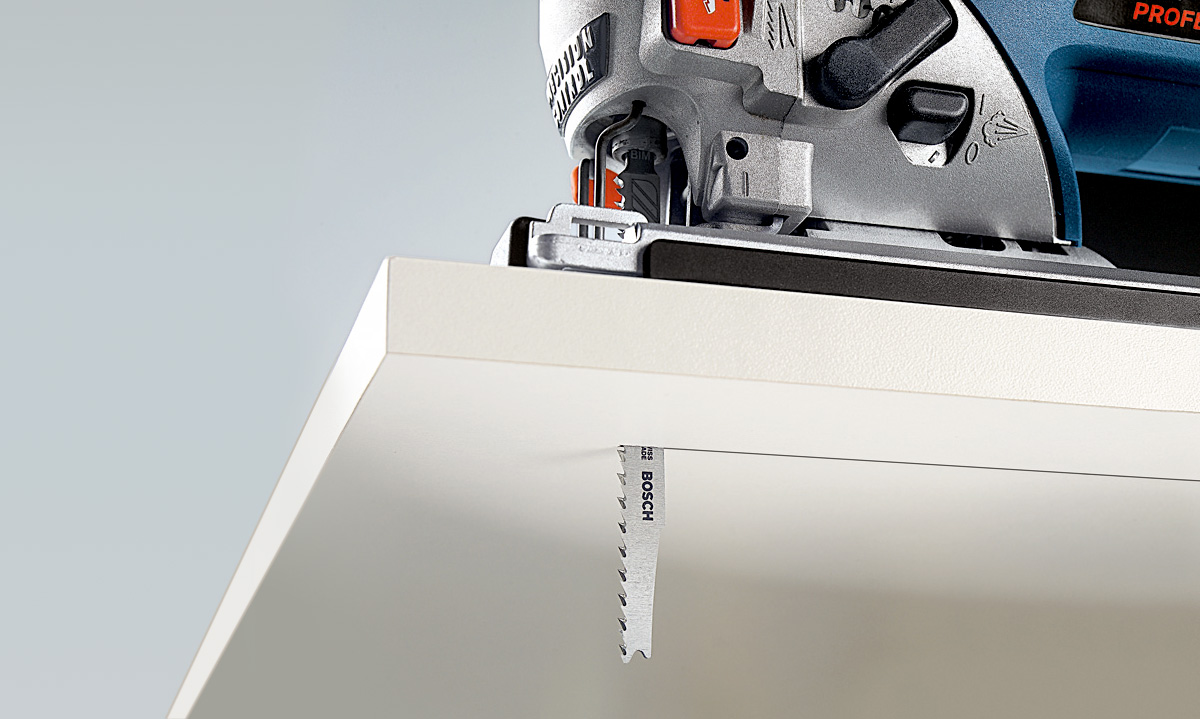
1. HCS
High Carbon Steel is best suited for softer materials such as softwood, soft plastics and wood fibreboards.
Bosch T101B Clean Wood Cutting Jigsaw Blades
2. HSS
High-Speed Steel blades should be applied when working with harder material such as metal, copper, aluminium, perspex and other non-ferrous metals. The qualities of HSS means that they are generally harder and have a higher abrasive resistance so they will cut faster and have greater longevity.
Bosch T101A Acrylic and Perspex Jigsaw Blades

3. BIM
Bi-metal blades are the ones to reach for if the material is especially hard and, although they’re more expensive, they do last much longer. The lifetime is approximately twice that of HSS blades and ten times greater than HCS blades. In the long run, it’s worth testing to see if they work better for you.
Bosch T118GFS Stainless Steel Cutting Jigsaw Blades
Bosch T118EFS Stainless Steel Cutting Jigsaw Blades
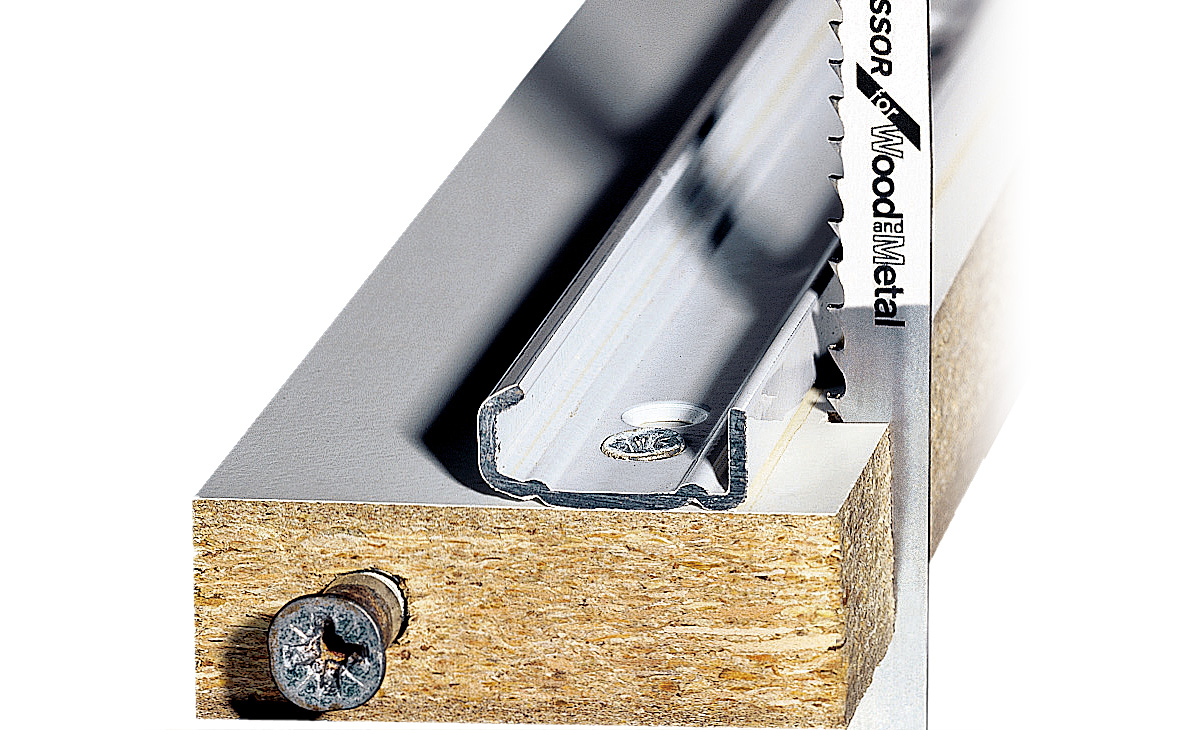
4. Carbide
Carbide blades will get to work cutting through plasterboard, cement-bonded fibreboards, glass fibre reinforced plastic and stainless steel. Blades coated with carbide grit can also make cleaner cuts through fragile material such as tiles and glass fibre reinforced plastic.
Bosch T130RIF TC Coated Jigsaw Blades

Blade geometry
The shape and arrangement of the blade's teeth play a significant part in how the blade cuts. The teeth will either be milled or ground and there are advantages for each type. Looking at the geometry of the teeth will show the type of cut you can expect from the blade.
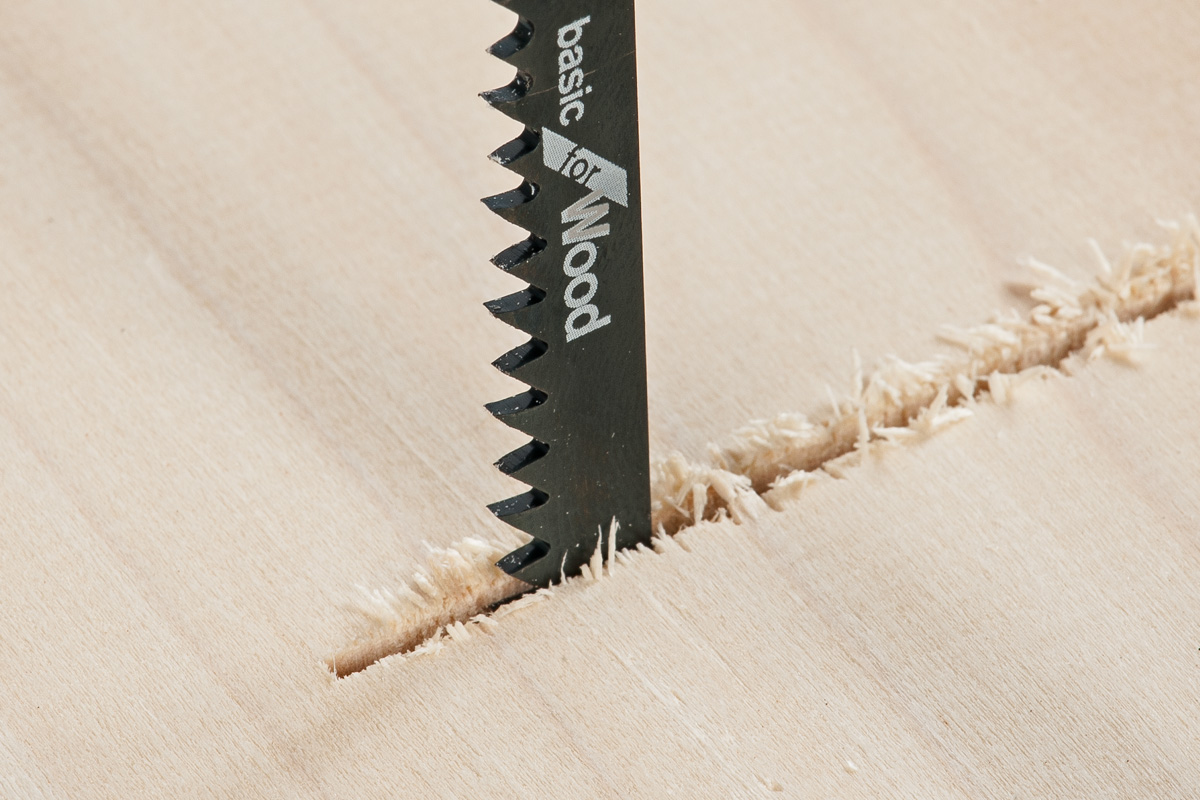
Milled teeth
Jigsaw blades with milled teeth are less finely sharpened which makes them more aggressive and results in a faster but rougher cut. Significantly, milled blades will also last longer so they are best used when working with denser material. Typical blade geometry includes:

Milled side set teeth
These make a faster cut but the finished cut will be rougher. Great if you need to make cuts quickly and aren’t too concerned about the finish of the cutline.
Bosch T111C Wood Cutting Jigsaw Blades
Bosch T345XF Progressor Jigsaw Blades

Milled wavy set teeth
As the name suggests the teeth are formed to a wave design, which produces a fine, straight cut.
Bosch T119B Wood Cutting Jigsaw Blades
Ground teeth
Jigsaw blades with ground teeth have been filed to create a sharp edge, so use these in softer material when a smooth line is needed.

Ground taper & ground teeth
The alignment of the teeth is straight, which can make for fine clean cuts.

Bosch T101B Clean Wood Cutting Jigsaw Blades
Bosch T234X Progressor Jigsaw Blades

Ground side set teeth
For fast cuts in wood.
Bosch T144D Fast Wood Cutting Jigsaw Blades
Bosch T144DP Wood Cutting Jigsaw Blades - P is for precision
The precision version is a thicker blade that won’t flex and, with less movement at the end of the blade, there’s greater accuracy. For the best results use these with a pendulum action if your jigsaw has it; this pulls the fibres away so there’s less distortion in the blade.
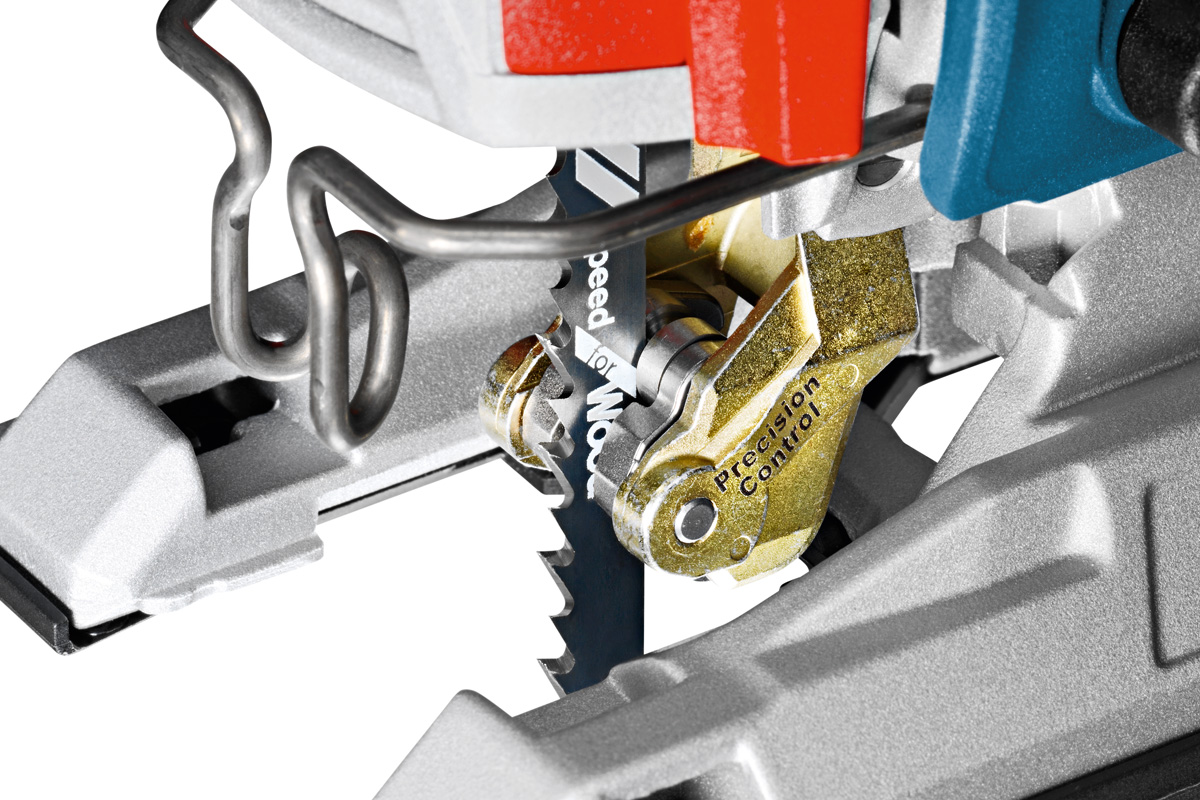
Bosch’s GST 160 CE has a specific design feature with its double roller blade guide system which ensures minimum oscillations and bending of the saw blade for a very true and precise cut.
Bosch GST 160 CE Jigsaw Body Grip
Bosch GST 160 BCE Jigsaw Bow Handle

Ground reverse set
Reverse set blades cut in the opposite direction. These are ideal in situations when you want to keep the cutline as smooth as possible on the top surface. With the jigsaw positioned above the surface, the blade cuts on the downstroke. The wood fibres pull up as the blade moves upwards. A clever solution for this comes from Bosch with their Extra-Clean blades for wood and the reverse cutting blades.
Bosch T308B Clean Wood Cutting Jigsaw Blades
Bosch T101BR Reverse Cutting For Wood Jigsaw Blades - R - for reverse cuts on downstroke

Selecting blades
Bosch are the market leader in jigsaw blades and as they state “No other company makes as many blades for as many applications.” That’s also due to the fact that they invented the jigsaw in the 1940s so they’ve used this experience to continually improve blade design.
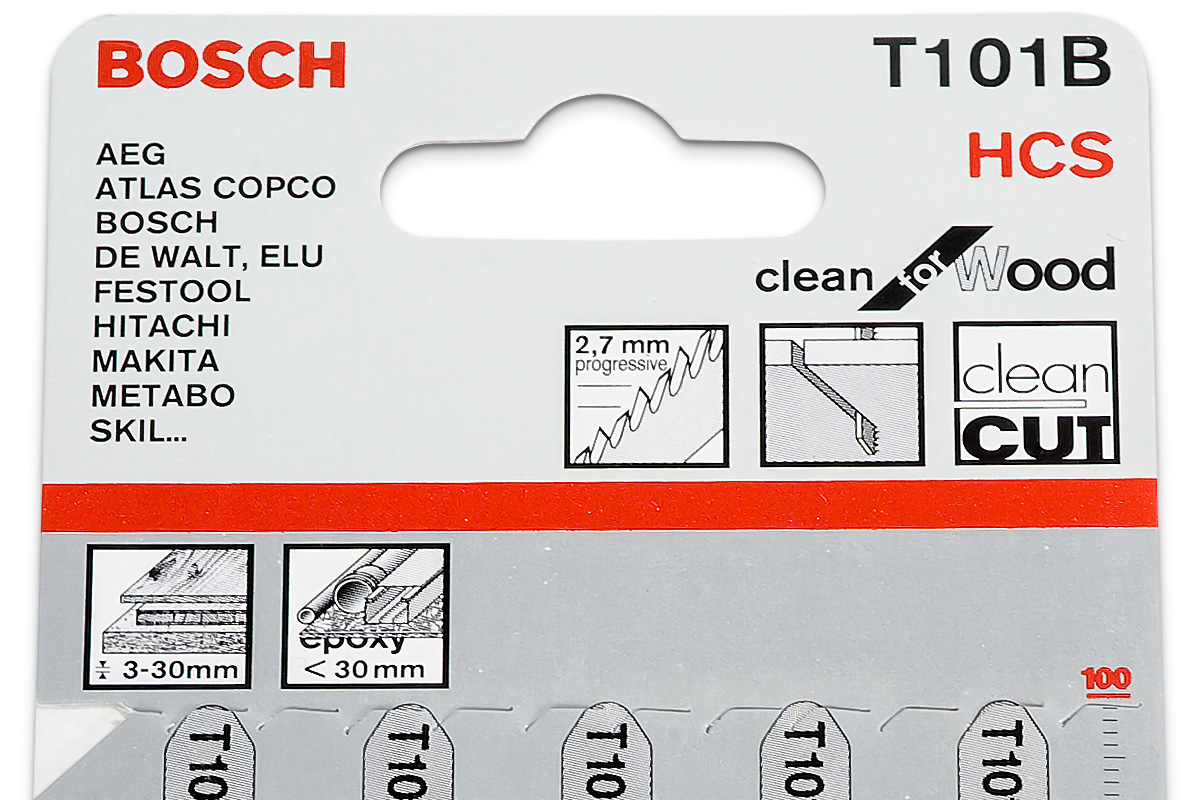
The top of the packs suggest the best material to use the jigsaw blades with. It also details whether it's best for straight or curved lines. This is especially helpful if you are purchasing in store.
Festool blades also come highly recommended and although more expensive, those who use them justify the price:
"The results are astounding ...very straight cuts in thick wood."
- Frank Owen, Axminster Customer
Festool S 75/4 FSG/5 Extra Stable Wood Cutting Jigsaw Blades
Another cost-effective way is to buy blades in multi-packs to cover a range of cutting needs.
Pack of 30 Bosch Jigsaw Blades
Makita Jigsaw Blades L10, B11, B12 - Pack 15
Want to see our complete range of jigsaw blades? Click here.
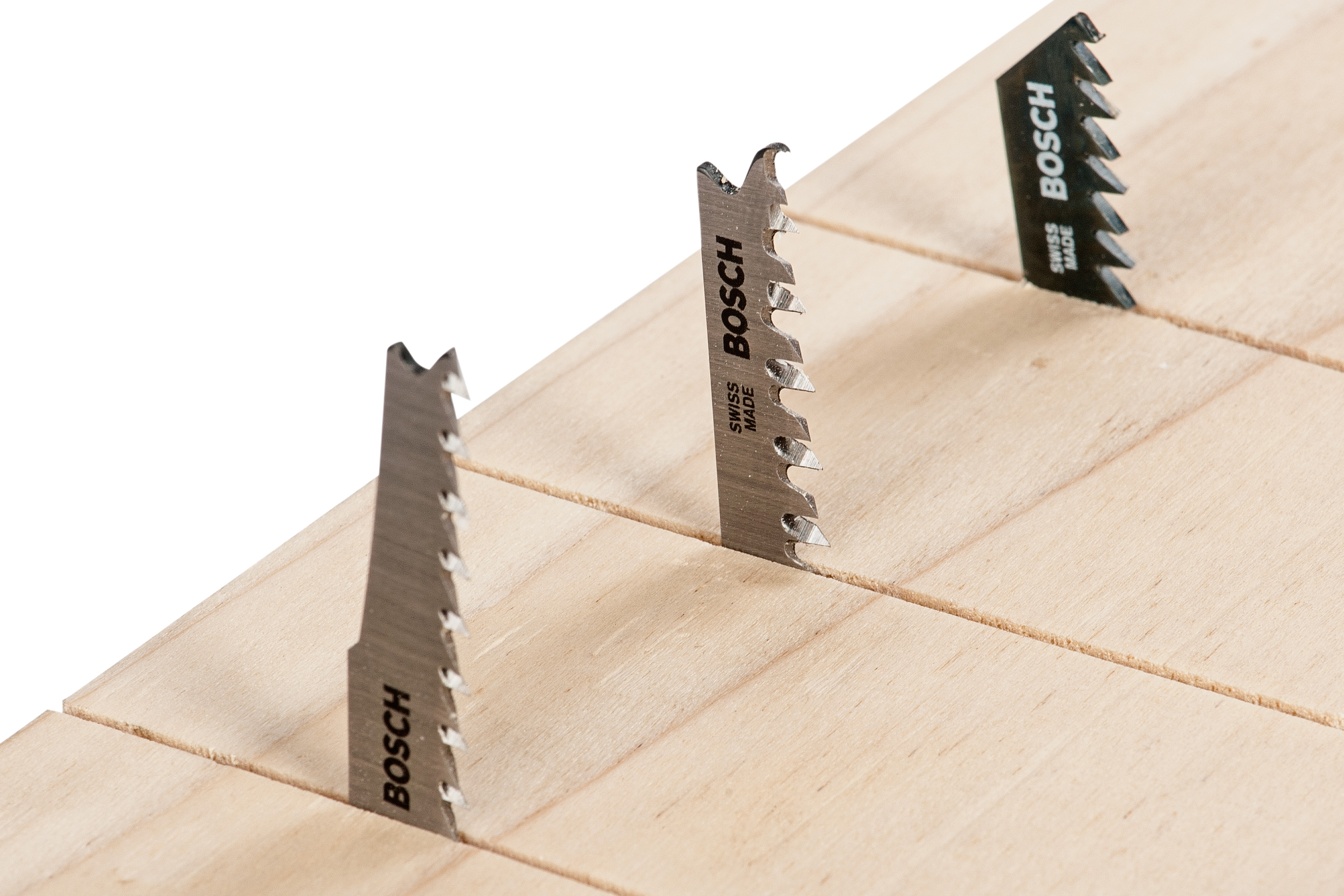
Discover more…
The jigsaw is a useful power tool to acquire as it has a number of unique applications that other machines don’t posses, in particular its ability to cut curves and deal with a wide variety of different materials. Want to know more about jigsaws? Take a look at our guide. Furthermore, read our Workshop Power Tools for an insight into some of the power tools currently in use in Rob Stoakley's workshop.
Here we guide you through how to select the right jigsaw blade for the task in hand and prevent common problems such as wandering blades, excessive tear out. Soon you’ll be following a straight line to clean, accurate cuts. Read on to learn more…
Like most woodworkers, I’ve gradually collected a number of power tools, all of which have proved to be useful, even if my old Lamello C2 biscuit jointer doesn’t get much of an airing these days. Whatever sort of tool I eventually buy, there’s always a slight nagging worry about connecting the dust extractor.
The situation is helped somewhat because years ago, I bought a Numatic Stepped Hose Reducer or to use its shortened form, a ‘Numred’ which conveniently fitted the 32mm hose on my old Axminster WV100 extractor.

The Numred has the benefit of being made from fairly soft, squishy rubber and, being stepped, it can be fitted quite easily into or over some power tool extractor ports, such as the small oval one on the C2.

But not all, and therein lies the issue.
Taking one brand as an example and like many other users, I’ve grown addicted to Festool products. Once you’ve had one, it doesn’t stop there so that it becomes all too easy to dream about accumulating a whole raft of their power tools. Thus far, I have a second hand, original Mk1 Domino jointer, palm sander, TS55 track saw, 14.4V power drill and OF1400 router.
Festool have also developed an excellent series of power tool extractors (and hoses etc) complete with all the ‘bells and whistles’ which are, naturally enough, designed to fit their equipment. Like all their gear, it comes at a price which, if you’re like me, you may be disinclined to pay, especially if you’ve got a decent extractor already. But a couple of my Festool power tools will fit Numred. The OF1400 dust connector and TS55 track saw extraction port are just the right size for a comfortable push fit, but the Domino and the RTS 400Q-Plus are obviously designed to fit one of the dedicated Festool hoses as their dust ports are far too small to even think about connecting the Numred.

Using oddments of plastic hose, I spent several frustrating hours trying to find a way to make the two fit together and then I inadvertently stumbled on a solution. For many years, I’ve been an enthusiastic fish keeper and have oddments of old reinforced pond hose in the garden shed, one of which happened to be a short lump of 1½” stuff which is a perfect fit for the Numred and even better, the inside of the hose is dead smooth ensuring a good push fit.

The fish pond hose was still far too large for the extractor ports so I then had to find some way of packing out the gap between the two. One of the most useful things in any workshop is Duct or Gaffa Tape which is normally used in dust extraction systems, but in this instance I just used narrow strips wound around the power tool extraction outlet until the pond hose was a reasonably tight fit. To secure everything in place, I used a Jubilee Clip to crimp the whole thing tight. It may not be pretty, but it works!

For hand sanding, I use a Mirka sanding block with Abranet® sheets. I happened to have an old piece of corrugated hose of approximately the right size so I used a piece of clear plastic tubing at the sander end which fitted over both nozzles. The other end of the tube was fortunately a tight fit into the Numred.

This type of problem is bound to crop up from time to time regardless of the type of power tool or manufacturer and Festool have been quoted here purely as an example. With a little ingenuity and a dash of ‘blue sky thinking’, additionally fuelled by copious quantities of strong tea and biscuits, it’s quite possible to find a solution and at the same time, save yourself a vast amount of the hard earned ‘folding’.
I still haven’t worked out a solution to the crinkly extraction hose catching on stuff though.
More tea and biscuits needed….
Like most woodworkers, I’ve gradually collected a number of power tools, all of which have proved to be useful, even if my old Lamello C2 biscuit jointer doesn’t get much of an airing these days. Whatever sort of tool I eventually buy, there’s always a slight nagging worry about connecting the dust extractor. The situation is helped somewhat because years…
Introduction
Cordless impact drivers are becoming more popular with trade and home users alike, offering significant advantages over the conventional combi hammer drill. The impact driver works in a radically different way to the combi though essentially it’s a powerful, fast, cordless drill.
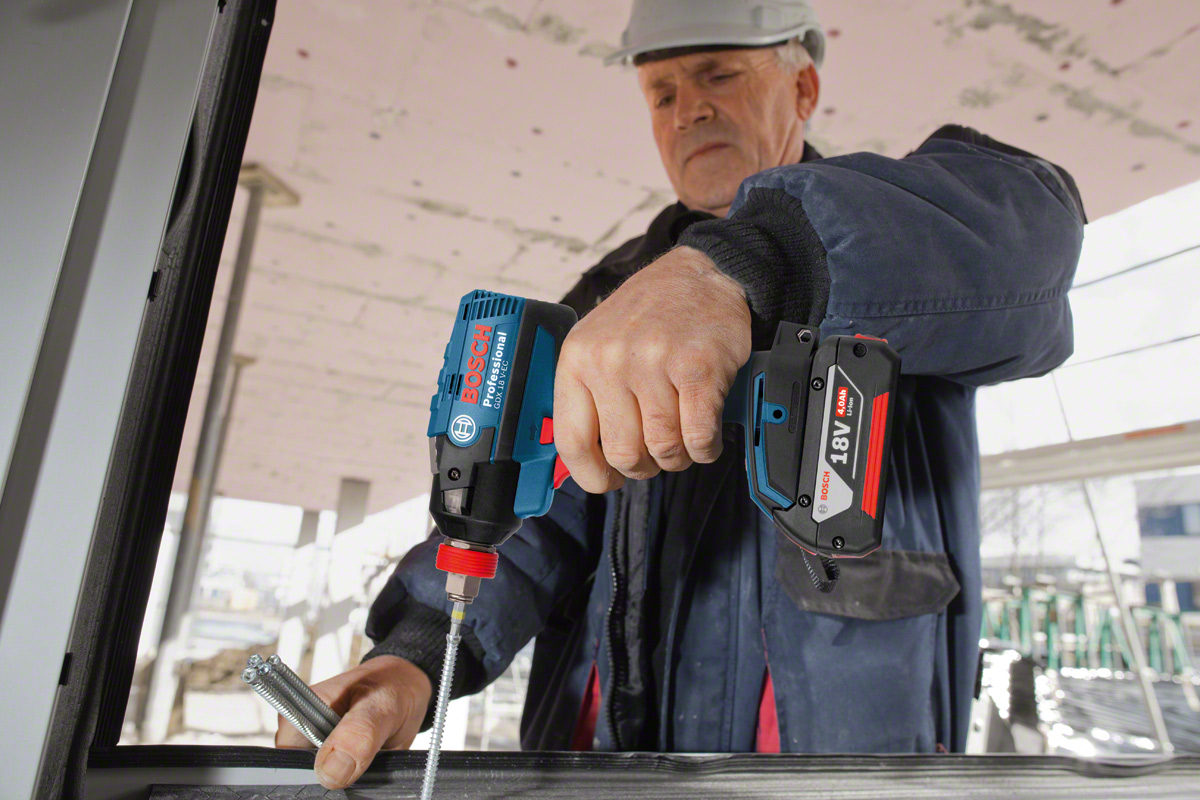
Impact or Combi?
The main difference is that the impacting mechanism of the impact driver isn’t activated until the torque required to continue driving is greater than the torque generated by the rotational power of the motor itself. It’s at this point that the impacting mechanism starts to work, where the internal hammer attached to the motor rapidly starts to strike the anvil which is attached to the bit. These very swift, powerful blows supply the additional torque and it’s for this reason that the impact driver is so named. Despite the hammer system, impact drivers aren’t hammer drills. On a hammer drill, the bit moves in and out, whereas on an impact driver, the bit stays put. This means that the hammer action takes place inside the tool.
Power and Torque
This varies from model to model, but in general terms, impact drivers have a electronically variable delivery of up to 3,000bpm (blows per minute) or 50 every second at 0- 2,500rpm, but it’s the torque which is really impressive. Some impact drivers will provide over 150Nm of torque and even the smaller ones can supply approximately 100Nm, which results in an extremely powerful and functional tool. A comparable 18V combi drill is only able to deliver 50-60Nm of torque. It’s easy to conclude that an impact driver can deliver up to three times as much torque!

Benefits
Impact drivers have no reactionary torque, which means that they can be safely operated with one hand as the way the torque is transferred within the tool means that the user doesn’t have to manage any external force (as with a conventional combi drill) which makes it easier to control. Combined with the comparatively light weight, the use of an impact driver means that the stress in wrists, hands and forearms is also kept to a minimum. An added bonus is that the battery life is prolonged as impact drivers don’t drain additional power when the torque cuts in.
Disadvantages
The impact driver is a fairly brutal power tool and is, for example, perhaps best used on site or in the home where it excels in effortlessly driving large screws. Where more finesse or delicacy is required, it’s better to use the more precise control afforded by a combi drill. The impact driver is also only supplied with a ¼" Hex (or alternative wrench drive), which means that it is awkward to fit drill bits unless they have a compatible shank.

Conclusion
The impact driver acts as a fast drill to begin with and a huge amount of additional torque is generated when the internal hammer/anvil system starts to operate. The impact driver is a fast and very powerful but ultimately, in an ideal world, the dedicated power tool user needs a combi drill as well!
Introduction Cordless impact drivers are becoming more popular with trade and home users alike, offering significant advantages over the conventional combi hammer drill. The impact driver works in a radically different way to the combi though essentially it’s a powerful, fast, cordless drill. Impact or Combi? The main difference is that the impacting mechanism of the impact driver isn’t activated…
Introduction
This new type of power tool was introduced in the mid 70’s by Bosch and was called the SDS+ drill, or ‘Special Direct System’. Another interpretation is the ‘Slotted Drive System’ which is perhaps a more accurate way of understanding how the drill operates.
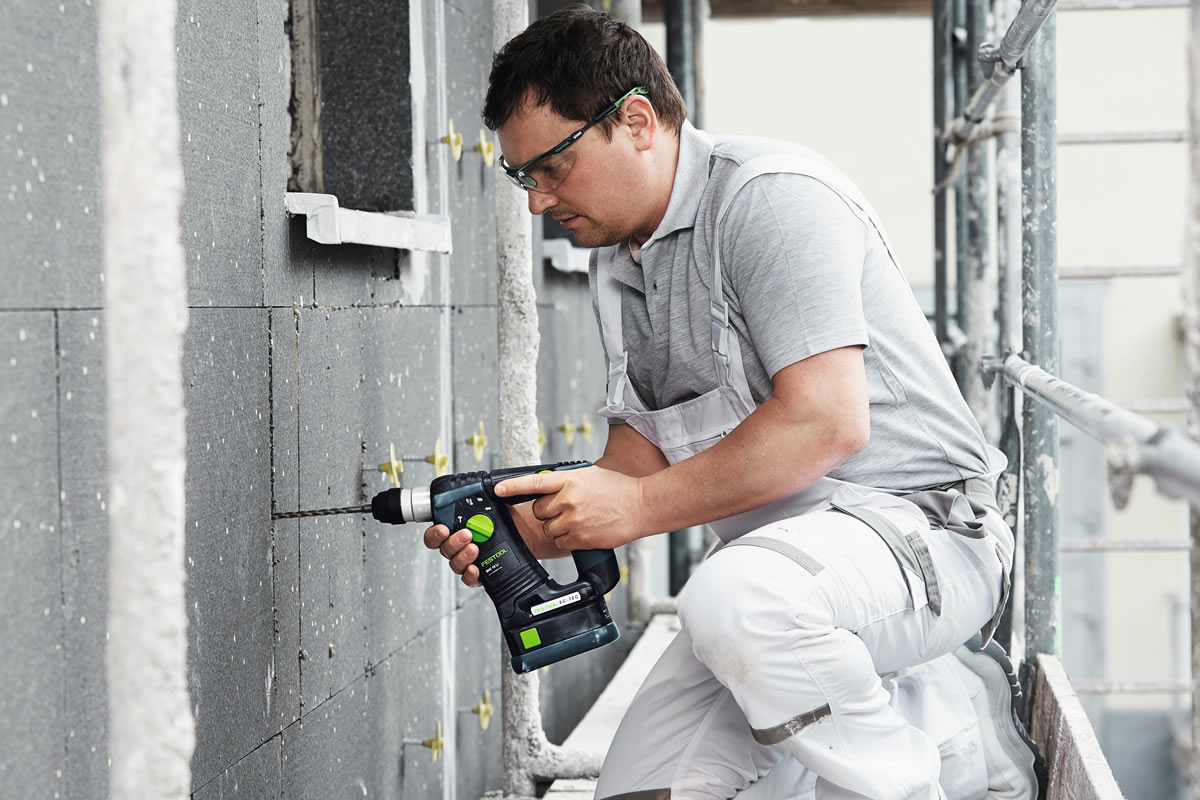
How do SDS+ drills work?
SDS drill bits have a series of slots, or indentations along the shank which allow it to move freely along its length when gripped in the chuck. The bit is retained by sprung ball bearings which locate into the slots, then allowing the bit to move forwards as a result of the drill’s hammer action. This greatly increases the drill’s performance as it allows power to be directed with greater efficiency.
Unlike a conventional hammer drill, where the entire chuck moves back and forth, it’s only the drill bit which moves, which is much more efficient way of delivering the impacts from the hammer.
One other advantage is that there’s no need to apply pressure to the drill as the hammer action is more than adequate to allow the bit to do the work.
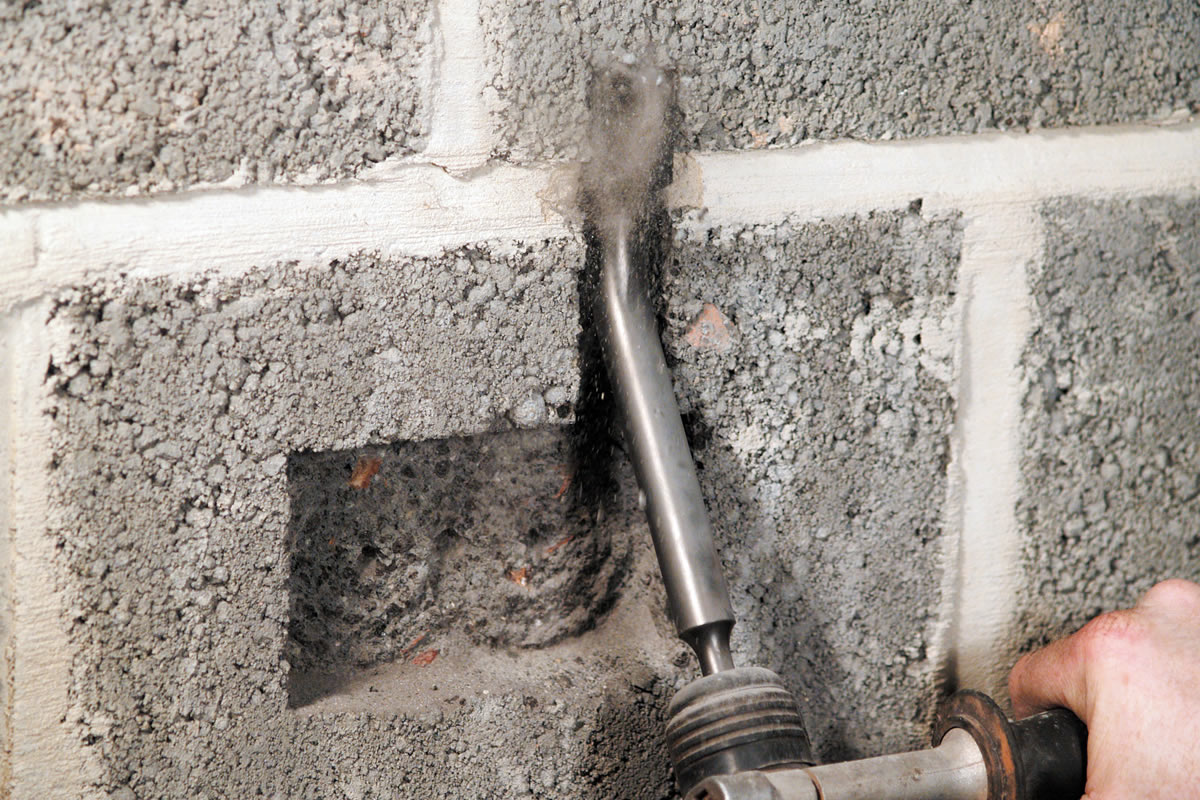
SDS+ Applications
A good SDS+ drill will be suitable for many applications, whether on site or in the home. It will make short work of the hardest reinforced concrete or tough house bricks and with the appropriate bit fitted is also ideal for removing ceramic tiles or channelling out brickwork for electrical cable. For some DIY or site applications, a standard combi hammer drill would probably be fine, but for serious trade or heavier duty use around the home, an SDS+ drill is an essential.
Different Operating Modes of SDS+ Drills
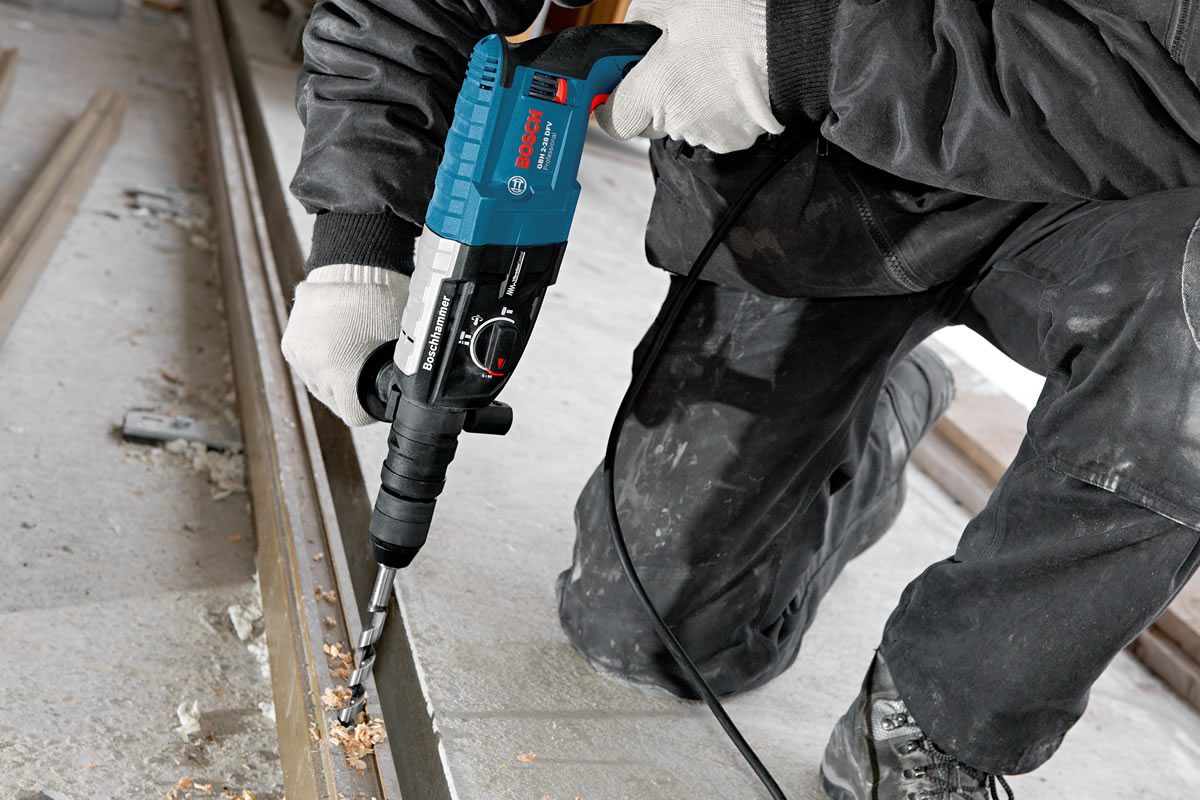
Drill - the standard drilling format where the chuck rotates with the drill bit and best suited for softer material. Standard drill bits can be used with with an SDS+ chuck adaptor.
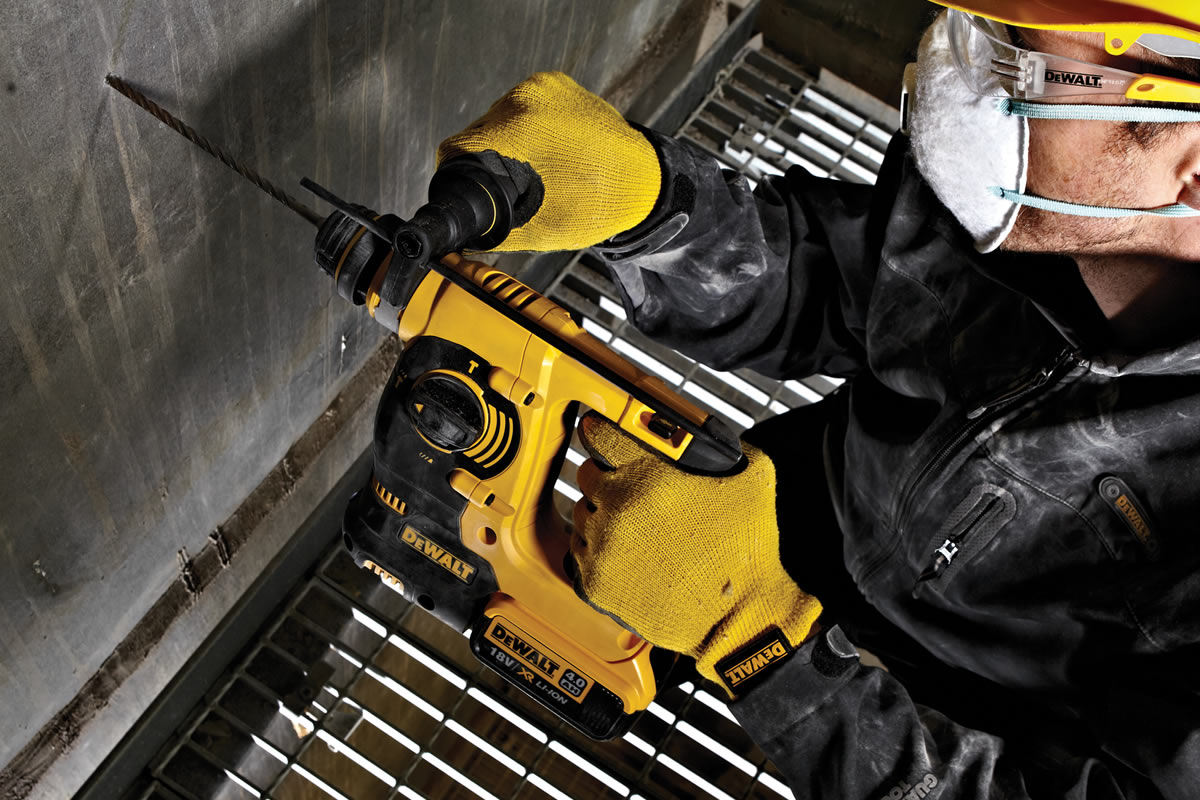
Drill and hammer - similar to the first method, but now the hammer inside the drill reciprocates, driving the drill with the familiar hammer action. This is the most common way that SDS+ drills are used.
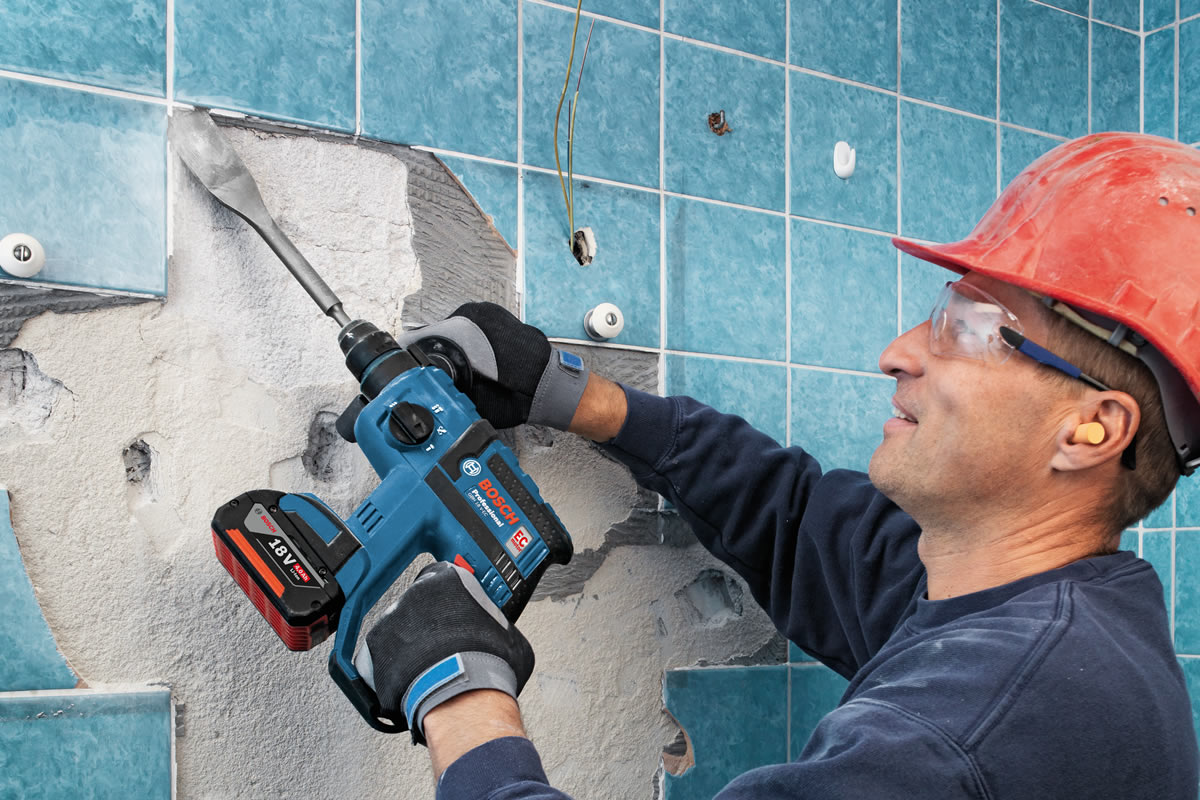
Hammer only (without rotation) - this method is sometimes known as the ‘rotary stop’ mode as the rotation of the drill bit is switched off which is required when a chisel is used in the drill.
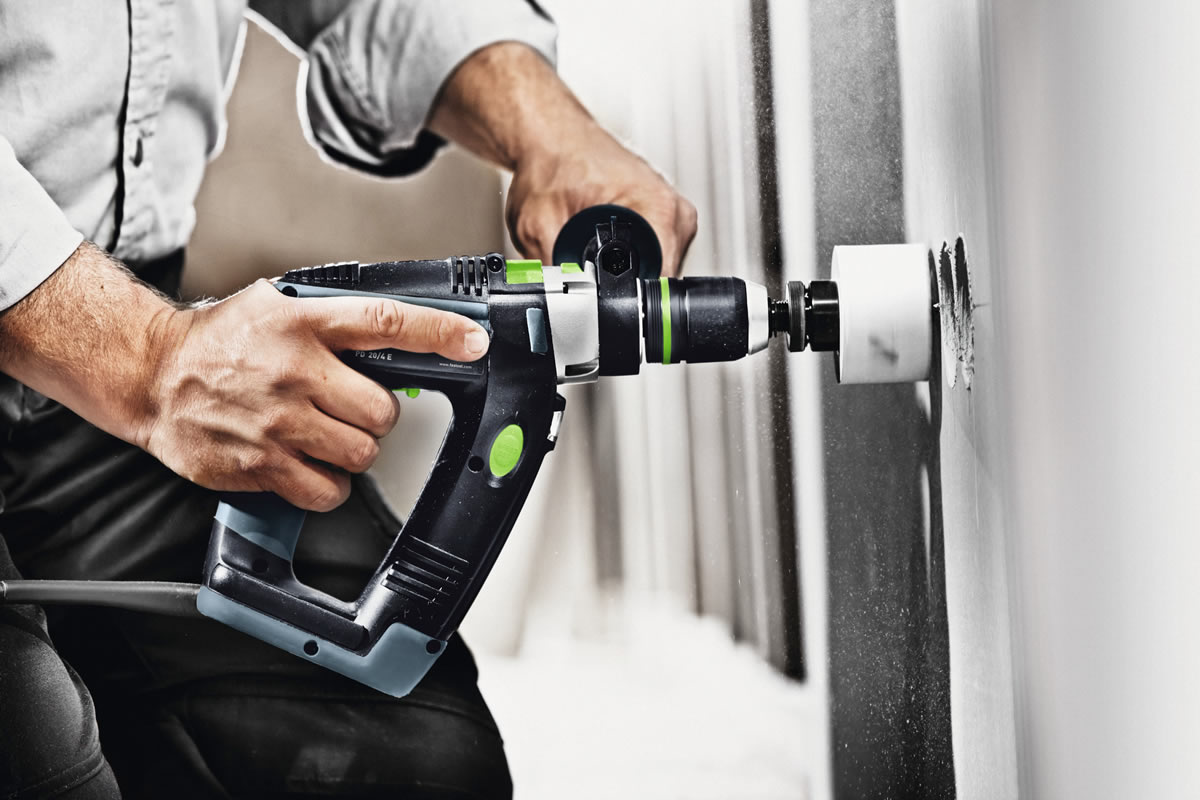
Accessories for SDS+ Drills
There is a large number of accessories that can be used with an SDS+ drill. As well as standard SDS+ drill bits, there are for example, core bits (which require an adaptor), a mortar rake and tile removing chisel together with many other different types of bit.
It should be noted that standard drill bits cannot be used in an SDS+ drill unless an adaptor is purchased though some drills are supplied with an additional chuck for holding plain shank drill bits.
Introduction This new type of power tool was introduced in the mid 70’s by Bosch and was called the SDS+ drill, or ‘Special Direct System’. Another interpretation is the ‘Slotted Drive System’ which is perhaps a more accurate way of understanding how the drill operates. How do SDS+ drills work? SDS drill bits have a series of slots, or indentations…
Introduction
The so called ‘sabre saw’ has a somewhat intimidating name but in simple terms it’s a power tool where the blade has a reciprocating, horizontal cutting action. Some machines employ an orbital cut in much the same way as the pendulum motion used on jigsaws, resulting in a more efficient cutting action. To use the tool effectively, the blade ought to cut vertically down through the material, in much the same way as a standard hacksaw used at a metalwork vice.
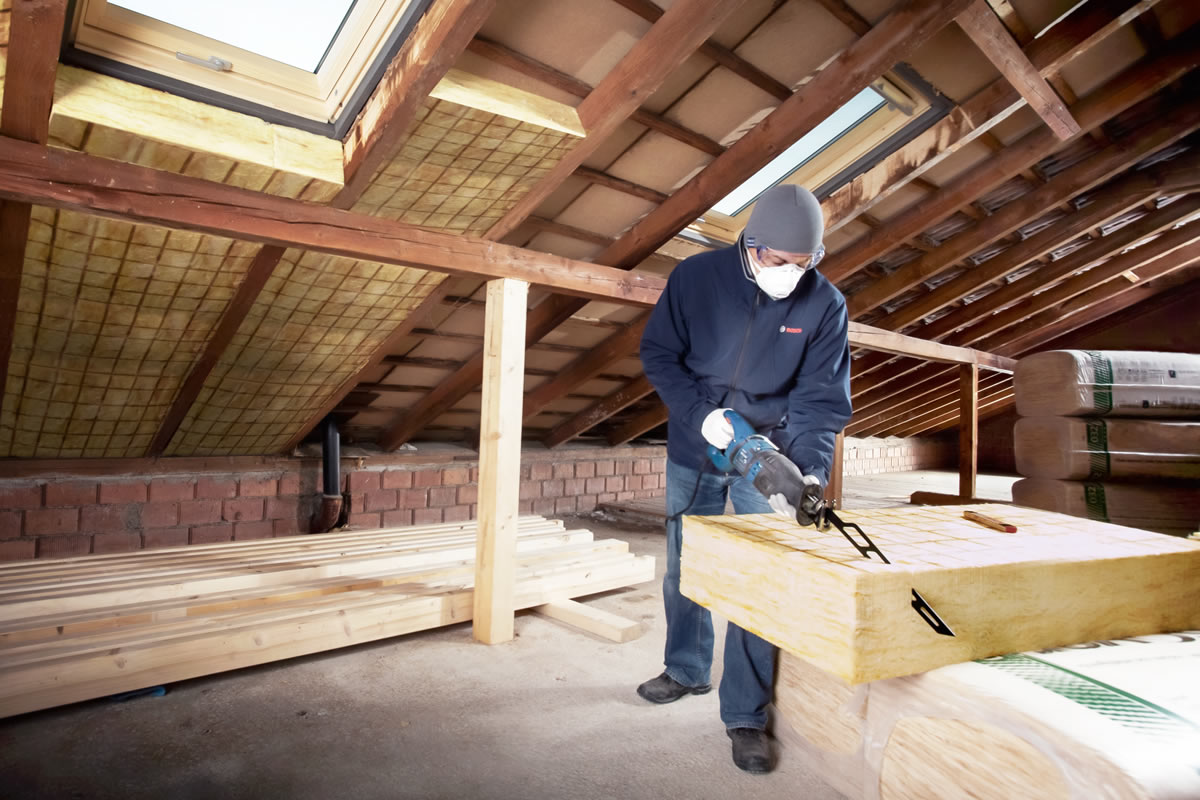
Blades
Similarly to their jigsaw cousins, sabre saws have a range of different blades. These are for the most part used on all types of wood and metal, including pruning duties in the garden on wet, green branches or thick metal plate in the workshop. There’s even some blades that will cut through brick, reinforced plastic, aerated concrete and cement! Depending on the application and the blade, the depth of cut can range from 100mm (metal, thin plate, pipes and profiles) all the way up to 300mm for general cutting on wood and metal.

Straight or Curved Cuts?
Unlike a jigsaw, the blades used in sabre saws are wider though due to the very high variable stroke rate (0-2500 or higher) they are able to make large radius curved cuts as well as the more usual straight ones.
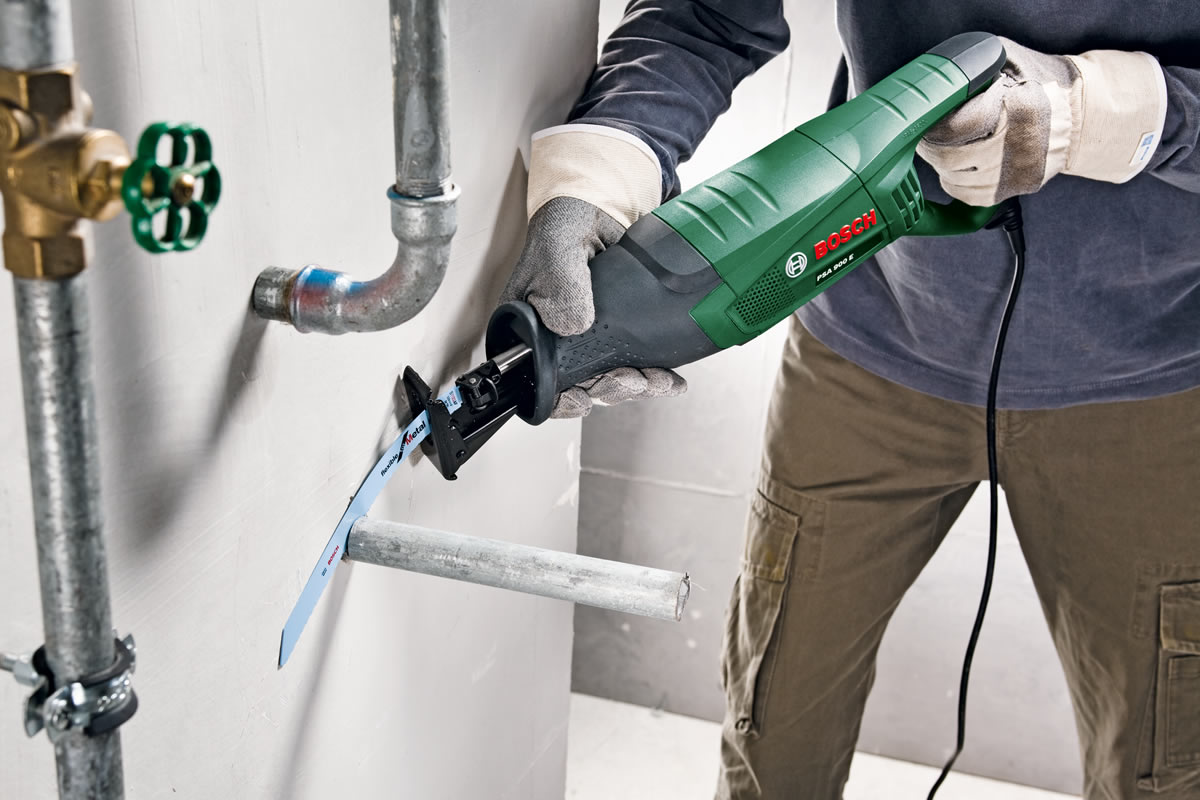
Bending the Blade
As an added bonus, a reciprocating saw could also be used to flush cut a pipe, for example, exiting a wall as some blades can be bent in use. This means that although the machine itself is at an angle to the wall, the blade can be bent parallel to it to cut through the pipe. Were this to be attempted with a hacksaw, a stub of the original pipe would still need to be removed by other means.
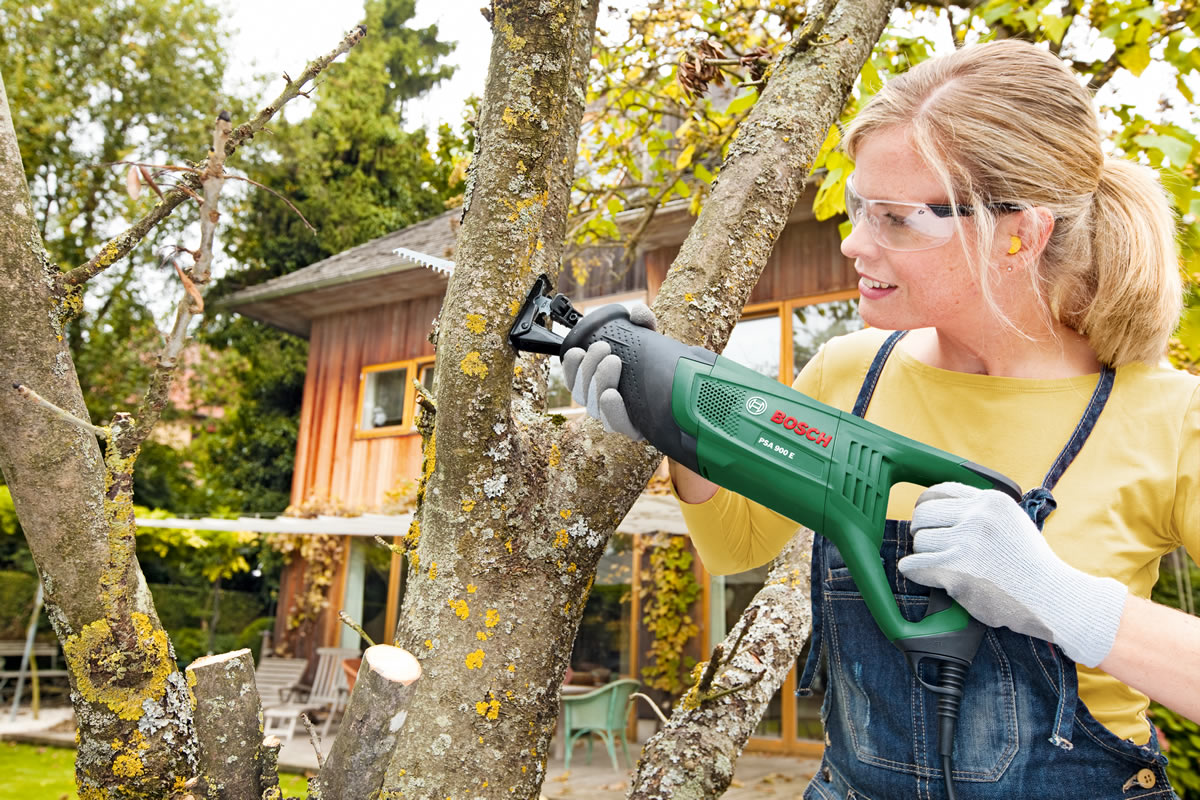
Conclusion
When fitted with the correct blade the sabre, or reciprocating saw is an extremely versatile machine capable of taking on a variety of cutting tasks that might otherwise be done by a jigsaw, circular saw or even a chain saw. Whether it’s in the garden, workshop or on site one of these machines ought to be close by when there’s some serious, heavy duty cutting to be done.
Introduction The so called ‘sabre saw’ has a somewhat intimidating name but in simple terms it’s a power tool where the blade has a reciprocating, horizontal cutting action. Some machines employ an orbital cut in much the same way as the pendulum motion used on jigsaws, resulting in a more efficient cutting action. To use the tool effectively, the blade…
Introduction
The jigsaw is a useful power tool to acquire as it has a number of unique applications that other machines don’t posses, in particular its ability to cut curves and deal with a wide variety of different materials.
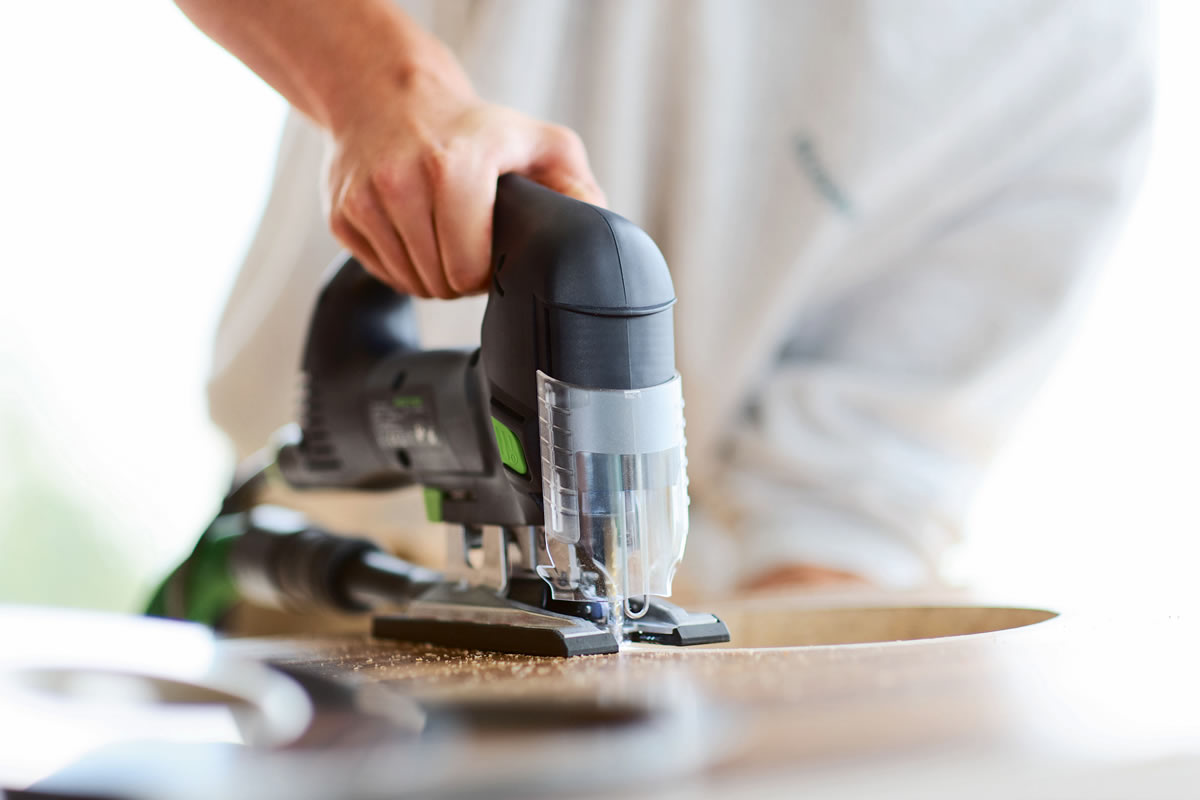
How Does a Jigsaw Work?
The narrow blade on a jigsaw reciprocates vertically and is usually controlled by a ‘soft start’ trigger on the machine. What’s not quite so apparent is that in addition, all modern machines use a variable ‘pendulum’ action, where not only does the blade moves up and down, but also back and forth. The result of this dual action is that the machine will cut into thicker and harder materials much more rapidly. This has several advantages, such as longer motor and blade life as well as being much faster. Some machines are equipped with a tilting base plate to allow bevel cuts to be made and most also have a dust extraction port fitted as standard.
Styles of Jigsaw
Whilst all jigsaws work in a similar fashion, two very distinct body styles have evolved which determine how the machine is held. The first is the ‘D’ grip; a separate handle on top of the machine with the trigger located conveniently underneath.

The alternative is the ‘body’ grip, where the motor casing itself acts as a handle and in this case, the controls are usually on the side.

Blades
Apart from its ability to cut out curved shapes, the vast range of different blades mean that the jigsaw is able to cut a very wide variety of alternative materials. Blades can be fitted to most machines that will enable it to cut softwoods, hardwoods and all man-made sheet material. Selecting the appropriate blade allows the machine to cut more exotic materials such as ceramic tiles, fibreglass and carbon fibre as well as metal such as stainless steel. With the appropriate blade fitted in a saw frame, these materials can be cut by hand, but it’s not recommended!

Conclusion
The nature of the the cutting action means that the jigsaw cuts more slowly than other types of saw and so may not be an automatic first choice for straight work. However, when complex curves need to be cut, for example, in a large sheet of ply, the jigsaw is the only machine that will rise to the challenge and with the appropriate blade fitted, it will also handle a very wide range of different materials.
Introduction The jigsaw is a useful power tool to acquire as it has a number of unique applications that other machines don’t posses, in particular its ability to cut curves and deal with a wide variety of different materials. How Does a Jigsaw Work? The narrow blade on a jigsaw reciprocates vertically and is usually controlled by a ‘soft start’…
Introduction
The cordless drill-driver has been an integral part of enthusiastic DIY households and all professional workshops for many years. The gradual evolution of battery technology, coupled with ever more sophisticated electronics mean that today’s power tools are a far cry from those first models of a few decades ago. The introduction of wood screws specifically designed to be power driven has at the same time advanced the rapid development of drill-drivers, particularly relevant to trade requirements. Drill-drivers though, struggle in one important area and that’s when a hole needs to be drilled in brick, cement or concrete.
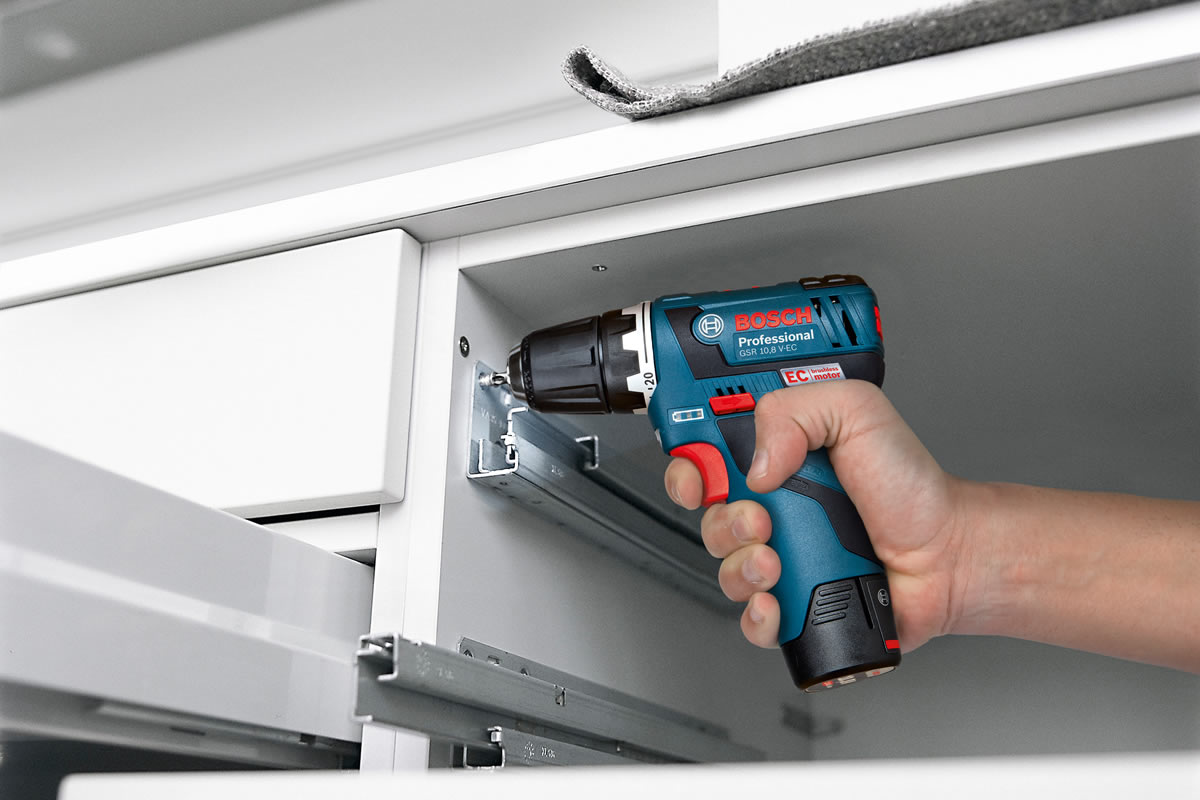
Drill-Drivers
All models differ, but essentially a drill-driver has two, trigger controlled variable speeds, one approximately in the range 0-500 and the other 0-1700 rpm. The lower screw driving range has a number of torque settings, with the greatest torque at the highest numerical setting whilst the higher speed range is used purely for drilling. When a standard drill-driver is used with a tct masonry bit on very hard brick or blockwork it quite rapidly becomes ineffective as the bit tends to ‘skid’ on the material. The result is that it blunts very quickly and may become so hot that the carbide tip falls out.
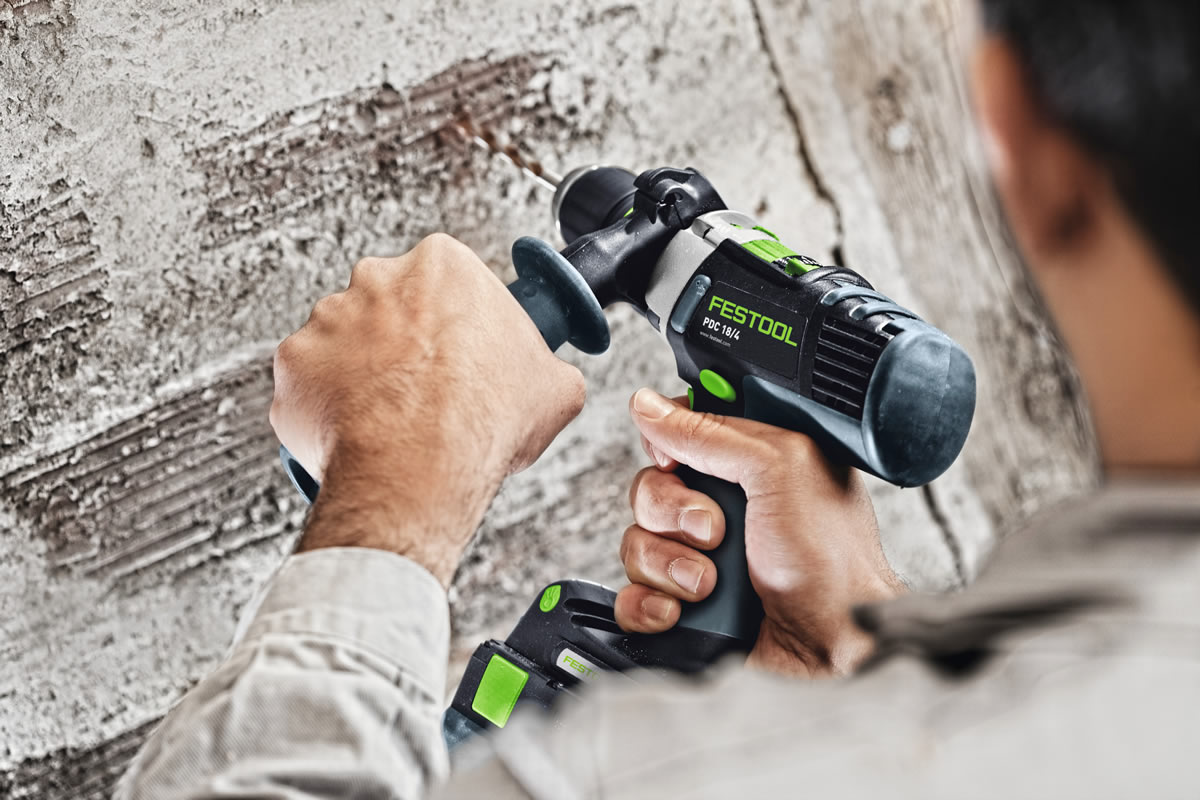
The Advantage of a Combi Drill
Combi drills have an additional setting, which is usually a small ‘hammer’ logo. When this setting is selected for drilling into masonry, the bit is hammered many times a second as it rotates. These very rapid impacts on the bit enable it to drill far more effectively into brick and block work with the result that there’s none of the overheating and ‘skidding’ associated with an ordinary drill-driver.

Types of Combi Drill
The majority of the combi drills sold are professional quality, industrially rated tools. Brands vary, but there are usually different models within the range and this is reflected in the price. Drills at the lower end of the range may have a smaller drilling capacity, a less robust chuck and a battery with less power. Conversely, the more expensive combi drills will have larger, more powerful batteries, a metal gearbox and teeth, as well as increased drilling capacities in metal, steel and wood.

Conclusion
When there’s a necessity to drill a lot of holes in a variety of different materials, particularly on site or in the home, a combi drill is almost indispensable as it provides not only a means to drill metal or wood, but at the flip of a switch provides a very convenient way of drilling masonry and brickwork.
Introduction The cordless drill-driver has been an integral part of enthusiastic DIY households and all professional workshops for many years. The gradual evolution of battery technology, coupled with ever more sophisticated electronics mean that today’s power tools are a far cry from those first models of a few decades ago. The introduction of wood screws specifically designed to be power…
Introduction
In a workshop, one of the uses of the planer-thicknesser is to prepare rough sawn stock. Before machining, the depth of cut can be regulated by raising or lowering the infeed table. However, where the timber (i.e. a thick oak post or beam) is too large, heavy or inconvenient to lift onto the machine, a portable power planer could be used instead. It works on exactly the same principal as the depth of cut is set by adjusting and locking the front shoe.
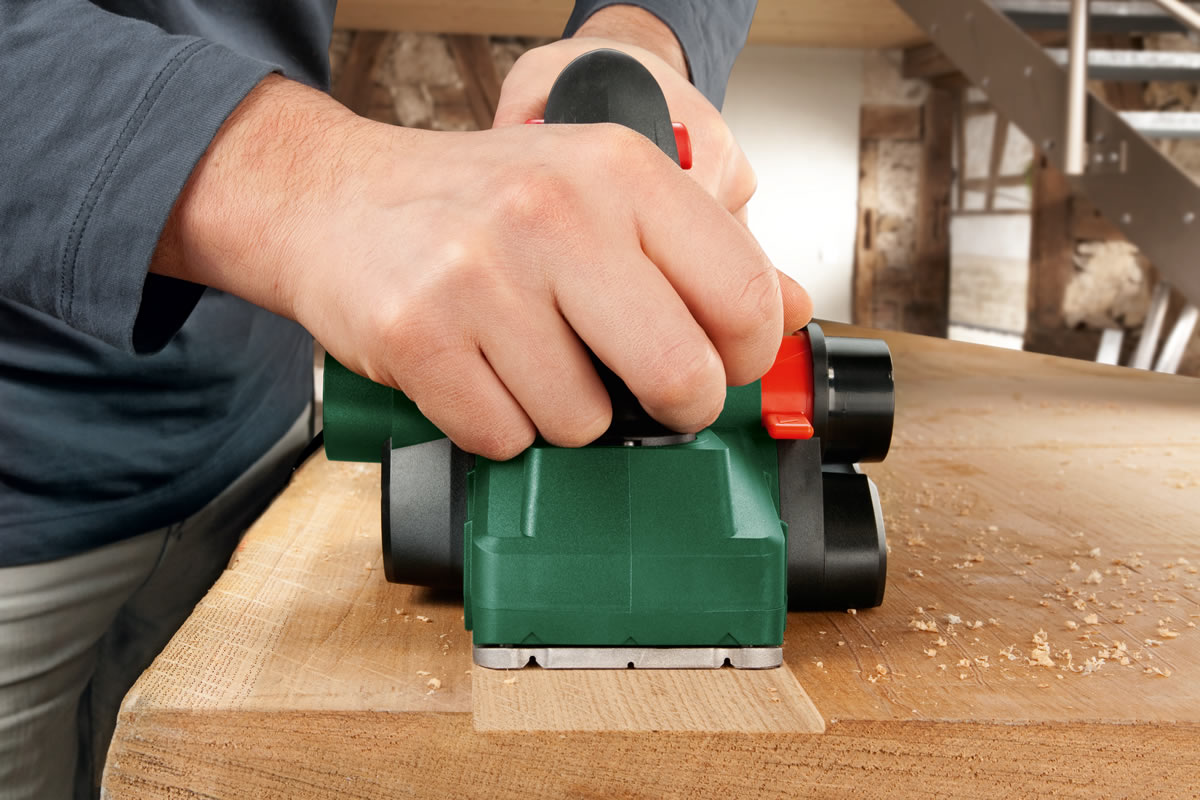
Blades
A single or pair of carbide blades rotate in a balanced cutter block at approximately 20,000 rpm. When the blade or blades become blunt, more effort is required to push the tool across the timber and as they become dull, the wood debris may look like sawdust rather than shavings, with the probability of smoke also being produced. In addition, using blunt blades will place extra strain on the motor. If two blades are fitted, they should be replaced or resharpened at the same time to maintain the balance of the cutter block. In addition, blades that aren’t mounted squarely on the cutter block may cause the machine to vibrate and it’s always worth double checking the tightness of the mounting bolts before switching on the machine.
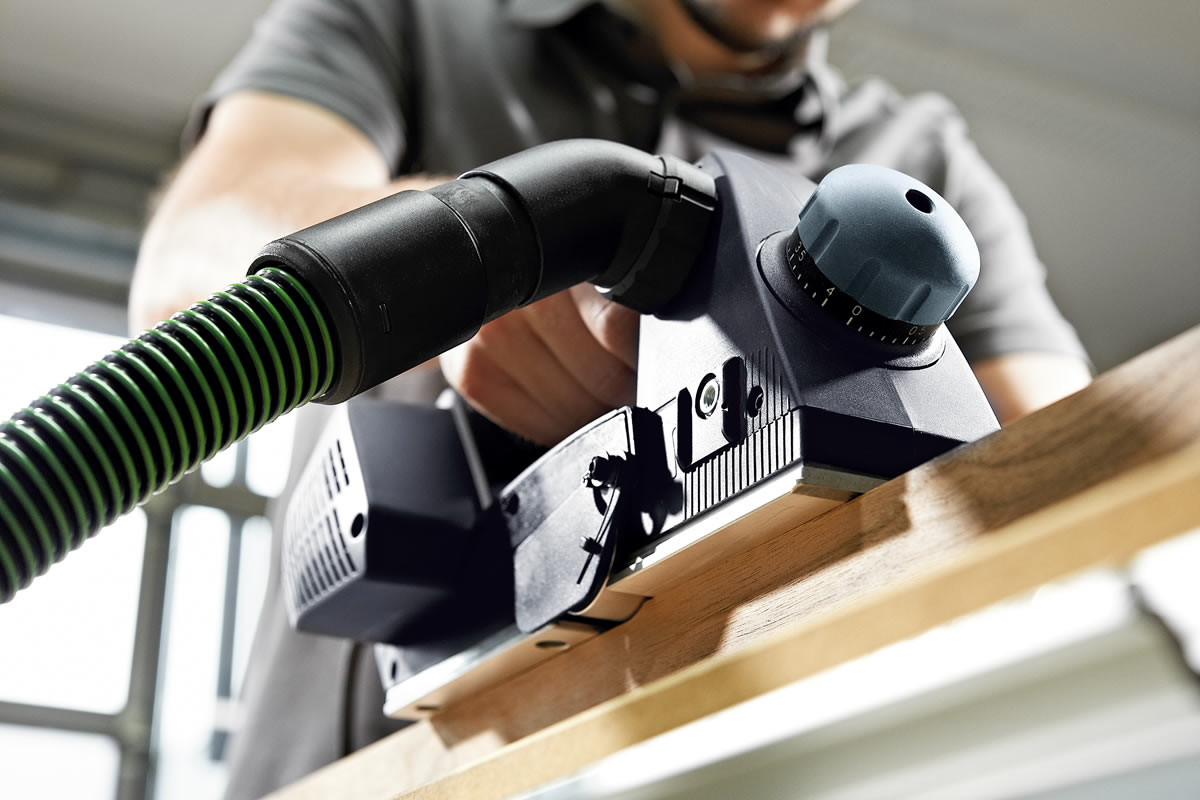
Accessories
Spare blades can be ordered for most machines so if it’s used on a regular basis, it’s always prudent to keep some in stock. Power planers, like their bigger cousins, also generate a lot of waste chippings which means that some sort of collection device is desirable. Many machines can be connected to a vacuum extractor but if one isn’t available, a waste collection bag should be used.
Some machines are supplied with a fence; useful for working on narrow surfaces such as the edge of a door. For some machines though, a fence can be purchased as an additional accessory. Before purchasing a power planer, it’s advisable to check if a fence can be fitted or indeed if one is required for the type of work undertaken.
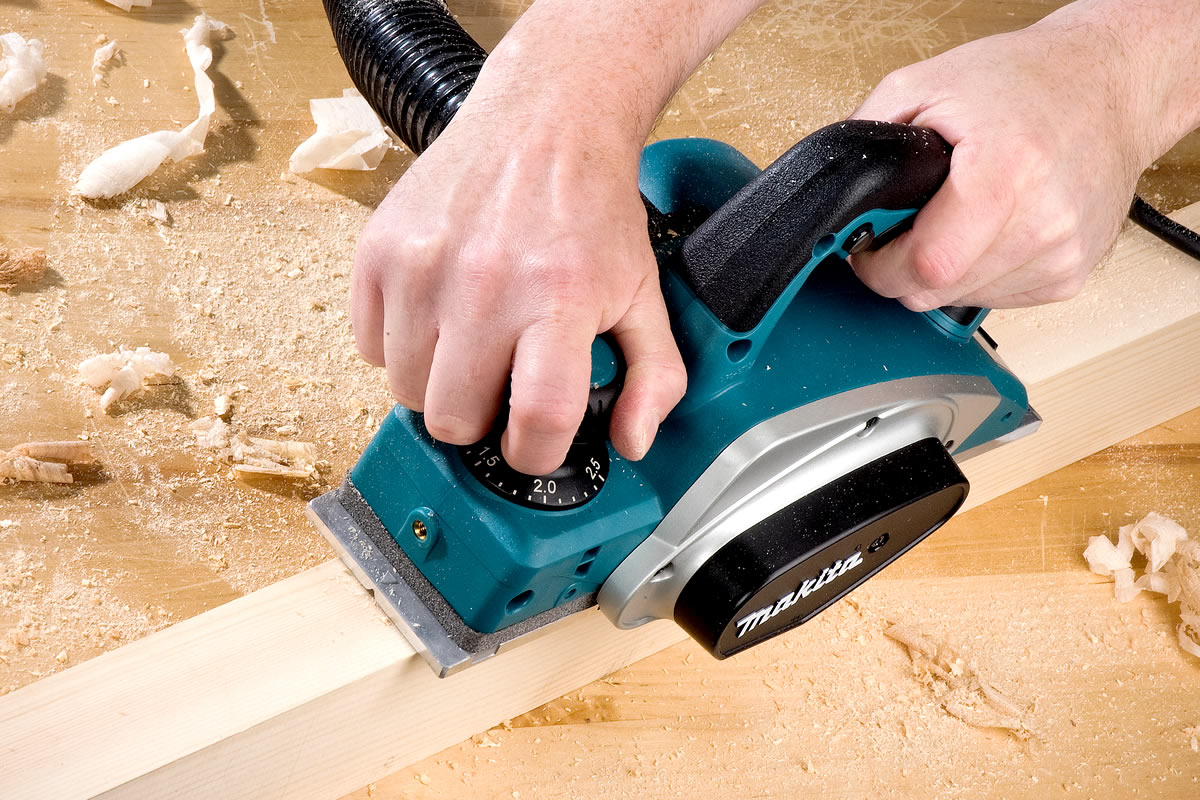
Should I buy one?
Under the right circumstances, where the project or timber is simply too unwieldy to move comfortably around, the power planer is without doubt the correct tool for the job and it’s use will prove decidedly advantageous. They should, however, be used with caution and only after practice on some waste material as they will remove, quite easily, a vast amount of timber.
Once it’s gone, it can’t be put back!
(...unless you own a Rider Reversa!)
Introduction In a workshop, one of the uses of the planer-thicknesser is to prepare rough sawn stock. Before machining, the depth of cut can be regulated by raising or lowering the infeed table. However, where the timber (i.e. a thick oak post or beam) is too large, heavy or inconvenient to lift onto the machine, a portable power planer could…
Introduction
A multitool is precisely that; a tool with a multitude of uses. Apart from a drill/driver, a multitool is probably the most versatile single power tool that the tradesman or homeowner might require. A sophisticated transmission converts the motor’s rotary motion into a very rapid (variable up to around 18000 rpm) oscillating movement of approximately 2°. Systems differ, but essentially, a vast range of alternative blades can then be securely attached to the machine.

Cutting, Sanding & Grinding
Various shaped sanding pads can be quickly attached onto which a huge selection of sanding papers can be stuck by means of a Velcro fastening. One of the most useful pads is the triangular or ‘Delta’ shape, which means that it’s possible to sand right into the tightest recess.
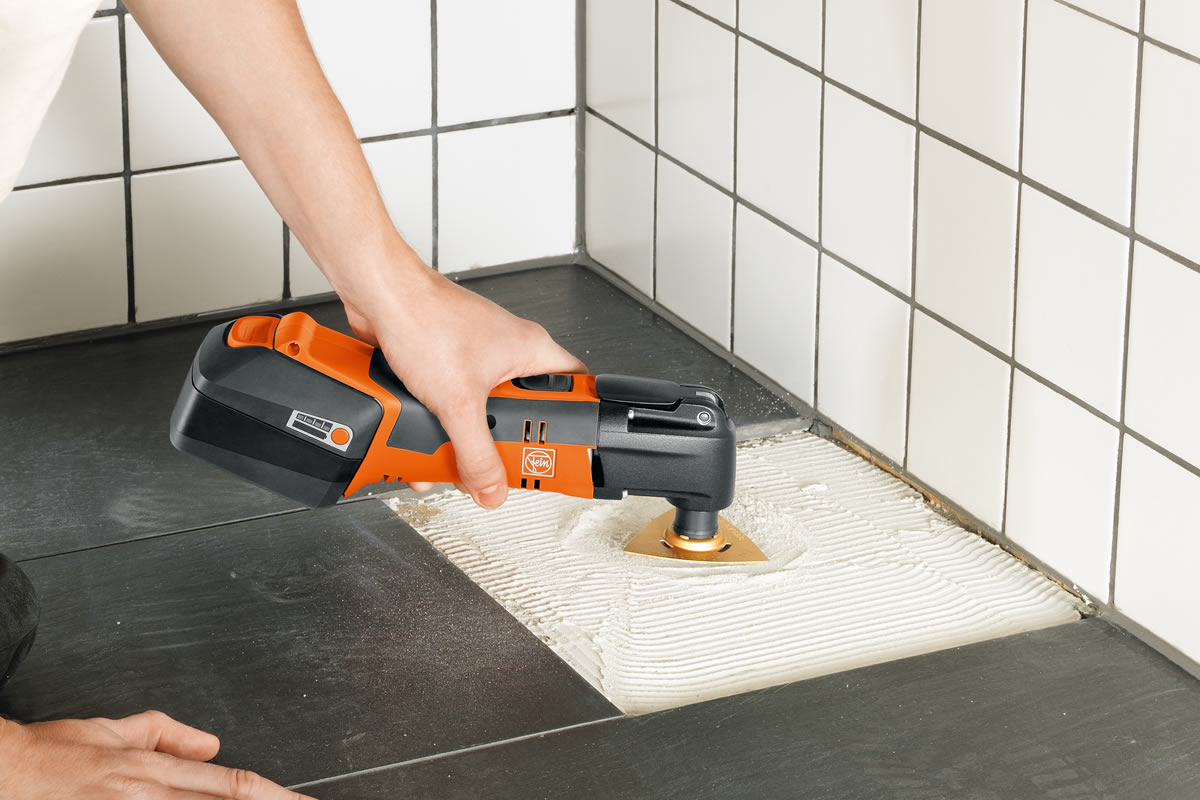
Tungsten carbide blades can be attached; very useful for clearing old mortar or ceramic tile grout.
The other principal use for a multitool is to cut, and for this application, an even greater selection of blades are available, from metal cutting through to diamond saw blades for ceramic tiles.
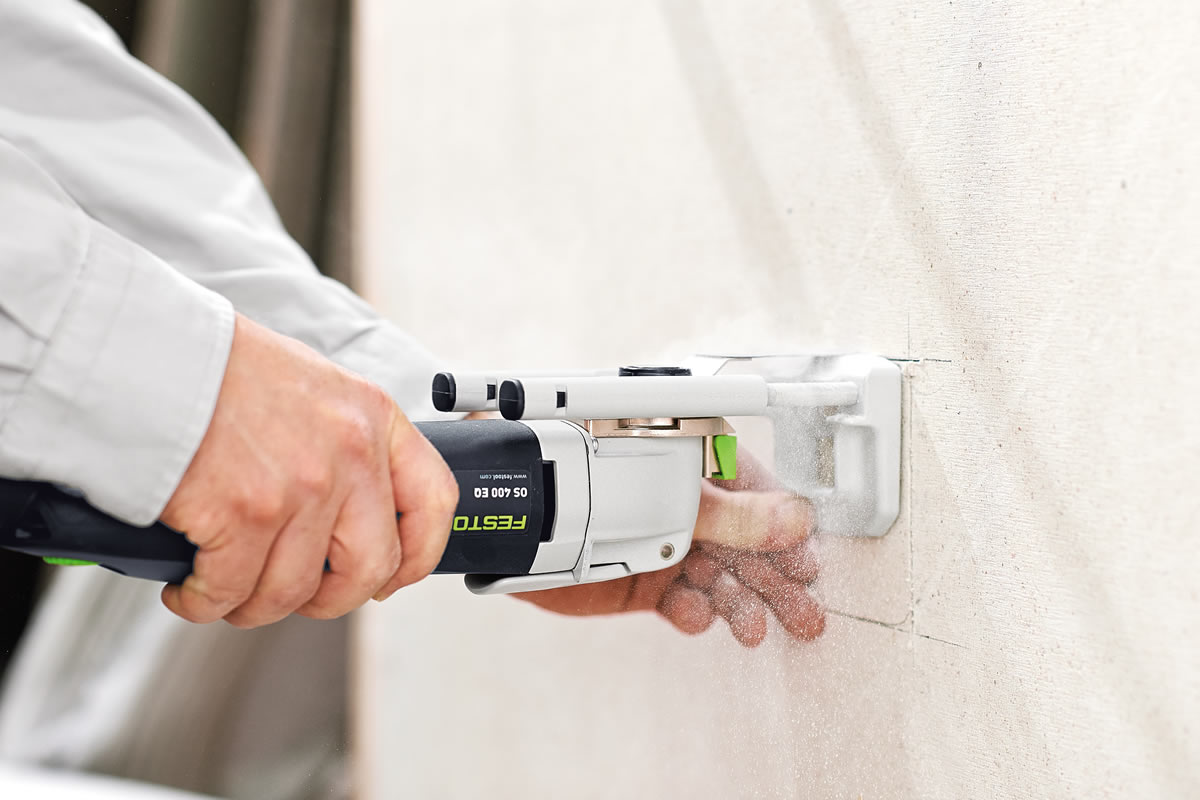
Some blades can be used to plunge cut (for example, to remove a section from the centre of a panel) as well as flush cutting.
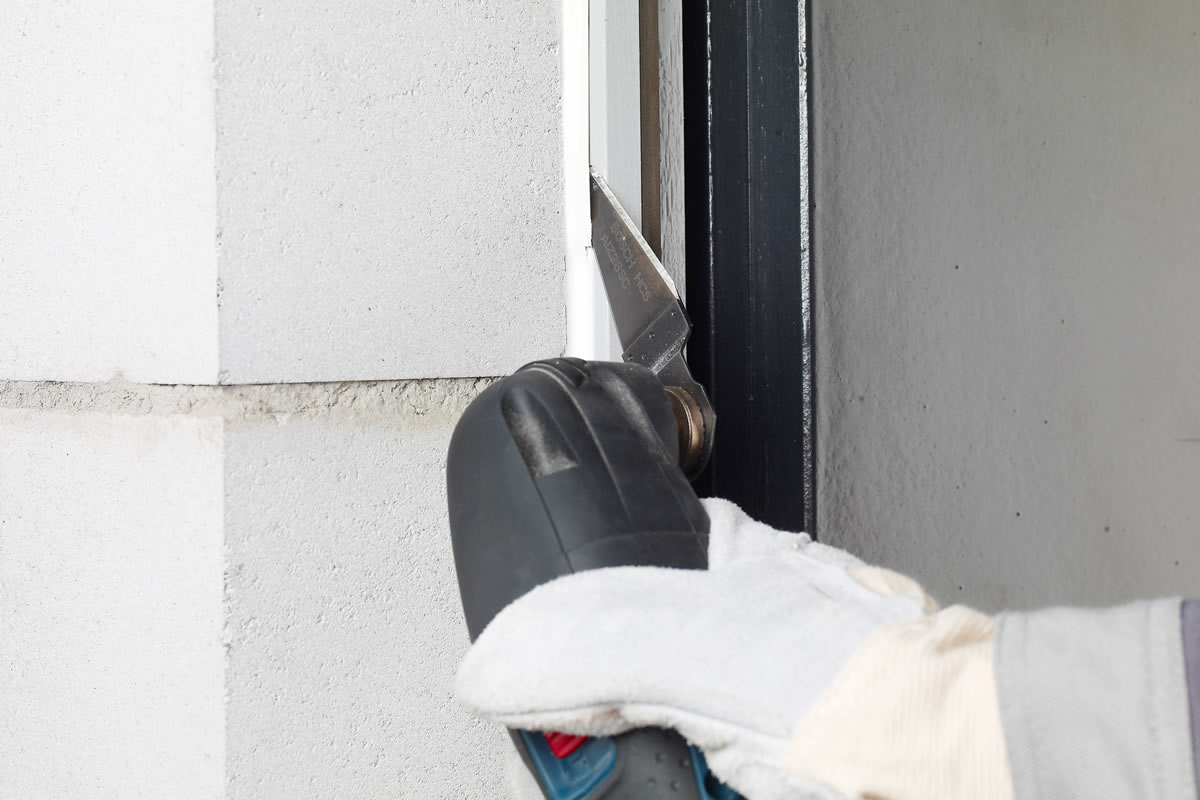
Scraping & Shaping
Another extremely useful addition to the multitool portfolio is the scraper function. Blades can be fitted which will make light work of removing, for example, the residue from carpet adhesive or old undercoat from a vehicle. Shaping is another task easily performed by these machines and for this purpose, tungsten carbide rasps can easily be fitted.
Compatibility
Although different manufacturers produce multitool machines, it’s often the case that blades are interchangeable between different makes. In addition, there may also be alternative methods of attachment within one company’s range of machines.
This is not as complex as it sounds, but the prospective buyer, when looking for alternative blades, is well advised to check that his purchases are compatible with his or her existing machine.
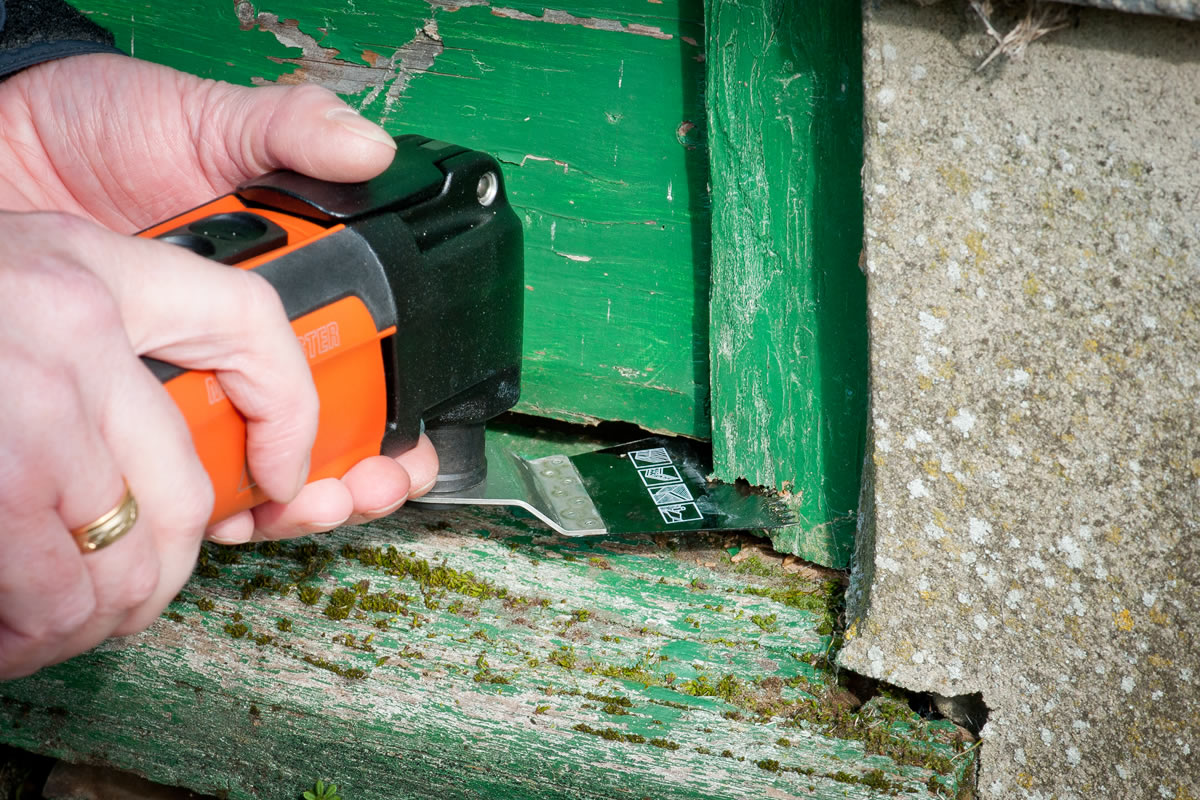
Conclusion
If ever there was a tool that could be described as a ‘jack of all trades’, the multitool probably fits the definition exceptionally well. With the right blade fitted these versatile machines will cut, sand or grind almost anything, from precision cutting in steel to marble, epoxy resin and cement mortar. The uses to which a multitool can be put are only really limited by the abilities and imagination of the user!
Discover more…
If you’ve enjoyed reading this Buying Guide, why not take a look at our other Power Tools Buying Guides? From How to Choose Your Next Power Tool Dust Extractor to overviews on Drill Types, Routers and Plunge Saws, we’ve got something for everyone.
Introduction A multitool is precisely that; a tool with a multitude of uses. Apart from a drill/driver, a multitool is probably the most versatile single power tool that the tradesman or homeowner might require. A sophisticated transmission converts the motor’s rotary motion into a very rapid (variable up to around 18000 rpm) oscillating movement of approximately 2°. Systems differ, but…
Introduction
Compared to many other power tools, the angle grinder is comparatively simple, being in essence a motor with a 90° drive at one end onto which a variety of different cutting, grinding or sanding discs can be attached. These machines are available in three sizes; 115,125 and 230mm but for most tasks on site, at home or in the workshop, the two smaller sizes are more than adequate. On the smaller machines, motor power is usually around 800W.
Angle grinders can produce a lot of debris and noise, so it’s recommended that suitable PPE is worn at all times.

Cleaning
Attach a wire wheel or brush onto the angle grinder and instantly you’ve created a very efficient method for removing paint and rust from flat, broad areas.
Sanding
As an alternative to a wire brush a flexible backing pad can be fitted. This will accept Zirconium abrasive discs which offer very high performance, useful in situations requiring durability with high stock removal.

Cutting & Grinding
One of the most common applications of an angle grinder is to cut metal, though two different discs are required; one for grinding and another for cutting. There are also some diamond discs available that will cut metal as well as brick and masonry and these are probably the most useful of all the different sorts. With some care, a surprisingly delicate cut can be made on ceramic tiles which is particularly useful when trying to fit them round an existing toilet!
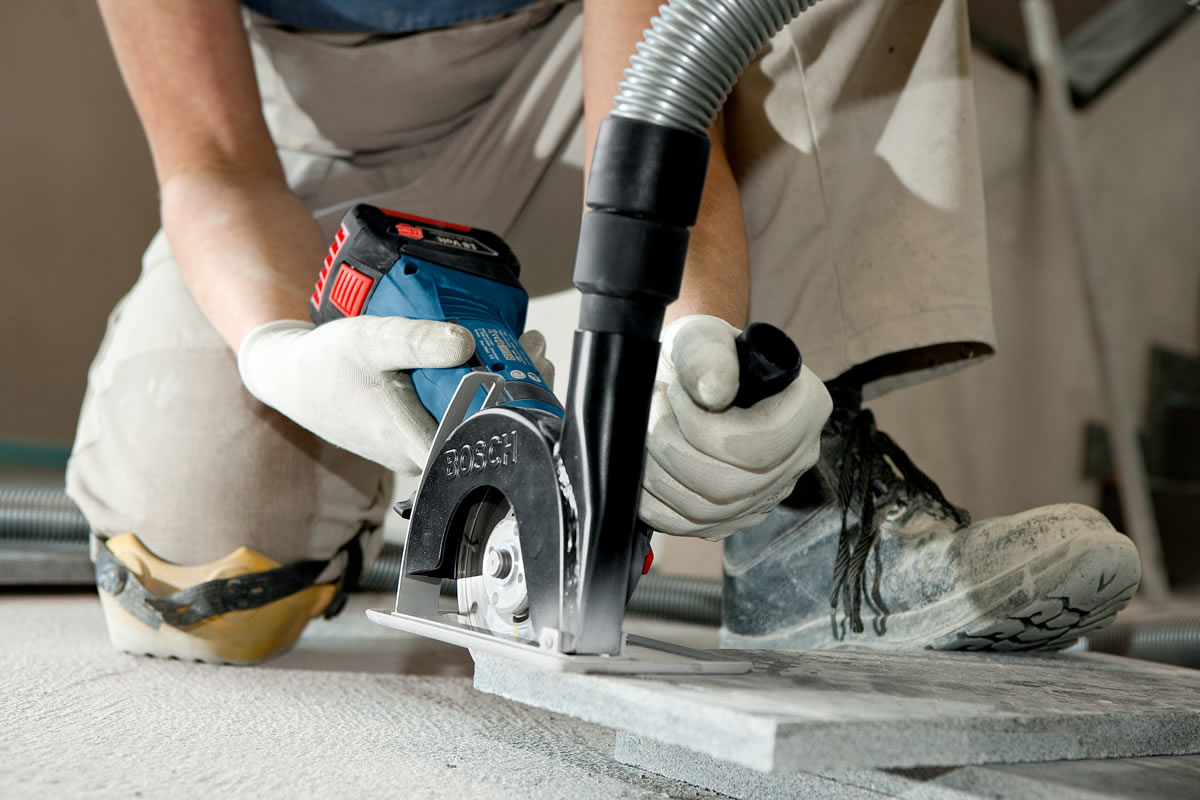
Pointing & Brickwork
Another useful accessory that will fit into an angle grinder is a diamond mortar rake. Re-pointing isn’t the most enjoyable of tasks, but it’s made slightly better when it becomes easier to remove the old mortar.

Carving & Shaping
An angle grinder can also be used very successfully for wood carving and sculpture. A special, heavy tct blade can be fitted to the machine which will remove a huge amount of material in a very short time. This makes it ideal when roughing out the depression in for example, a Windsor chair seat or any other sculptural application where a lot of wood needs to be swiftly removed. It’s particularly relevant with this type of blade that the correct protective equipment is worn when using it and safety guidelines are strictly followed.
Introduction Compared to many other power tools, the angle grinder is comparatively simple, being in essence a motor with a 90° drive at one end onto which a variety of different cutting, grinding or sanding discs can be attached. These machines are available in three sizes; 115,125 and 230mm but for most tasks on site, at home or in the…
Introduction
There are numerous categories of sanders, all of which are designed to sand flat surfaces. Whilst extraction is desirable with most power tools where applicable, it’s essential with a sander as over time, the inhalation of the dust is highly damaging to your health.
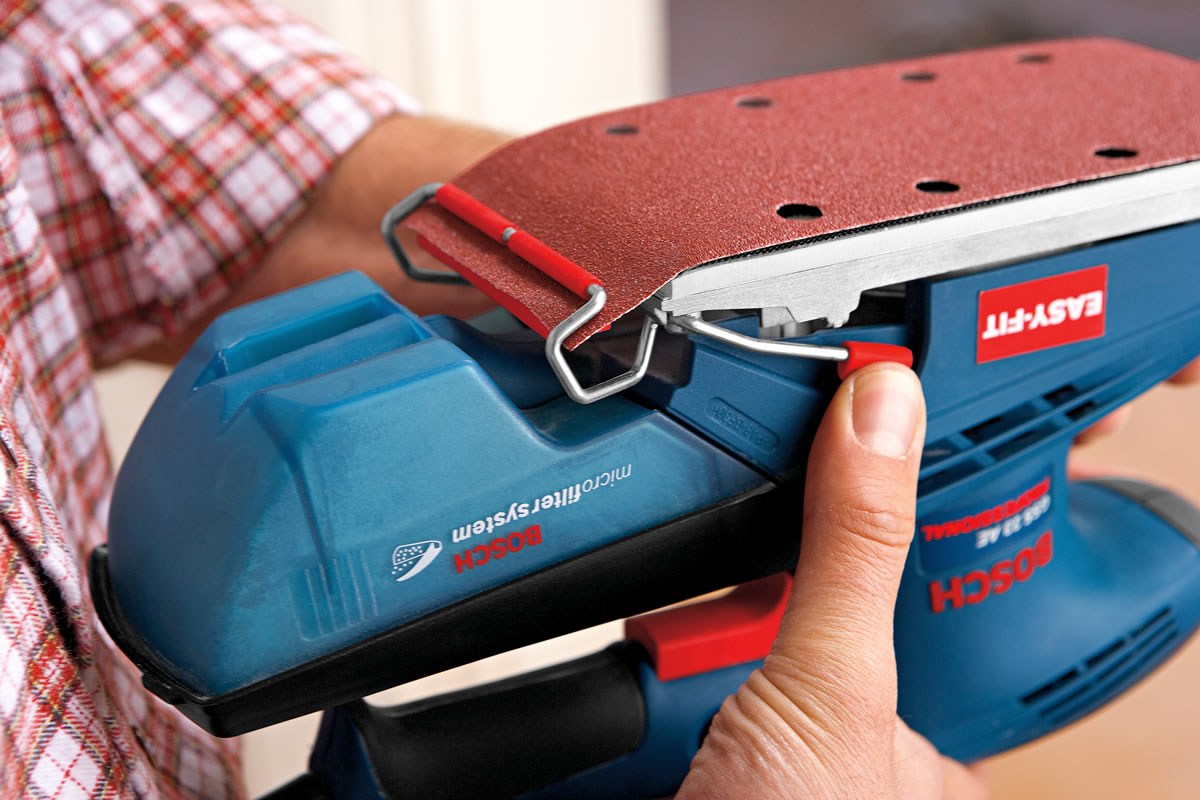
Orbital Sanders
Often called ‘finishing’ or ‘sheet’ sanders, they’re available in various sizes and are known as Palm, Third or Half-Sheet. The triangular version for sanding into very confined spaces is called a Delta sander. The orbital action is driven by the motor which rotates the pad in a tiny circular motion at high speed. This type of machine is prone to leave a series of sanding ‘swirls’ on the material but this can be reduced to some extent by a light touch and efficient extraction.
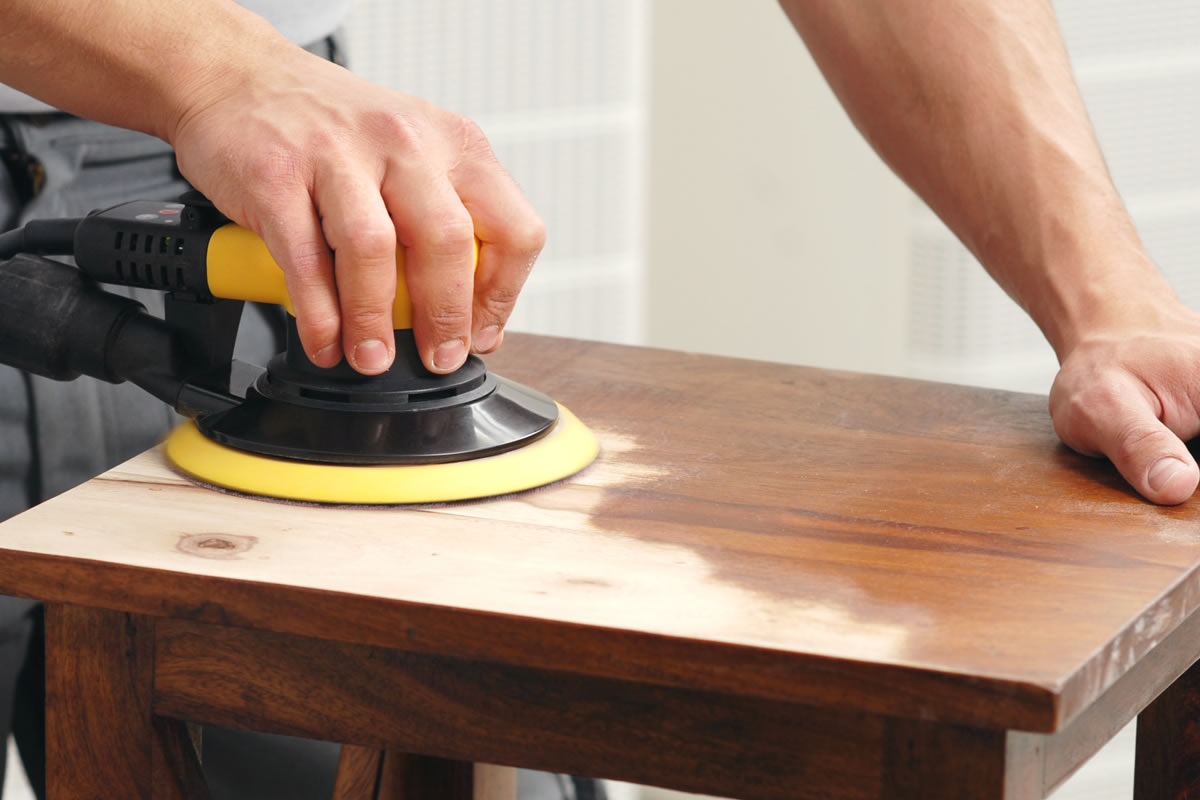
Random Orbital Sanders
The random orbital sander will remove waste rapidly with a coarse grit paper, but is also suitable for fine sanding and will leave very few marks on a finished surface. Polishing felt and mops are also available for certain machines. The sanding motion is also circular except that the random orbit action comes from a special offset drive bearing which move the pad in an elliptical manner. When these two motions are combined, they cause the pad to rotate randomly, which tends to reduce the tiny circular ‘swirls’ as no single part of the abrasive material travels along the same path twice.
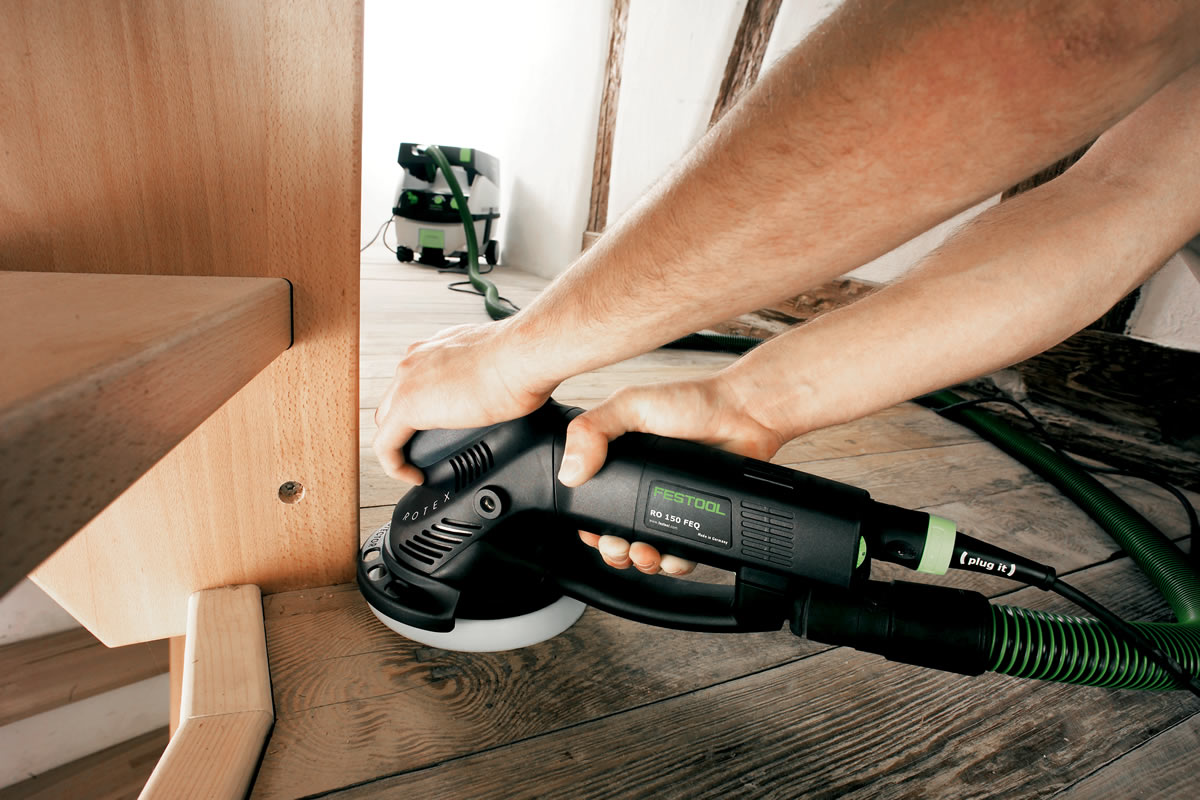
Dual Action Sanders
These are a heavier version of the random orbit sander, but use a powered rotation for much quicker work progression, which results in the best finish. They are able to switch between coarse, fine and polishing mode and are best known in the automotive trade, but have become much more popular in the woodworking industry in recent years. These machines work in a similar way to the random orbital sander but the shaft moving in the orbital action is gear driven so it’s always spinning, resulting in a superior finish.

Belt Sanders
As the name suggests, these sanders use a continuously rotating endless belt to sand the workpiece. Fitted with a coarse belt, one of these machines will remove a huge amount of material, so they should be used with some caution. For more accurate sanding and for larger areas, it’s recommended to use a sanding frame whenever possible. A useful feature is that some machines have the facility to be inverted and clamped to a work surface, which turns them into a small linisher.
Machine Sanders
Sanding machines in all their forms will perform three overall tasks; shaping, smoothing and removing woodwork. But, with so many different makes and models it can be a tough decision knowing which sander is right for you. Read this guide to learn about the variety of machine sanders we sell which is right for the work you're doing.
Introduction There are numerous categories of sanders, all of which are designed to sand flat surfaces. Whilst extraction is desirable with most power tools where applicable, it’s essential with a sander as over time, the inhalation of the dust is highly damaging to your health. Orbital Sanders Often called ‘finishing’ or ‘sheet’ sanders, they’re available in various sizes and are…
Routers- a brief overview
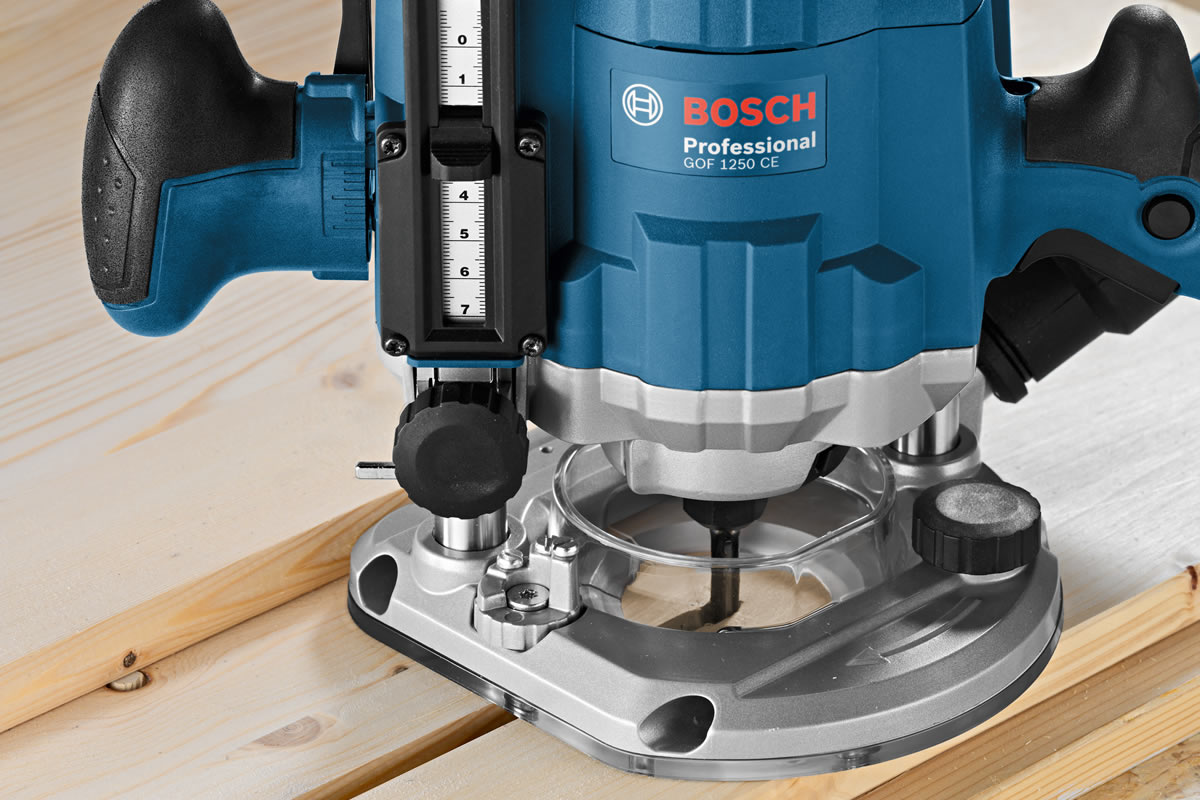
Common Features of all Routers
All routers work in a very similar manner; a cutter grips in a collet which is in turn attaches to the spindle of an electric motor. A pair of parallel steel shafts enable the motor housing to slide vertically up and down. As a result, the cutter can plunge into the timber. All routers are supplied with a fence. This means that the machine registers against the workpiece to ensure a straight cut.
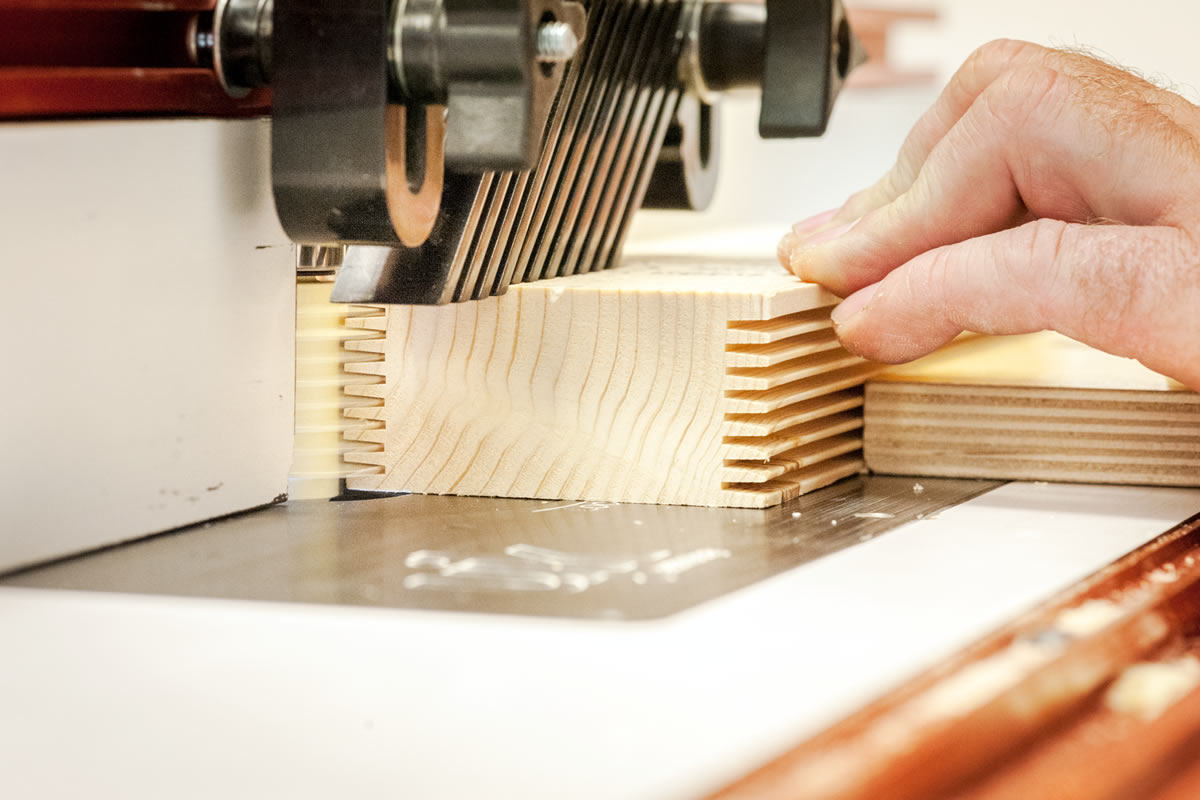
How Many?
The constant removal of a large, powerful router from the underside of a table is an unenviable task. For convenience, leave the router permanently installed so that it’s ready for instant use when the need arises.

That said, these very large, heavy machines are unwieldy beasts. They can become awkward and somewhat dangerous for hand-held use. Therefore, it’s very desirable to have an additional smaller, or mid sized machine to use at the workbench.
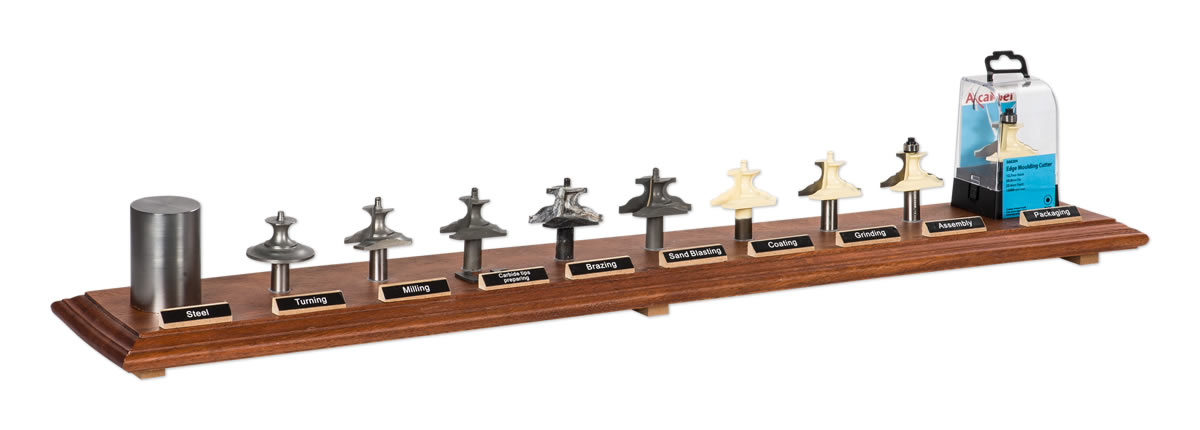
Router Cutters
There is a vast range of router cutters available to suit all applications from machining a simple rebate to the most complex joint profile. Smaller sizes usually have a shank diameter of ¼“ with larger cutters having a diameter of ½”. When using a small cutter the speed of rotation should be high with the very largest diameter bits running at a maximum speed of 12000 rpm. This ensures that the peripheral speed of the cutting edge remains approximately the same. The same will apply regardless of whether a large or small cutter is used.
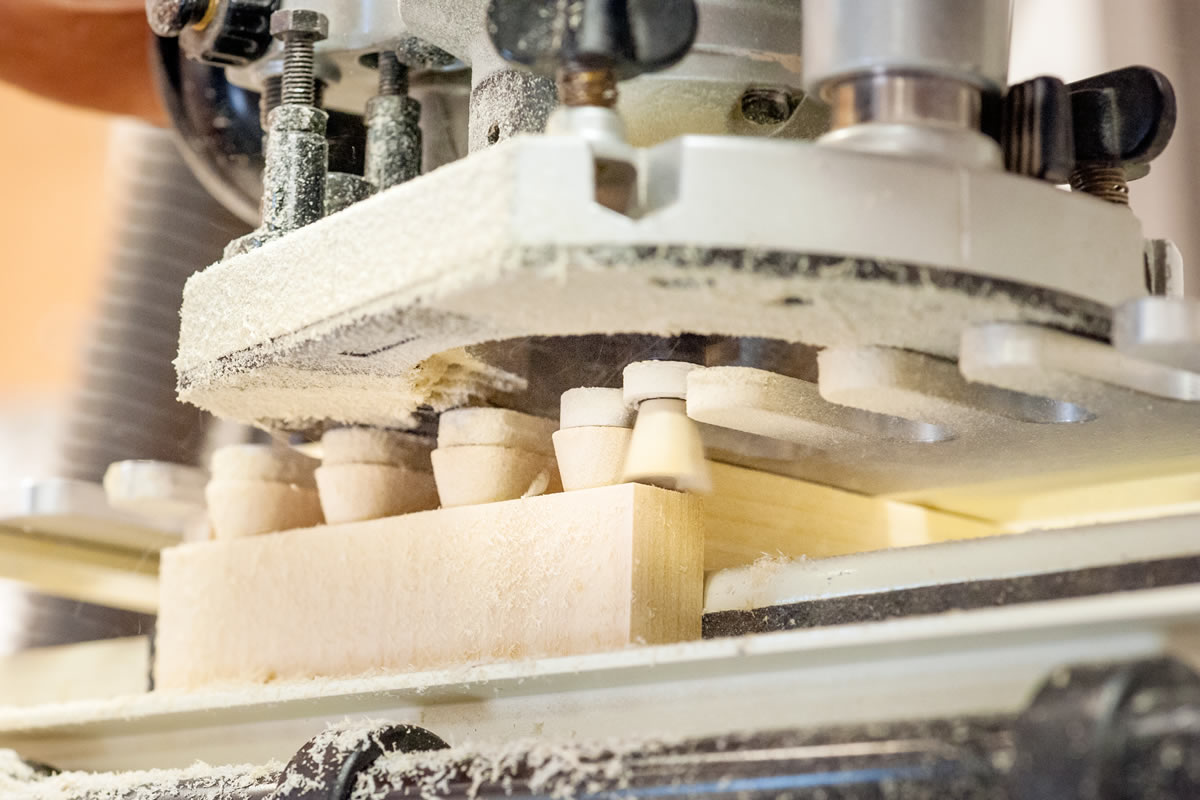
Router Capabilities
The capabilities of the router are immense and are further increased by the use of jigs, for example to cut hinges, staircase treads and slots or mortises as well as a whole host of other applications. Use a router in a dovetail jig and almost instantly the user will be able to make a wide variety of different corner joints. By inverting a router and using it in a table is perhaps the most useful application. Use a large, dedicated machine in a router table to carry out different sorts of machining tasks. Without this, it might be difficult or dangerous to do with just a hand held machine.
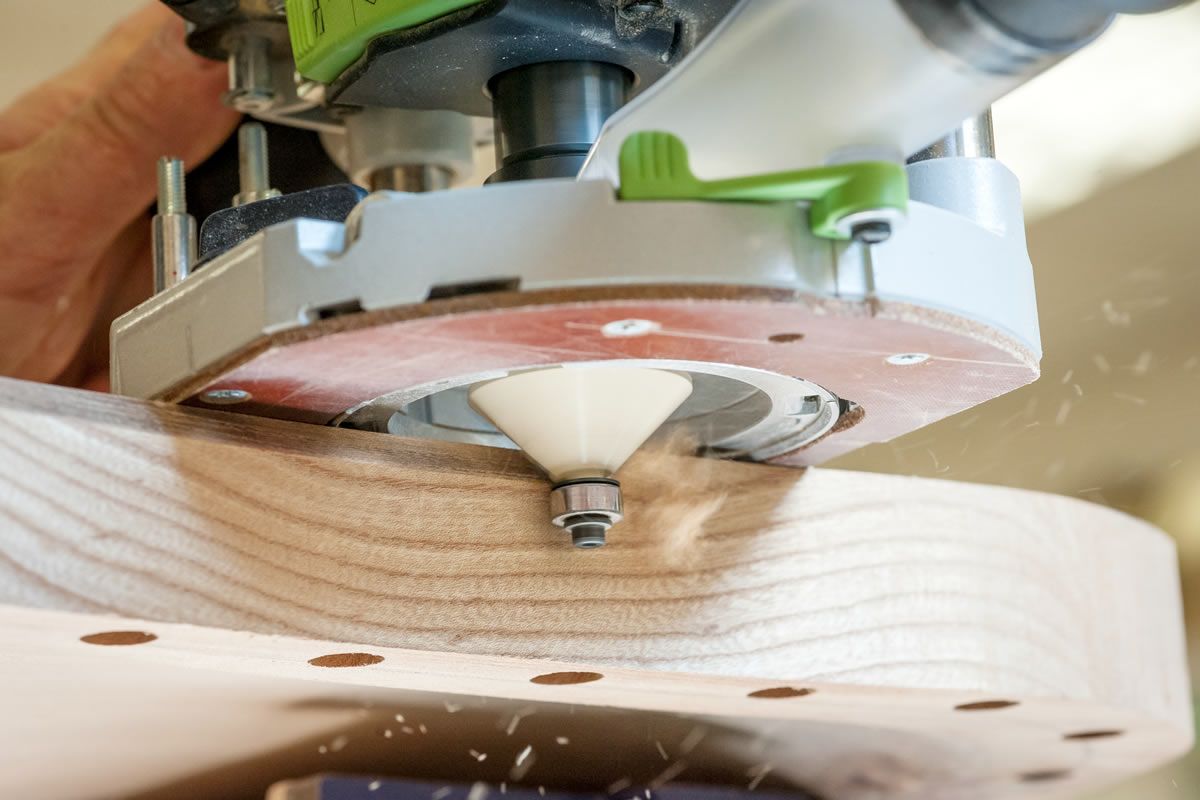
Conclusion
With the caveat of proper use and adherence to correct H&S procedures (which applies to all machinery) the modern router, together with its accessories, is unrivalled in its versatility. In conclusion, it is the most indispensable power tool of any sort tool available to the woodworker.
Discover more…
Take a look at our Knowledge piece - A Selection of the Best Router Table Accessories for an overview on how to select the best router table accessories for your workshop. The setup of your table and the accessories you select are the determining factors on the results that you will derive - read on to find out more. Furthermore, our Nine 1/2" Router Cutters To Grow Your Collection is a great piece if you are looking to expand your woodworking collection. Take a look at our selection of nine ½” router cutters to add to your assortment of quality, useable cutters.
Like them or loathe them, the router is the most adaptable and versatile machine in the woodworker’s arsenal. There’s no other power tool capable of machining repeated, highly accurate profiles which is the reason why they are so popular. Here we explain some of the common features of all routers, router cutter options, how many routers is too many (if that’s even possible!) and router capabilities.
All you need to know about the latest power tool battery technology.
Buying into an 18V cordless platform now becomes an investment as prices for additional batteries aren't insignificant, especially as the ampere-hour (Ah) increases. Each battery has its own unique advantages within the 18V series, whether that’s price, performance or warranties. Still, when making the investment it’s important to be clear about what the benefits are.
There’s nothing wrong with my memory
Battery terminology can make things confusing and advances in Lithium-Ion technology mean that what was once applicable to older power tool batteries is now not the case. Memory Effect or battery memory is a term that applies with older NiCd and NiMh batteries. Here the battery remembers the last capacity point. In essence if a battery is continually recharged after a short discharge, the maximum capacity is lost. What happens is the battery memorises the level of the last charge and starts from that point.
True or False - you should fully discharge Li-Ion Batteries in order to maintain capacity?
False. While it’s true that NiCd and NiMh batteries need to be fully discharged to keep their optimum condition. The opposite is true for Lithium-Ion batteries which should NOT be left to fully discharge. This can actually damage the battery. Li-Ion also doesn’t suffer from Memory Effect and so can you can charge these at any point.
As soon as the performance of the battery decreases and you feel a loss of power, get the battery on charge. It doesn’t matter if the battery isn’t at 100% before using it again. As long as some extra charge is put in, it’s ok to part charge these. Bosch's wireless batteries work on this principle so you can simply top up as you work without straining the battery.
Never let the battery run all the way down. For example, if you’ve got one last screw to turn and then the battery is depleting, don’t force it over the final furlong. You shouldn’t keep your finger on the trigger and keep turning to try and drive the screw. Let it rest and put the battery on charge. Forcing it is a definite way to damage the battery. You can always top it up briefly and then come back to finish.
Who has absolute power?
Each manufacturer’s power tool batteries have their own distinct advantages. It’s up to you to decide which best suits your needs.
Makita's unique position with its 18V battery is that it has the world’s largest range of compatible cordless tools. Over 100 of Makita’s tools can be powered by their 18V Lithium-Ion battery. This gives you a huge selection to work with. They also have some of the fastest charging times. Charging a 3Ah battery takes 22 minutes, 4Ah ready in 36 minutes and the 5Ah complete in just 45 minutes.
By comparison, Bosch has some of the smallest and lightest batteries on the market. This can make a real difference especially when doing a lot of overhead work. They also have a robust construction, having been tested to withstand being dropped from 3 metres. Inside, each battery comes with Electronic Cell Protection (ECP) which protects the battery against total discharge, overloading and overheating. See the results of their heat test here.
Festool's new AIRSTREAM battery again comes with leading battery technology and the company highlights the cell balancing that goes into its units. This involves carefully selecting equally matched cells, resulting in proportionate charging and discharging cycles which prolong battery life. The new AIRSTREAM battery also has a cooling system in combination with the SCA 8 charger, which draws air over the battery to cool it. As a result this reduces charging times by up to 65% so you can get back to work faster.
Interestingly, Festool and FEIN are so confident in the quality of their batteries that they have a 3 year guarantee on Lithium ion batteries and chargers.
Axminster's battery for the Makita 18V Li-Ion cordless tools, however, uses Samsung SDI cells. Analysing the battery cell market, Samsung SDI is the market leader in small size rechargeable batteries producing 315 million cells a year. As a result they know what they’re talking about when it comes to batteries. There are many cheaper replica batteries out there using inferior quality cells and that’s when you have problems with the batteries failing after a few cycles.
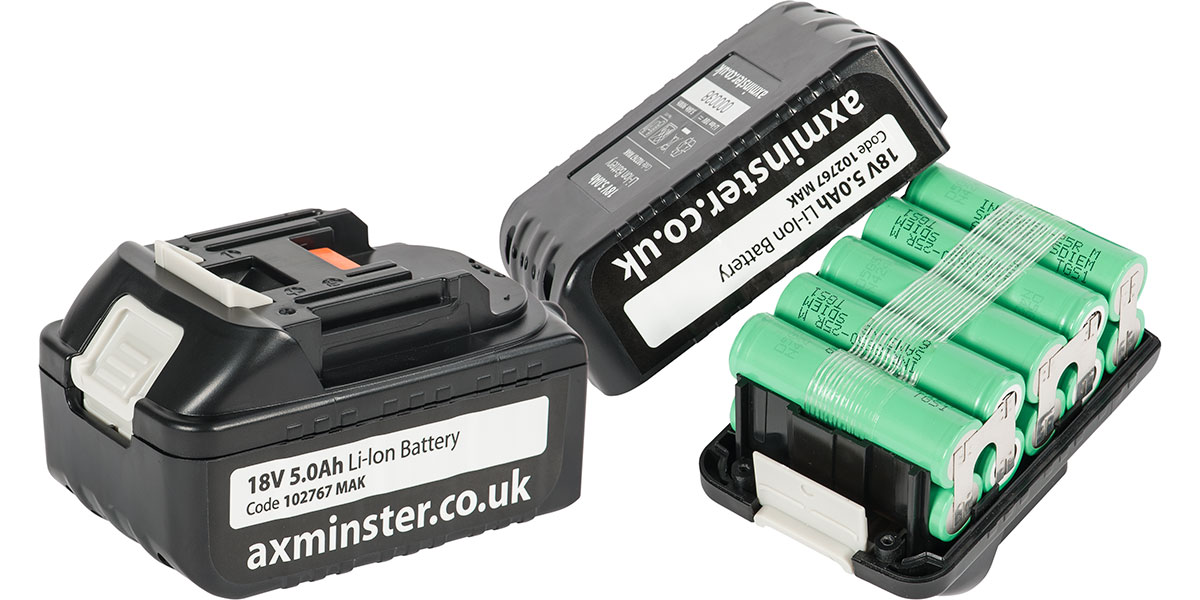
New power tool battery technology
One of the most recent developments to the market is DeWALT's new FLEXVOLT battery. The batteries are fully compatible with existing DeWALT 18V XR tools and when fitted to the new DeWALT XR FLEXVOLT tools the voltage then surges to an unparalleled 54V. FLEXVOLT is a world first with this new 18/54V battery platform and the aim as DeWALT state is to give you: "the power of corded, freedom of cordless."
Bosch has developed a world first with their wireless charging system. This is able to charge the wireless battery without having to take it out of the tool as with the GSB 18-12-LI Plus Combi Drill. If time is of the essence, as it invariably is, this is perfect in repetitive situations where you need to pick up and put down the tool over long periods. The battery continually tops up without interrupting your work.
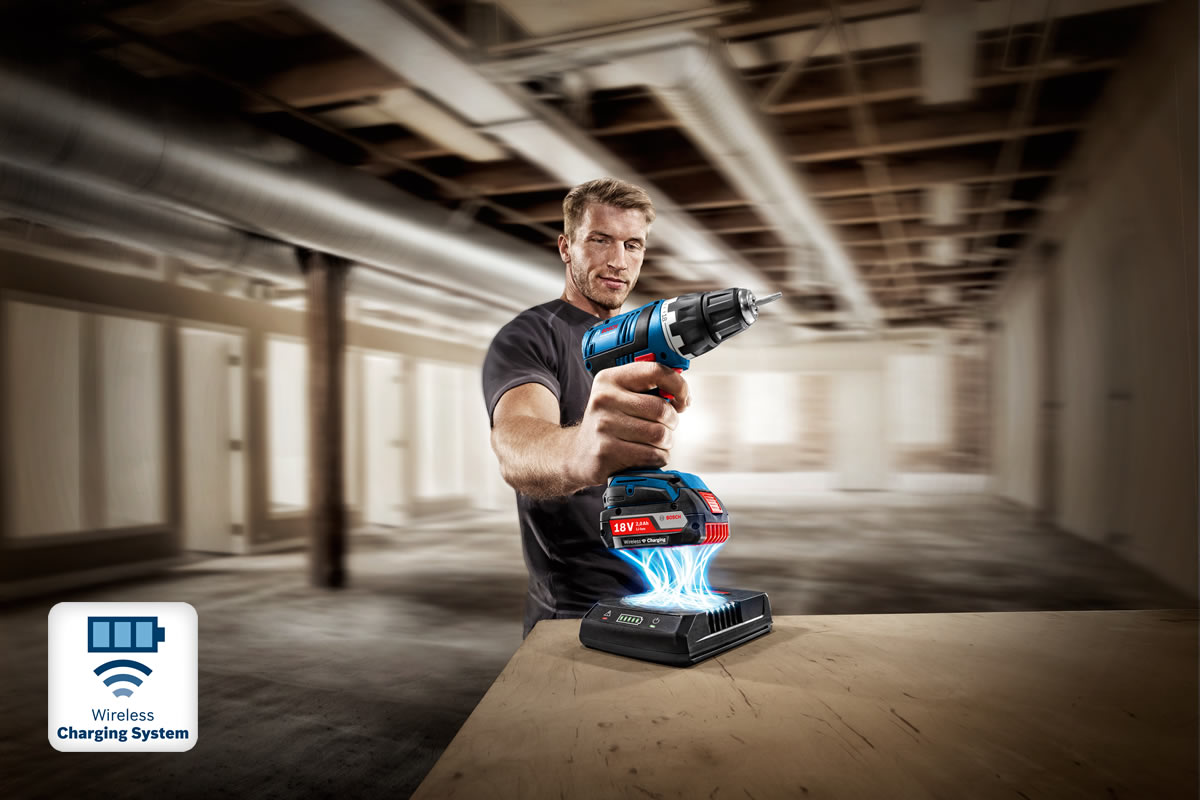
With all these advances to battery power, there is now some interesting technology that can utilise this power, not only for your tools but also your mobile device.

Over time the power of batteries is surely set to increase with higher ampere-hour (Ah) and longer run times. If you look after your power tool batteries, this will help to prolong their life to give you even greater value for money. Here are the optimum conditions for maintaining batteries and some further specifications to help you differentiate between manufacturers.
How to store your batteries
Make sure batteries aren’t subjected to extremes of heat. Ideally you should keep them at room temperature as heat is one of the main reasons Li-Ion battery life depletes. So avoid leaving power tools in the car or van if they're going to be out in the sun for a long time. Equally freezing conditions can reduce the lifespan of the battery - something to remember on those long winter nights.
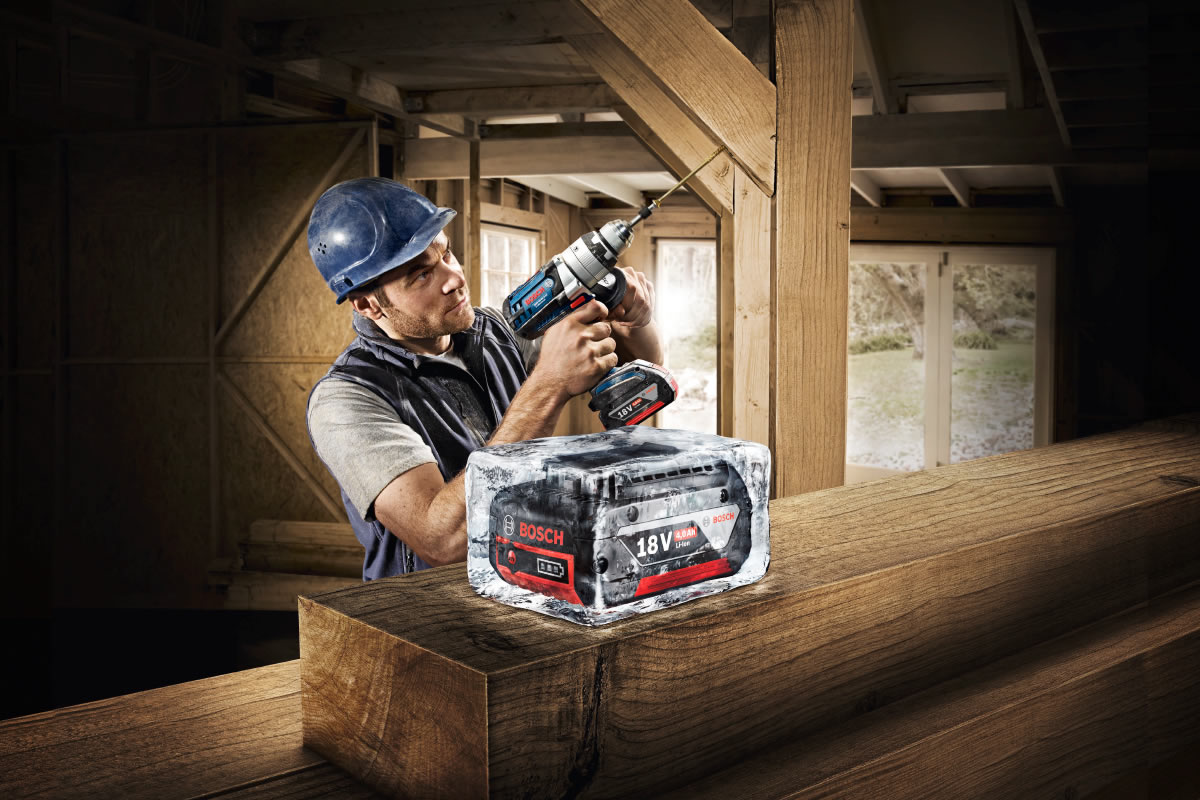
Obviously when the batteries are in use continuously for longer periods, this can cause the core of the battery to heat up considerably. This is something that the people in white coats at Bosch have counteracted with their CoolPack technology. Similar in refrigerator functionality, the casing conducts heat so it can dissipate away from the core cells. This gives you both longer runtime and battery life.
Discharge rates have also improved with Lithium-Ion technology. This means that when batteries are not in use, the charge is held within the battery for longer. If you’re not using your power tool for an extended period however, ensure there is some charge left in the battery. Leaving a battery to fully discharge for a long time is one of the quickest ways to cause it to fail.
Compatibility
As power tool batteries evolve, using the wrong type of battery can cause problems if placed in the wrong tool. You want to make sure you’re using the right battery and each manufacturer has its own way of identifying the correct compatibility.
With Bosch, quite simply if the battery doesn’t fit in the tool then it’s not the right battery. The design of Bosch batteries means the corresponding batteries will only slot into the corresponding tool. Similarly only relevant (4Ah/18V) batteries will fit in the relevant charger.
One exception is Bosch's 4Ah wireless battery. These are compatible with all Bosch 18V Professional Li-ion tools except the GKS 18V-LI Circular Saw. You can however recharge the batteries on any Bosch 18V Li-ion charger. So you get the time saving benefits of wireless and the compatibility of connecting them straight to a standard charger.
Makita's compatibility checker works on the principle that if it has a star or a yellow connector then you’re good to go. The 18V 4.0Ah and 5Ah (BL1840 / BL1850) batteries will work with your 18V tool if it has any of these three characteristics:
- A star on the connector plate
- A star on a yellow connector plate
- Or just a yellow connector plate
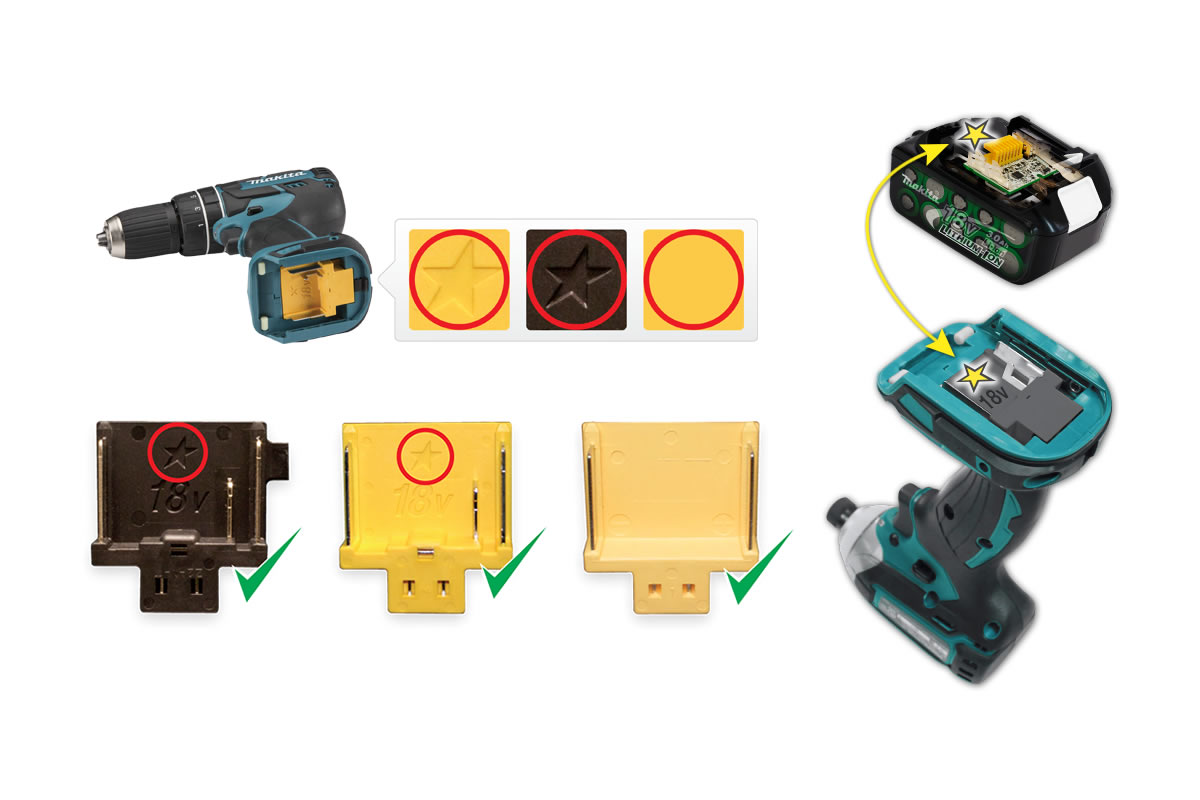
Festool's new AIRSTREAM batteries are compatible with each of the following tools: C 18, T 18+3, DRC 18/4, PDC 18/4, BHC 18, DWC 18 and PS(B)C 420, HKC 55, TSC 55, SYSLITE KAL II, SYSLITE UNI and the SYSROCK
Warranties
- Axminster - 1 year
- Makita - 1 year
- DeWALT - 1 year
- Bosch - 2 years
- FEIN - 3 years
- Festool - 3 years
Festool's SERVICE all-inclusive guarantee also applies to its batteries and chargers. Remember this covers repair costs as well as theft for up to 36 months. But to ensure you have cover you need to register.
A buyer’s guide to power tool batteries. All you need to know about 18V batteries, how to store them, compatibility and the latest developments.
All Things Plunge Saws
A hand held circular saw is a fairly basic and almost essential part of any workshop. Simplistically, a motor, saw-blade together with it's spring loaded retractable guard are pivoted above a base plate. Undoing the locking mechanism allows the blade to drop beneath the base plate. This sets the desired depth of cut. With the saw blade locked at the correct depth for the material, the guard retracts behind the blade as the cut proceeds, springing back to completely cover the blade once finished.
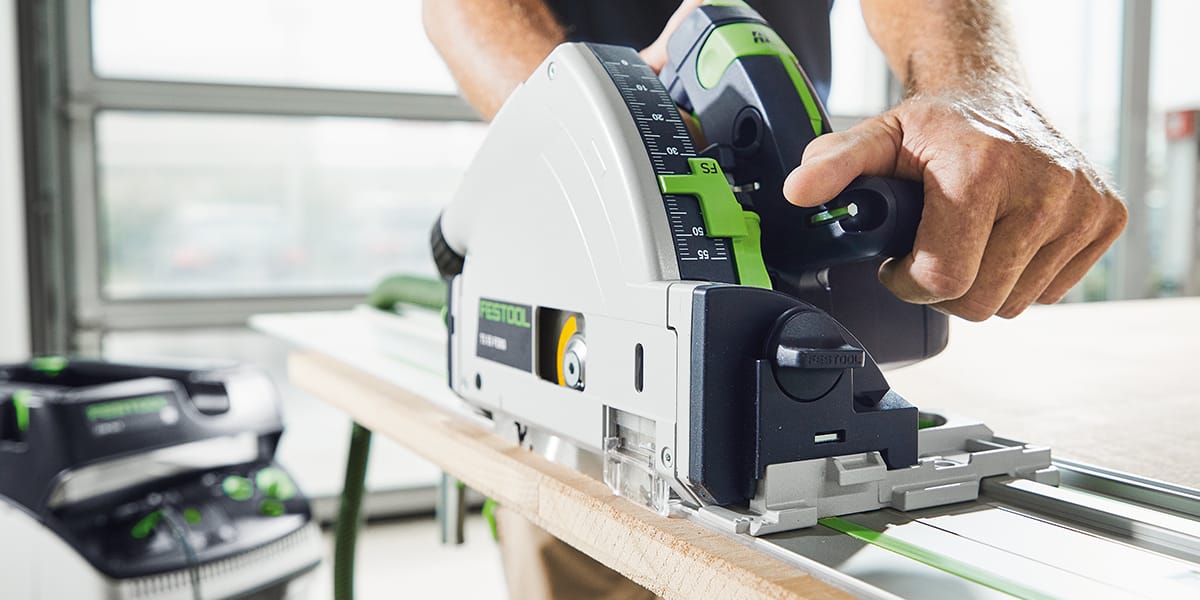
Common features of all plunge saws
A relatively recent innovation has been the development of the 'track saw' which differs from a conventional circular saw in a number of important ways. The motor and blade assembly (the top half of which is completely covered) is still mounted above the base plate, but now the whole assembly is sprung loaded and there's no retractable blade guard to obscure the saw cut. As a result, the blade can be plunged vertically past the side of the base directly into the work. This means that the cut could begin in the middle of a large board, whereas with a conventional circular saw, it's customary to start at one edge.

Depth of Cut
The depth of cut can be accurately pre-set and the riving knife is spring supported so that it retracts automatically into the housing when the saw is plunged. As the saw is pushed forward, the riving knife drops down behind the cutter so the blade doesn't bind, ensuring a safe cut. The plunge saw comes into its own when complex apertures and cut-outs need to be produced as it allows total control of the machine at the beginning and completion of a cut. The flush housing also enables these saws to plunge and cut very close to the edge of a wall, which is a useful feature when cutting flooring to size.
Track & Splinter Guard
These types of saws are usually used with a extruded aluminium track which produces a dead straight and very accurate cut. All makes incorporate a 'splinter guard' which minimises splintering on the top surface of the board. The strip is affixed to the edge of the track and is cut by the saw blade the first time it's used. Thereafter, it supports the upper face of the material whilst it's being cut. Provided that the splinter guard is correctly lined up with the 'start' and 'finish' marks on the board, a track saw will cut with remarkable accuracy.
Tracks can be joined seamlessly together to form an extended guide enabling a long cut down the length (or even longer if required) on a full sheet of mdf or plywood and are securely fixed to the board with a pair of special ratchet lever clamps. As well as plunging vertically through the material, the motor housing and blade can also be beveled and locked from 0-47° for mitred or coopered work.

Dust Extraction
In common with many power tools, these plunge saws can be connected to a vacuum extractor to remove the sawdust. The dangers of wood waste can't be overstated and if MDF is being sawn, the extractor should be to class 'M' specification.
Voltage
An important aspect of all plunge saws is that they are offered either as 230V or 110V, which make them suitable for site work.
Need help?
If you still can’t decide on which sander to choose, why not get in touch with one of our Axminster Experts? Either pop into your local Axminster store and chat with our experienced sales advisors, call our dedicated Customer Services team for advice or talk to us through our Online Chat function on our website. As always, you can get in touch and ask questions via any of our social media platforms. We are here to help you!
Discover more...
If you’ve enjoyed reading this Buying Guide, why not take a look at our other Power Tools Buying Guides? From How to Choose Your Next Power Tool Dust Extractor to overviews on Drill Types, Multitools, Routers and Sanders, we’ve got something for everyone.
All Things Plunge Saws A hand held circular saw is a fairly basic and almost essential part of any workshop. Simplistically, a motor, saw-blade together with it’s spring loaded retractable guard are pivoted above a base plate. Undoing the locking mechanism allows the blade to drop beneath the base plate. This sets the desired depth of cut. With the saw…
Nineteen sixty eight was a pretty momentous year. The first Boeing 747-100 rolled out in the USA, Apollo 8 orbited the moon and ‘Hey Jude’ got to the top slot in the charts for a couple of weeks. It was also the year that Herman Steiner’s company produced the first hand-held biscuit joiner in Liestal, Switzerland.
We’re all familiar with the company today under the name Lamello and it was Lamello who first invented the idea of joining two adjacent panels with thin wafers of wood. The idea grew and was adopted by woodworkers around the globe as a quick and effective method of joining together not only panels, but also carcase work. Some years ago, I bought a C2 biscuit jointer, a fairly basic machine and one which has now been superseded by far more sophisticated models. Nonetheless, the accuracy with which Lamello equipment is made means that it’s possible to join two pieces of material together with pinpoint precision.
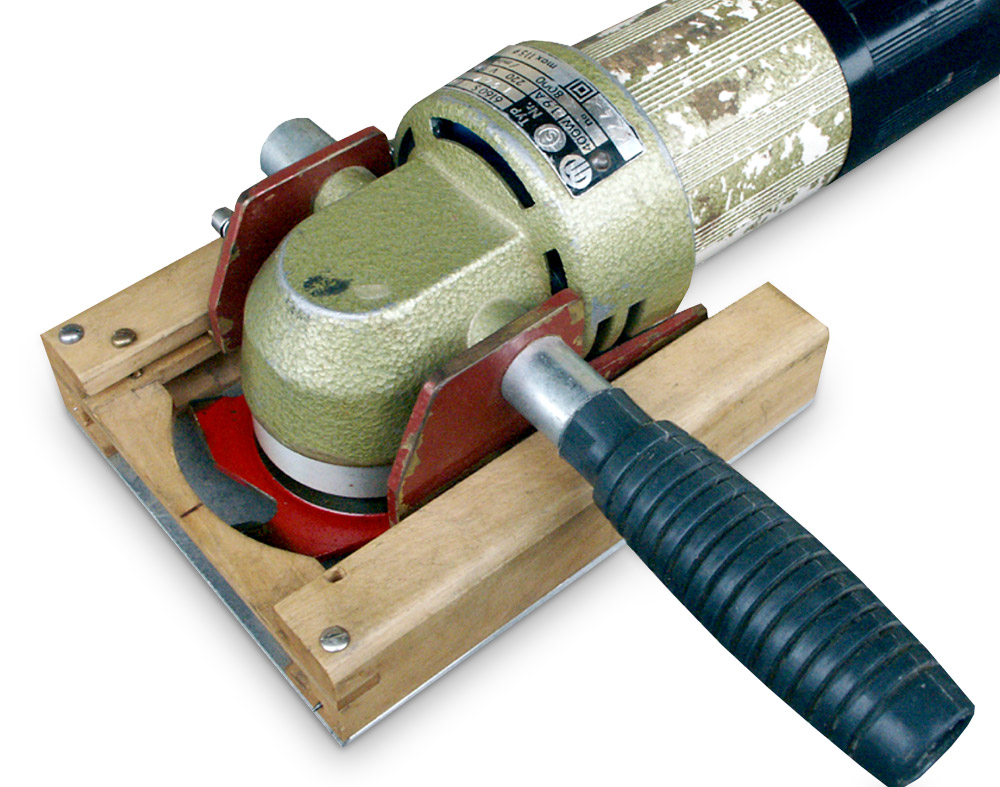
Roll on a few decades and German company Festool introduced another new jointing machine - the now famous and highly acclaimed Domino which set the woodworking world alight. Although the technology was brand spanking new, the methodology wasn’t as it’s just a very swift way of producing a traditional ‘loose tenon’ joint.
However, it was now no longer necessary to mark out and cut a laborious mortice and tenon. Here was a machine which could do the same thing in the twinkling of a cabinetmaker’s eye. I lusted after one of these little beauties like miser’s gold and eventually managed to buy a really decent second hand one a few years ago, complete with several cutters and a big box of doms. I now use it for most construction work and wouldn’t dream of even thinking about making an ordinary mortice and tenon joint.
The Lamello biscuit jointer and Domino machines are fantastic bits of kit, no question. They can be used for similar purposes and they both complement one another, even though they each work on a different principle.
The million dollar question is...
...which is better, the Domino or biscuit jointer?
If you would like to join in the debate, please leave a comment at the bottom of this Blog entry or, alternatively, join in the fray on our Facebook page.
Nineteen sixty eight was a pretty momentous year. The first Boeing 747-100 rolled out in the USA, Apollo 8 orbited the moon and ‘Hey Jude’ got to the top slot in the charts for a couple of weeks. It was also the year that Herman Steiner’s company produced the first hand-held biscuit joiner in Liestal, Switzerland. We’re all familiar with…
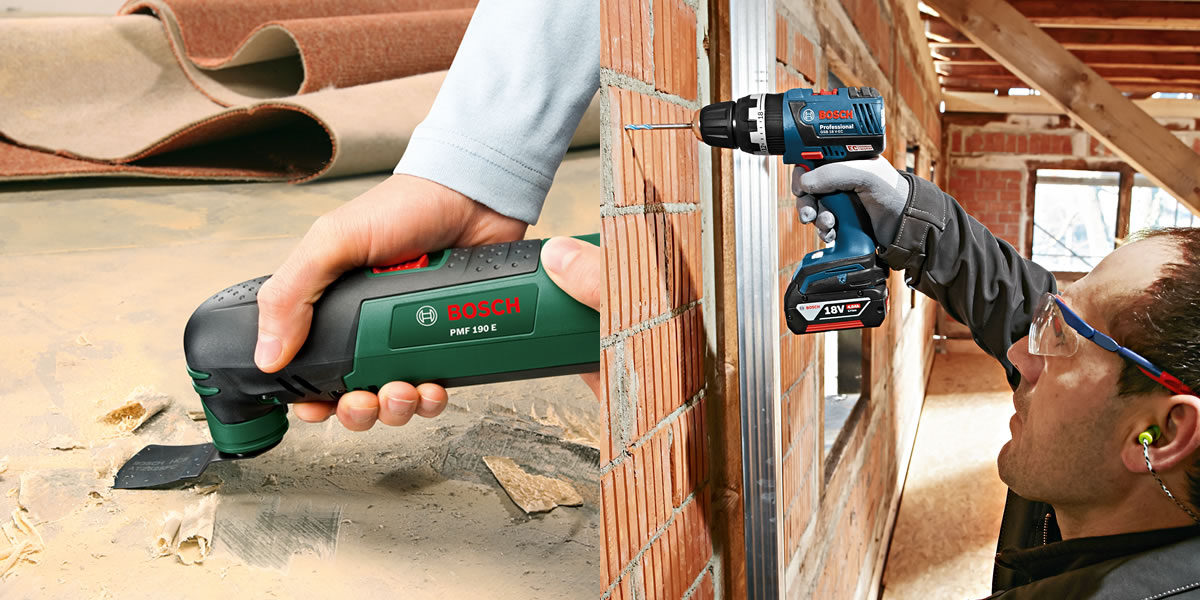
I like tools, I always have done and I still regularly use pliers, wire cutters and a ball pein hammer that I bought when I started my apprenticeship in 1967. I bought my first power tool in the mid 1970s which was a British made, two speed, 420W Wolf Sapphire and which, believe it or not, is still my only ‘go to’ corded drill.
Wolf and other power tool names (remember the old Stanley Bridges drills and Arcoy Dovetailer?) have long since gone to the wall and have been replaced by the new kids on the block, such as the Makita, Festool and Hitachi brands. One such maker is, of course, Bosch and we stock a huge variety of their power tools, both with tails and without...those are the ones with the new fangled battery things, although the Luddite in me suspects they’ll never take off!
Seriously though, the Bosch range, unlike some other brands, is deliberately split into two quite distinct areas: the lean green tools pitched at the DIY spectrum of users and the tougher, steel blue stuff ranged squarely at the big booted, multi-tool-belted, check-shirted trade users (see, I was paying attention the other night watching ‘The Company Men’).
The green stuff is built to a less demanding specification, as they’re intended for occasional use at weekends to cut the odd bit of shelving or to drill a few holes in the wall to hang a new cupboard. They’re not expected to last quite so long and, as a consequence, they don’t stretch the pocket quite so unnervingly.
Bosch blue tools, on the other hand, are built to an altogether more rigorous standard, designed to go the distance and do the job in a multitude of different trades. However, that didn’t prevent me from burning out the motor in one of their corded drills a few years ago; but my guess is that it was an exception to the rule.
Whilst it’s great to own top quality gear, there’s a convincing argument to suggest that a trade user might not necessarily want to load his (or her) van up with the latest, all singing, all dancing, hi-tec blue Bosch power drill, for example, when a much simpler, cheaper, green one will do the job just as effectively.
This idea might be even more appealing when a green drill has been bought for one job and if it burns out or, Heaven forbid, some light fingered ‘colleague’ takes a shine to it (and it’s been known to happen), it’s not too exorbitant to replace it. To do the same with a Festool would cause me to shed some tears together with a distinct sucking of the teeth as the credit card was handed over.
This trend was noticed at first hand some years ago when the current AxHQ was being constructed and it caused some comment amongst the staff at the time. It would be extremely interesting to hear your views on this issue, not just as a trade user, but also if you use power tools for any application, be it on site, at home, college or in the workshop.
If you’d like to contribute to the conversation, please pitch in on our Facebook page or at the end of this entry and as Jim Rockford would have said "leave your name and number. I'll get back to you..."
I like tools, I always have done and I still regularly use pliers, wire cutters and a ball pein hammer that I bought when I started my apprenticeship in 1967. I bought my first power tool in the mid 1970s which was a British made, two speed, 420W Wolf Sapphire and which, believe it or not, is still my only…
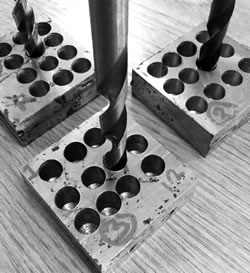 I'm a member of the Product Development team here at Axminster (affectionately known as 'Spot') and for my first post I'd like to put one of our top selling drill bit sets through its paces – this is what I discovered!
I'm a member of the Product Development team here at Axminster (affectionately known as 'Spot') and for my first post I'd like to put one of our top selling drill bit sets through its paces – this is what I discovered!
Step One of my test was to actually take a look at the set (a good place to start I thought). The first thing of note is that the drills are coated with TiN – what is this? Tin? Well tin is not much harder than lead, so why coat a drill bit with it? Also, surely tin is silver coloured and these bits definitely have a gold appearance! A quick Google search soon put me right. TiN is short for Titanium Nitride, a gold coloured ceramic coating which is nearly as hard as diamond, which improves the life of the drill by a factor of 3 and helps to reduce friction – now it was all beginning to make sense!
Step Two was to decide how to actually test the bits and to see how they performed against higher priced drill bits. An easy decision really – take three 10mm drill bits and drill 12 holes with each into a steel block whilst ensuring consistency across feed rates and drill speeds.
Result! After drilling 36 holes (!) the TiN coated drills performed most impressively and certainly it was almost impossible to discern any real difference between the three bits in use. I have to say that in terms of value for money and performance the Axminster drill bits would be my recommendation every time.
Did they pass the Spot Test? YES
Would I recommend them to a friend? YES
Would I recommend them to someone who can’t be bothered to sharpen bits? YES
Would I put them on my Christmas list? YES
That’s four YES’s – it doesn’t get much better than that!
-
Axminster Workshop 170 Piece High Speed Steel Ground Drill Bit SetFrom £69.98 £58.32 From £62.99
I’m a member of the Product Development team here at Axminster (affectionately known as ‘Spot’) and for my first post I’d like to put one of our top selling drill bit sets through its paces – this is what I discovered! Step One of my test was to actually take a look at the set (a good place to start I thought). The…



